STARCORE International Mines Ltd.
San Martin Mine NI 43-101 Technical Report: Updated Mineral Resource and Reserve
National Instrument 43-101 Technical Report:
Updated Mineral Resource and Reserve Estimates for the
San Martin Mine, Querétaro State, México
Effective Date: April 30, 2022
Report Date: July 18, 2022
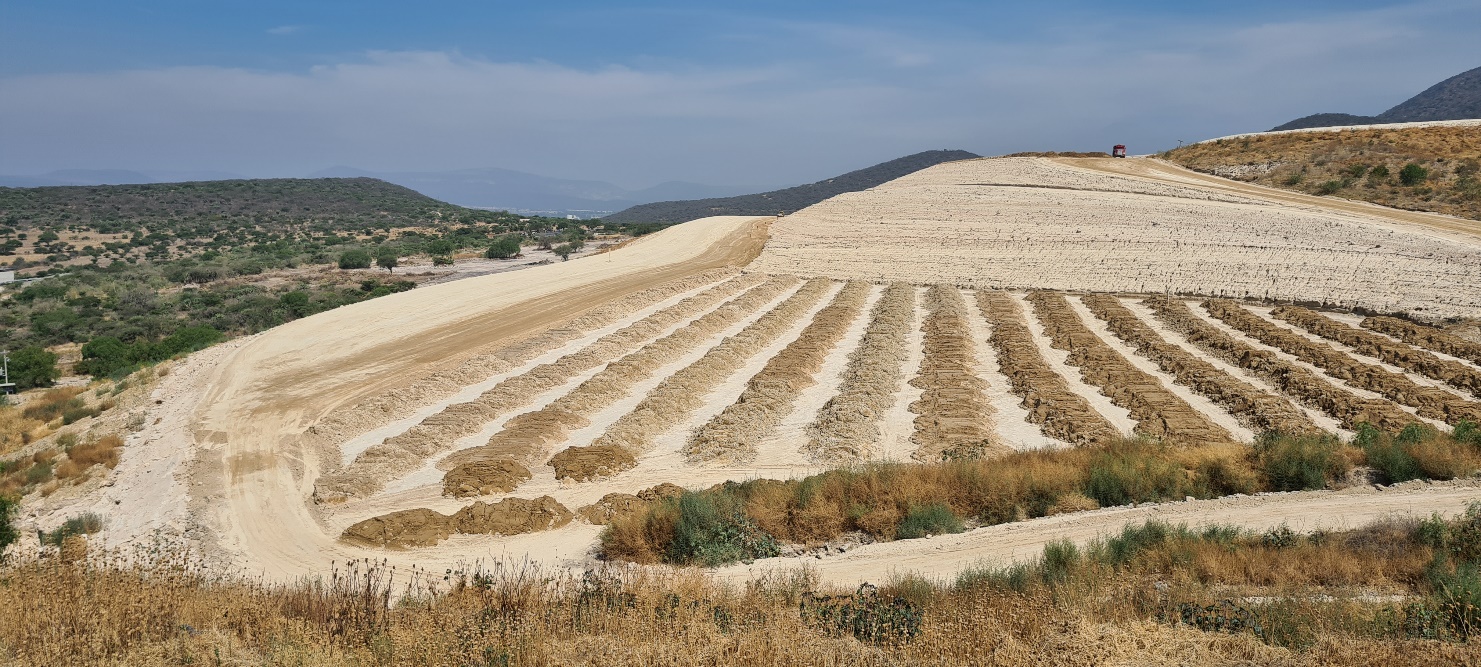
Prepared for:
STARCORE INTERNATIONAL MINES LTD
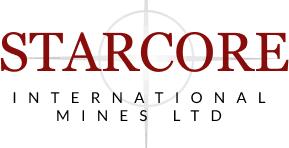
Suite 750 - 580 Hornby Street Box 113
Vancouver, BC
Canada, V6C 3B6
Prepared by:
Erme Enriquez C.P.G., BSc, MSc
STARCORE International Mines Ltd.
San Martin Mine NI 43-101 Technical Report: Updated Mineral Resource and Reserve
IMPORTANT NOTICE
This report was prepared as a National Instrument 43-101 Technical Report for Starcore International Mines Ltd. (SIM) by Erme Enriquez, CPG (QP). The quality of information, conclusions, and estimates contained herein is consistent with the scope of Mr. Enriquez services based on: 1) information available at the time of preparation, 2) data supplied by outside sources, and 3) the assumptions, conditions, and qualifications set forth in this report. This report is intended for use by SIM subject to the terms and conditions of its contract with Mr. Enriquez, who permits SIM to file this report with Canadian Securities Regulatory Authorities pursuant to National Instrument 43-101, Standards of Disclosure for Mineral Projects. Except for the purposes legislated under provincial securities law, any other use of this report by any third party is at that party’s sole risk.
Erme Enriquez, CPGJuly 18, 2022i
STARCORE International Mines Ltd.
San Martin Mine NI 43-101 Technical Report: Updated Mineral Resource and Reserve
CERTIFICATE OF QUALIFIED PERSSON
I, Erme Enriquez, CPG, do hereby certify that:
1. | I am independent of the issuer applying all the tests in section 1.5 of NI 43-101. |
2. | I am a graduate of the Universidad de Sonora having obtained the degree of BSc in 1983 and from Colorado School of Mines obtained the degree of MSc in 1996, both in Geological Engineering. |
3. | I am a registered member of the Association of Professional Geologists, CPG 11214. I am also a Fellow of the Society of Economic Geologists (SEG) and a member of the Asociación de Ingenieros de Minas Metalurgistas y Geólogos de México (AIMMGM). |
4. | I have been employed in the mining industry continuously since 1983. Since 1985 I have performed resource and reserve estimating in several commodities, including extensive experience in gold and silver and base metals deposits. |
• | Underground production geologist to Exploration Manager for Luismin-Wheaton River from 1983 to 2003. |
• | Exploration Manager Mexico, Capstone Mining………...……….……….2003-2004 |
• | Director Exploration and Development Canasil Resources…....…….2004-2022 |
• | Consulting Geologist……………………………………………………….……………2004-present |
5. | I have read the definition of “Qualified Person” set out in National Instrument 43-101(NI 43-101) and certify that by reason of my education, affiliation of my professional association and past relevant work experience, I fulfil the requirements to be a “Qualified Person” for the purposes of NI 43-101. |
6. | I personally inspected the San Martin Mine June 7 through June 10, 2022. I have been a reviewer of previous reserve reports on the San Martin Mine from 1998 to 2002 for Minas Luismin, SA de CV (former owner of the mine). |
7. | I have had prior involvement with the property that is the subject of this Technical Report as a QP author of a previous (2018 and 2019) NI 43-101 Technical Report. |
8. | I have read the instrument and Form 43-101F. The Technical Report titled “National Instrument 43-101 Technical Report: Updated Mineral Resource and Reserve Estimates for the San Martin Mine, Queretaro State, Mexico, as of April 30, 2022”, which was prepared from information available as of April 30, 2022, and has been prepared in compliance with the instrument and form. I am responsible for this report. |
9. | As of the date of this certificate and as of the effective date of the Technical Report, to the best of my knowledge, information and belief, the Technical Report contains all scientific and technical information required to be disclosed to make the report not misleading. |
10. | I have read National Instrument 43-101 and Form 43-101F1, and the Technical Report has been prepared in compliance with that instrument and form. |
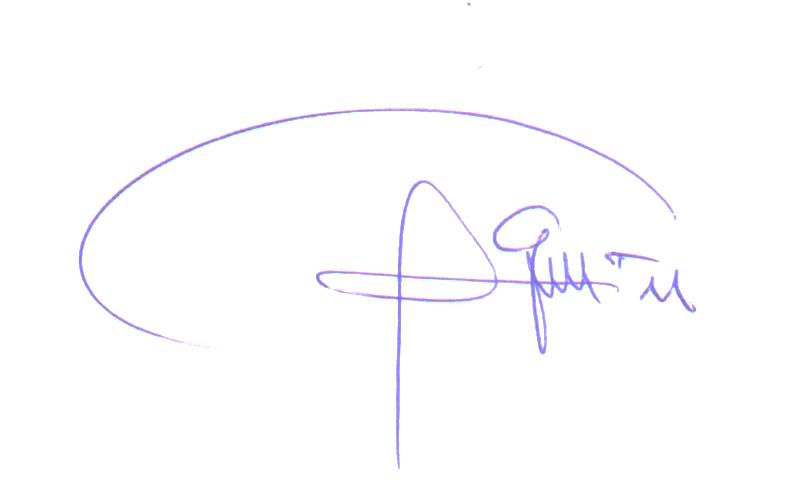
 Dated this 18th day of July 2022
Dated this 18th day of July 2022
_________________________________
Erme Enriquez, CPG BSc, MSc
Erme Enriquez, CPGJuly 18, 2022ii
STARCORE International Mines Ltd.
San Martin Mine NI 43-101 Technical Report: Updated Mineral Resource and Reserve
TABLE OF CONTENTS
IMPORTANT NOTICEi
CERTIFICATE OF QUALIFIED PERSSONii
ACRONYMS AND ABBREVIATIONSix
1.0SUMMARY1
1.1Introduction1
1.2Property Description and Ownership1
1.3History1
1.4Geology and Mineralization2
1.5Mineral Resource Estimate2
1.6Mineral Reserve Estimate4
1.7Conclusions and Recommendations5
2.0INTRODUCTION7
2.1Issuer and Terms of Reference7
2.2Sources of Information7
2.3Qualified Person8
2.4Units and Currency8
3.0RELIANCE OF OTHER EXPERTS9
4.0PROPERTY DESCRIPTION AND LOCATION10
4.1Property Description10
4.2Property Location10
4.3Mineral Concessions and Agreements12
4.4Permits and Environmental Liabilities14
5.0ACCESSIBILITY, CLIMATE, LOCAL RESOURCES, INFRASTRUCTURE AND PHYSIOGRAPHY14
5.1Access14
5.2Climate14
5.3Local Resources and Infrastructure15
5.4Physiography15
6.0HISTORY16
7.0GEOLOGICAL SETTING AND MINERALIZATION19
7.1Regional Geology19
7.2Property Geology and Mineralization22
6.2.1Las Trancas Formation22
Erme Enriquez, CPGJuly 18, 2022iii
STARCORE International Mines Ltd.
San Martin Mine NI 43-101 Technical Report: Updated Mineral Resource and Reserve
6.2.2El Doctor Formation22
6.2.3Soyatal–Mezcala Formation22
6.2.4Igneous Rocks22
6.2.5Andesite/Dacite22
8.0DEPOSIT TYPE24
9.0EXPLORATION27
9.1Channel Samples28
10.0DRILLING28
10.1Collar and Downhole Surveys29
10.2Drill Core Sampling30
10.3Core Logging30
10.4Important Drilling Results31
11.0SAMPLE PREPARATION, ANALYSES AND SECURITY33
11.1Sample preparation and Analysis34
11.1.1Underground Channel Samples34
11.1.2Diamond Drill Core Samples34
11.2Security, Storage, and Transport34
11.3 Quality Control (QA/QC)35
11.3.1Standards35
11.3.2Blanks35
11.3.3Duplicates35
11.4:QP Opinion37
12.0DATA VERIFICATION37
12.2Comment on Data Verification38
13.0MINERAL PROCESSING AND METALLURGICAL TESTING38
13.1Process of the Benefit Plant39
13.1.1Crushing Area40
13.1.2Grinding Area40
13.1.3Chemical Treatment Area40
13.1.4Tailings Filtration Area40
13.1.5Merrill-Cowe Area41
13.1.6Smelting Area41
13.2Comment on Mineral Processing and Metallurgical Testing and Recoveries41
13.3Data Adequacy41
Erme Enriquez, CPGJuly 18, 2022iv
STARCORE International Mines Ltd.
San Martin Mine NI 43-101 Technical Report: Updated Mineral Resource and Reserve
13.1Metallurgical Testing and Recovery41
13.2Data Adequacy42
14.0MINERAL RESOURCE ESTIMATES45
14.1Introduction and Qualified Person45
14.2Density45
14.3Methodology45
14.4Definition Mineral Resource46
15.0MINERAL RESERVE ESTIMATE49
15.1Introduction49
15.2Methodology50
15.3Reconciliation of Mineral Reserves to Production51
15.4Mineral Reserve Statement52
15.5Current Reserve Estimate Parameters54
15.5Factors that may Affect the Reserve Calculation54
16.0MINING METHODS57
16.1Mining Operations57
16.2Mining Method57
16.3Mining Method Description58
16.4Drilling59
16.5 Blasting59
16.6 Mucking59
16.7Haulage of Ore60
16.8Geotechnical Review60
16.9Ventilation60
16.10Dewatering60
16.11Mining Equipment62
16.12Comments on the Mine Operations62
17.0RECOVERY METHODS64
18.0PROJECT INFRASTRUCTURE64
18.1Buildings65
18.2Processing Plant65
18.3Waste Rock65
18.4Tailings65
18.5Power and Electrical65
18.6Water Usage66
Erme Enriquez, CPGJuly 18, 2022v
STARCORE International Mines Ltd.
San Martin Mine NI 43-101 Technical Report: Updated Mineral Resource and Reserve
18.7Logistics, supplies and Administration66
19.0MARKET STUDIES AND CONTRACTS69
20.0ENVIRONMENTAL STUDIES, PERMITTING AND SOCIAL OR COMMUNITY IMPACT71
20.1 General71
20.2Permitting72
20.3Permitting Requirements and Status72
20.4Surface Water Management Plan73
20.5Tailings Dam and Reforestation74
20.6Social Community Impact74
20.6Comment on Environmental Compliance, Permitting, and Local Engagement76
21.0CAPITAL AND OPERATING COSTS77
21.1Capital Costs77
20.2Operating Costs77
22.0ECONOMIC ANALYSIS78
23.0ADJACENT PROPERTIES80
24.0OTHER RELEVANT DATA AND INFORMATION80
25.0INTERPRETATION AND CONCLUSIONS80
25.1Geology and Resources80
25.1.1Data Verification80
25.1.2Mineral Reserve Estimates81
25.1.3Exploration81
25.2Conclusions81
26.0RECOMMENDATIONS82
26.1Geology82
26.1.1Database82
26.1.2Underground Sampling82
26.1.3QA/QC Sampling82
26.1.4Umpire Sampling83
26.1.5Resource Estimation83
26.1.6Exploration83
26.2Mining83
26.3Process83
26.4Environmental83
27.0REFERENCES84
Erme Enriquez, CPGJuly 18, 2022vi
STARCORE International Mines Ltd.
San Martin Mine NI 43-101 Technical Report: Updated Mineral Resource and Reserve
LIST OF TABLES
Table 1-1:Mineral Resources Inferred and Indicated, San Martín Mine4
Table 1-2:Proven and Probable Mineral Reserves, Effective Date April 30, 20225
Table 4-1:San Martin Mines Concessions Controlled by CMPB12
Table 6-1:Summary of production for the San Martín Mine (from 1993 to April 30, 2022)18
Table 10-1:Summary of drill hole programs performed by MICO and CMPB29
Table 10-2:Drill Results of the San Martin Body Extension31
Table 10-3:Highlights of Drill Results at Area 28 Oreshoot32
Table 14-1:Inferred and Indicated Mineral Resources at the San Martín Mine49
Table 15-1:Resources Transformed into Reserves from April 2017 to April 202252
Table 15-1:Proven and Probable Mineral Reserves, Effective Date April 30, 202253
Table 16-1:Table for choosing the mining method59
Table 16-2:List of Mining Equipment used at the San Martin Mine63
Table 20-1:San Martin Mine Recent Environmental Studies (Environmental Department)72
Table 20-2:List of Permits and Status (Environmental Department)73
Table 20-3:Neighboring community population at San Martin mine75
Table 21-1:San Martin Capital Costs77
Table 20-2:Mine Operating Cost Summary78
Table 22-1:Economic Model Input Parameters79
Table 22-2:LOM Plan Summary79
LIST OF FIGURES
Figure 4-1:San Martin Mine Location Map11
Figure 4-2:San Martin Mine and Surrounding Area Property Map13
Figure 5-1:Physiographic map of Mexico showing the location of the San Martin Mine between the Volcanic Axis, Sierra Madre Oriental, and the Central Plateau (after Raisz, 1964)16
Figure 7-1:Regional geological map of the surrounding San Martin Mine. Taken from Nuñez-Miranda, 200720
Figure 7-2:Generalized Stratigraphic Column of the San Martin Region21
Figure 7-3:Geologic Map of the San Martín Mine Project (After Labarthe, et. al, 2004)23
Figure 8-1:Generalized sketch of kinematic evolution and structural styles of fold-and-thrust faults in the San Martin Mine26
Erme Enriquez, CPGJuly 18, 2022vii
STARCORE International Mines Ltd.
San Martin Mine NI 43-101 Technical Report: Updated Mineral Resource and Reserve
Figure 8-2:Schematic cross section showing the key geologic elements of the main epithermal systems and their crustal depths. Modified after Buchanan, 1982, Berger and Eimon, 1983, Hollister, 1985, Corbett and Leach, 1996, dated December 2013.27
Figure 10-1:Map showing the swarm of drill holes done at the entire San Martin mine30
Figure 10-2:San Martin Orebody detected with Diamond Drill Holes31
Figure 10-3:Eastern extension of the 28 Orebody detected with diamond drilling32
Figure 13-1:Plant flow chart (from Processing Department)39
Figure 15-1:Typical vertical longitudinal section (VLP) showing the blocks of proven (red) and probable (yellow) ore in the San José II orebody55
Figure 15-2:Generalized vertical longitudinal section of the San Martin oreshoot showing the proven and probable reserve blocks56
Figure 16-1:Schematic of the overhead cut-and-fill mining method (from Mine Engineering, Survey & Planning, 2022)58
Figure 13-2:Ventilation circuit, at the San Martin Mine, by using Robbins raises ventilation intake and for exhausting (from Mine Engineering, Survey & Planning)61
Figure 16-3:Pumping systems in the entire San Martin Mine. Water is sent to surface for usage in the plant process ( from Mine Engineering, Survey & Planning)61
Figure 18-1:San Martin Infrastructure Map (from Planning Department)67
Figure 18-2:Portal of the incline for access to the San Martin mine68
Figure 18-3:General view of the processing plant at San Martin68
Figure 18-4:San Martin Tailings Dam, reforested69
Figure 19-1:Chart showing the prices (in US Dollars) from May 2017 to April 202270
Figure 20-1:Part of the nursery with endemic species of plants ready to be planted76
Figure 20-2:Reforested of the NE side of the main Tailings Pond76
Erme Enriquez, CPGJuly 18, 2022viii
STARCORE International Mines Ltd.
San Martin Mine NI 43-101 Technical Report: Updated Mineral Resource and Reserve
ACRONYMS AND ABBREVIATIONS
AbbreviationDescription Unit
Au Gold
AuEqGold equivalent
AgSilver
CFEComision Federal de Electricidad (Owned by the Federal Government)
CIMCanadian Institute of Mining
cmCentimetre
CMPBCompañía Minera Peña de Bernal
CPGCertified Professional Geologist
CRFCemented Rock Fill
COOChief Operating Officer
EEast
epepidote
Feiron
FAFire Assay
FSEFrankfurt Stock Exchange
ggram
g/tgrams per tonne
gptgrams per tonne
hahectare
HQdrill core size (63.5 mm)
ICPInductively Coupled Plasma
INEGIInstituto Nacional de Estadística y Geografía
IPinduced polarization
K-sparPotassium feldspar
kgkilogram
kmkilometre
kVAKilo-Volt Ampere
kWKilowatt
llitre
LOMLife of Mine
mmetre
m.a.s.l.metres above sea level
mmmillimetre
m2square metre
m3cubic metre
Mmillion
MaMillion years
MX$Mexican peso
NNorth
NENortheast
NI 43-101 National Instrument 43-101 Standards of Disclosure for Mineral Projects
NQdrill core size (47.6 mm)
NSRNet Smelter Return
Erme Enriquez, CPGJuly 18, 2022ix
STARCORE International Mines Ltd.
San Martin Mine NI 43-101 Technical Report: Updated Mineral Resource and Reserve
NWNorthwest
Oxoxide
oztroy ounce
oz/tounce per tonne
PENBER Peña de Bernal Lab
P.EngProfessional Engineer
P.GeoProfessional Geologist
ppbparts per billion
ppmparts per million
QA/QCQuality Assurance/Quality Control
QtzQuartz
QPQualified Person
S.A. de C.V. Sociedad Anónima de Capital Variable
SE Southeast
SEMARNATSecretaría del Medio Ambiente y Recursos Naturales
Sersericite
SGspecific gravity
SRMstandard reference material
SIMStarcore International Mines LTD
SWSouthwest
tontonne
TSXToronto Stock Exchange
US$United States dollar
UTMUniversal Transverse Mercator
WWest
WGMWatts, Griffis & McQuat, Ltd
WGSWorld Geodetic System
%Percent
°Cdegree Celsius
Gold equivalent
AuEq(g/t)= Au(g/t)+( Ag(g/t)/79.5)
Contained ounces
oz Au=[(Au g/t X tonnes)/1000]X 32.1507
Erme Enriquez, CPGJuly 18, 2022x
STARCORE International Mines Ltd.
San Martin Mine NI 43-101 Technical Report: Updated Mineral Resource and Reserve
1.0SUMMARY
1.1Introduction
Erme Enriquez (QP) was retained by STARCORE International Mines Ltd. (SIM) to complete an independent technical audit and to update the mineral resource and reserve estimates for the San Martin Mine (SM) located in Queretaro State, Mexico. The Mineral Reserve update has been performed by the San Martin´s mine personnel, all employees of SIM. SIM also provided the sections on geology, mining methods, project infrastructure, market studies and contracts, capital and operating costs, and economic analysis and a part of the conclusions and recommendations
Erme Enriquez is a Qualified Person under NI 43-101 and have no affiliation with SIM except that of independent consultant/client relationships. Mr. Enriquez has been an employee of Luismin-Wheaton River, first owner of San Martín, for more than 21 years and he participated in the supervision of the exploration and exploitation of San Martin from 1993 to 2003. Mr. Enriquez is responsible for assembling all items of the technical report and for preparing the Mineral Resource Estimate.
This report presents the results of QP efforts and is intended to fulfill the Standards of Disclosure for Mineral Projects according to Canadian National Instrument 43-101 (“NI 43-101”). This report was prepared in accordance with the requirements and guidelines set forth in Companion Policy 43-101CP and Form 43-101F1 (June 2011), and the mineral resources and reserves presented herein are classified according to Canadian Institute of Mining, Metallurgy and Petroleum (“CIM”) Definition Standards - For Mineral Resources and Mineral Reserves, prepared by the CIM Standing Committee on Reserve Definitions and adopted by CIM Council on May 10, 2014. The mineral resource and mineral reserve estimates reported here are based on all available technical data and information as of April 30th, 2022.
1.2Property Description and Ownership
The San Martin mine is located 47 kilometres, in straight line, northeast of the Queretaro City, Queretaro State, on local road No.100 and about 250 kilometres NW of Mexico City, near the towns of Bernal, Tequisquiapan and Ezequiel Montes. The San Martin mine underground mine has been in continuous operation since 1993.
The San Martin mine complex consists of 8 mining claims that cover 12,991.7805 hectares. The total annual land-holding costs are estimated to be US$105,190 dollars. All mineral titles and permits are held by Compañía Minera Peña de Bernal, S. A. de C. V. (CMPB), a direct, wholly owned subsidiary of SIM. A 3.0% net smelter returns royalty (“NSR”) is payable to Servicio Geológico Mexicano (“SGM”- Mexican Geological Survey) on the claims San Martin Fracc. A, Title 215262, San Martin Fracc. B, Title 215263, and San Martin Fracc. C, Title 215264.
1.3History
The deposit was discovered in the 18th century and high-grade mineralization reportedly was exploited by the Spaniards for approximately 40 years; however, no production records exist. The first records show the Ajuchitlán Mining and Milling Company produced an estimated 250,000 tonnes at a grade of 15 g Au/t and 100 g Ag/t from1900 to 1924.
Erme Enriquez, CPGJuly 18, 20221
STARCORE International Mines Ltd.
San Martin Mine NI 43-101 Technical Report: Updated Mineral Resource and Reserve
In 1982, the Mexican government, through the Council of Mineral Resources (CRM) staked a mining claim of 6,300 hectares which covered the area of the mine in its central part. In 1986 Minas Luismin negotiated with the CRM an option in the mining claims of his property for a payment of US $ 250,000 dollars and a royalty of 5%, which latter was reduced to 3% in 1996. Luismin was purchased by Wheaton River in 2003 and operated the mine until 2008, when SMI acquired the 100% of the rights to the property.
1.4Geology and Mineralization
The San Martín gold-silver district hosts classic, medium-grade gold-silver, epithermal vein deposits characterized by low sulphidation mineralization and adularia-sericite alteration. The San Martin veins are typical of most other epithermal silver-gold vein deposits in Mexico in that they are primarily hosted in the Upper Cretaceous black limestone and calcareous shales of the Soyatal-Mezcala Formation. Tertiary Lower Volcanic series of rhyolite flows, pyroclastics and epiclastics, overlain the sediments.
Mineralization at San Martín occurs in association with an epithermal low sulphidation, quartz-carbonate, fracture-filling vein hosted by a structure trending approximately N40°-60°E, dipping to the 50° to 90° to the southeast.
The San Martin structure has been known in distinct stages of exploration and has adopted several names, San José, San José II, San Martín, Cuerpo 28, Cuerpo 29, Cuerpo 30, Cuerpo 31, Cuerpo 32 and Cuerpo 33. The structure itself is offset by a series of faults of northeast trending that divides the oreshoots. The structure behaves vertical at the San José and San Martin areas (Tronco) and becomes flatter from Cuerpo 28 to 31 (Mantos), and mineralization follows the planes of the folded rocks.
The San Martin vein itself has been known underground traced for 2 km along trend, with widths between 1.5 to 30 metres and averages approximately 4.0 m. A secondary mineralized vein is located, both in the footwall and hangingwall, of the San Martin vein, on the western limb of the local fold that contains the mineralization. This structure is the Santa Elena and represents a good target for exploration to the NE and SE of San Martin.
1.5Mineral Resource Estimate
The mineral resource estimation for the San Martin Mine was completed following the requirements of Subpart 1300 of Regulation S-K (“Subpart 1300”) and align with Canada’s National Instrument 43-101 (“NI 43-101”) for which original estimates were prepared. The modeling and estimation of the mineral resources were completed on June 10, 2022, under the supervision of Erme Enriquez, qualified person with respect to mineral resource estimations under S-K 1300. The effective date of the resource estimate is April30, 2022.
The San Martin resources are classified in order of increasing geological and quantitative confidence in Proven and Probable, Inferred and Indicated categories in accordance with the “CIM Definition Standards for Mineral Resources and Mineral Reserves” (2014) and therefore NI 43-101, as is the Inferred Resources category.
In the years prior to mining by CMPB reserve and resource estimates were based on the assumptions and subject to rules defined by Luismin many years ago. In recent years, with the involvement of
Erme Enriquez, CPGJuly 18, 20222
STARCORE International Mines Ltd.
San Martin Mine NI 43-101 Technical Report: Updated Mineral Resource and Reserve
various professionals, it was recognized that mining methodology was changing due to factors such as:
| • | A greater percentage of production coming from narrow to wide steeply dipping vein structures. |
| • | Sub-horizontal Mantos mineralized structures that were somewhat narrower than historical Mantos. |
| • | Reopening and scavenging of the footwall mineralization in old stopes, where lower grade mineralization was not mined during times of lower gold prices. |
Based on the above mining changes and incorporating mining experience over the last eight years some of the original Luismin assumptions have been modified to improve tonnage and grade estimation for reserves. The assumptions used in this estimate are:
| • | A gold price of $1750 per ounce. |
| • | A silver price of $22.00 per ounce. |
| • | First quarters of 2022 operating costs of US$69.30 per metric dry tonne. |
| • | Average metallurgical recoveries of 86% for gold and 55% for silver. |
| • | Using the above price and cost assumptions the resultant calculated cutoff grade is approximately 1.41 g/t Au equivalent. |
| • | Specific gravity of 2.6 g/cm3 has been applied to all calculated mineralized volumes. |
| • | Mining dilution is applied to in situ mineralized zones, and recovery factors are applied to these diluted blocks using the following factors: |
Mining dilution of 20% of zero grade in horizontal mineralized zones (Mantos) mined by room and pillar.
| a) | Mining dilution of 20% of zero grade in steeply dipping mineralized zones mined by cut and fill. This dilution factor is modified by first applying a minimum 2-meter mining width to narrow zones. |
| b) | Remnant pillars left in room and pillar stopes are typically 20% of the total tonnage, i.e., 80% extraction. This recovery factor has been applied to sub horizontal mineralized zones. |
In addition to these factors reserve grades are lowered to reflect mined grades in ore blocks that have sufficient historical production to establish that mined grades are similar than estimated from exploration data. The reserves and resources estimated in this report are based on data available up until April 30, 2022.
The mineral resources reported here are classified as Measured, Indicated and Inferred according to CIM Definition Standards.
Total Indicated and Inferred Mineral Resources at the San Martin mine, estimated by SIM, are about 1,481,770 tonnes at a grade of 1.78 g Au/t and 14 g Ag/t. Inferred and Indicated Mineral Resources are not known to the same degree of certainty as Mineral Reserves and do not have demonstrated economic viability. A summary of resources is in Table 1-1.
Erme Enriquez, CPGJuly 18, 20223
STARCORE International Mines Ltd.
San Martin Mine NI 43-101 Technical Report: Updated Mineral Resource and Reserve
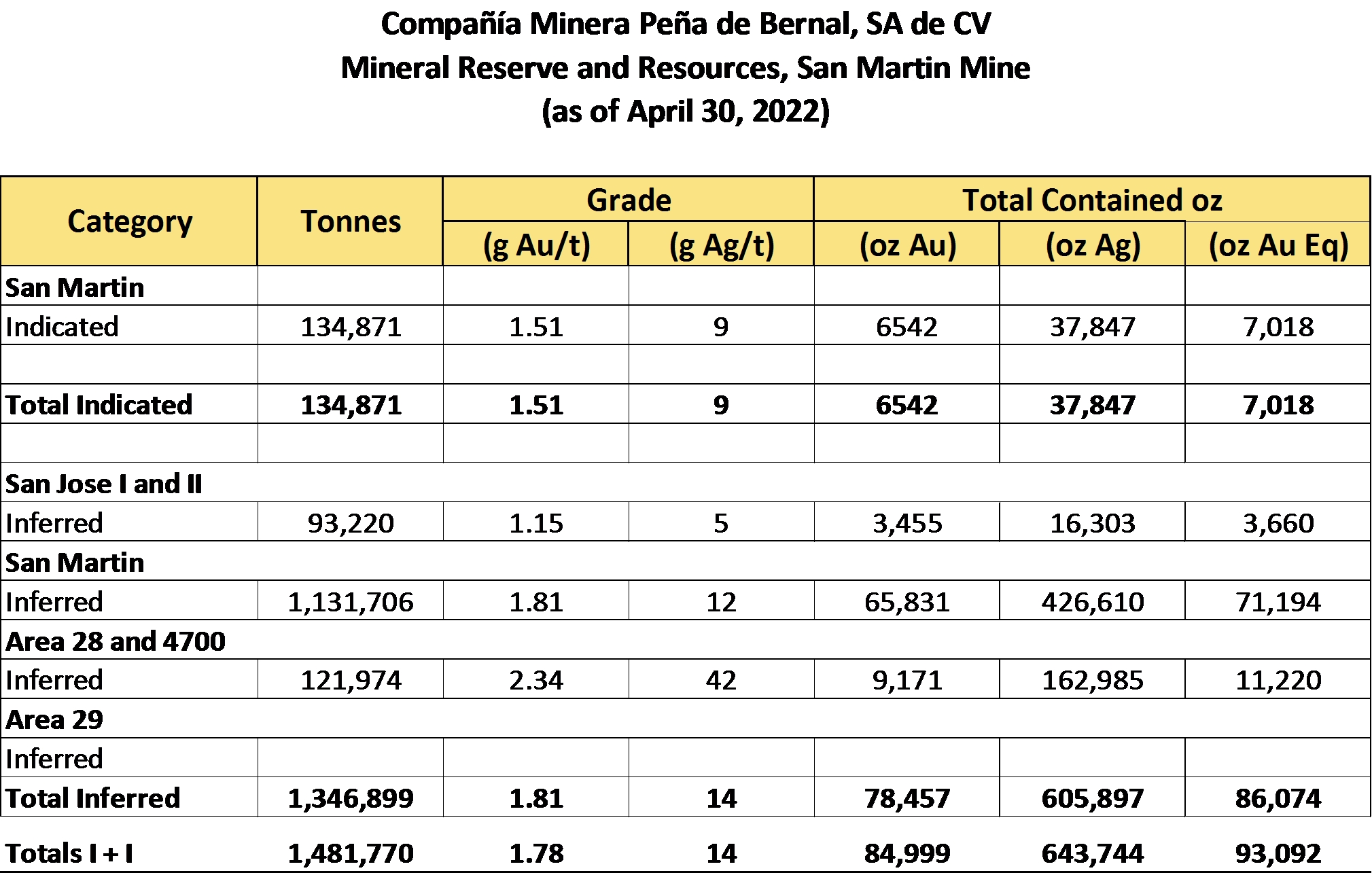 Table 1-1:Mineral Resources Inferred and Indicated, San Martín Mine
Table 1-1:Mineral Resources Inferred and Indicated, San Martín Mine
| • | Mineral resources have been classified into inferred and indicated in accordance with the |
| • | Tonnage is expressed in tonnes; metal content is expressed in ounces. Totals may not add up due to rounding. |
| • | Indicated and Inferred resource cut-off grades are based on a 1.41 g/t gold equivalent. |
| • | Metallurgical Recoveries were 86% gold and 55% silver. |
| • | Mining Recoveries of 90% were applied. |
| • | Minimum mining widths were 2.0 meters. |
| • | Dilution factors is 20%. Dilution factors are calculated based on internal stope dilution calculations. |
| • | Gold equivalents are based on a 1:79.5 gold:silver ratio. Au Eq= gAu/t + (gAg/t ÷ 79.5) |
| • | Price assumptions are $1750 per ounce for gold and $22 per ounce for silver. |
| • | Mineral resources are estimated exclusive of and in addition to mineral reserves. |
| • | Resources were estimated by SIM and reviewed by Erme Enriquez CPG. |
1.6Mineral Reserve Estimate
Mineral reserve estimates in this Report are reported following the requirements of Subpart 1300. Accordingly mineral resources in the Measured and Indicated categories have been converted to Proven and Probable mineral reserves respectively, by applying applicable modifying factors and are planned to be mined out under the LOM plan within the period of our existing rights to mine, or within the time of assured renewal periods of rights to mine.
Total Proven and Probable Mineral Reserves at the San Martin mine as of April 30, 2022, estimated by Geology staff and reviewed by QP, are 1,348,433 tonnes at a grade of 1.74 g Au/t and 13 g Ag/t
Erme Enriquez, CPGJuly 18, 20224
STARCORE International Mines Ltd.
San Martin Mine NI 43-101 Technical Report: Updated Mineral Resource and Reserve
(Table 1-2). This total includes Proven reserves of 144,331 tonnes grading 1.79 g/t Au and 14 g/t Ag along with Probable reserves of 1,204,102 tonnes grading 1.73 g/t Au and 13 g/t Ag.
Table 1-2:Proven and Probable Mineral Reserves, Effective Date April 30, 2022

| • | Reserve cut-off grades are based on a 1.41 g/t gold equivalent. |
| • | Metallurgical Recoveries were 86% gold and 55% silver. |
| • | Mining Recoveries of 90% were applied. |
| • | Minimum mining widths were 2.0 meters. |
| • | Dilution factors is 20%. Dilution factors are calculated based on internal stope dilution calculations. |
| • | Gold equivalents are based on a 1:79.5 gold - silver ratio. Au Eq= gAu/t + (gAg/t ÷ 79.5) |
| • | Price assumptions are $1750 per ounce for gold and $22 per ounce for silver. |
| • | Mineral resources are estimated exclusive of and in addition to mineral reserves. |
| • | Resources were estimated by SIM staff and reviewed by Erme Enriquez C.P.G. |
| • | Reserves are exclusive of the indicated and measured resources. |
| • | Tonnage is expressed in tonnes; metal content is expressed in ounces. Totals may not add up due to rounding. |
1.7Conclusions and Recommendations
The QP considers the San Martin resource and reserve estimates presented here to conform with the requirements and guidelines set forth in Companion Policy 43-101CP and Form 43-101F1 (June 2011), and the mineral resources and reserves presented herein are classified according to Canadian Institute of Mining, Metallurgy and Petroleum (“CIM”) Definition Standards - For Mineral Resources and Mineral Reserves, prepared by the CIM Standing Committee on Reserve Definitions and adopted by CIM Council on May 10, 2014. These resources and reserves form the basis for EDR’s ongoing mining operations at the San Martin Mine.
The QP is unaware of any significant technical, legal, environmental, or political considerations which would have an adverse effect on the extraction and processing of the resources and reserves located at the San Martin Mine. Mineral resources which have not been converted to mineral reserves, and do not demonstrate economic viability shall remain mineral resources. There is no certainty that all or any part of the mineral resources estimated will be converted into mineral reserves.
Erme Enriquez, CPGJuly 18, 20225
STARCORE International Mines Ltd.
San Martin Mine NI 43-101 Technical Report: Updated Mineral Resource and Reserve
The QP considers that the mineral concessions in the San Martin mining district controlled by SIM continue to be highly prospective both along strike and down dip of the existing mineralization.
SIM’s San Martin Mine has an extensive mining history with well-known gold and silver bearing breccia-vein systems. Ongoing exploration has continued to demonstrate the potential for the discovery of additional resources at the project and within the mine and the surrounding district. Since SIM took control of the
San Martin mine, new mining areas have enabled SIM to increase production by providing additional sources of mill feed. SIM’s operation management teams continue to search for improvements in efficiency, lowering costs and researching and applying low-cost mining techniques.
Recommendations for further work:
| • | Continue the advance of the underground exploration at Body 32 and 33, the exploration of Body 28 with drifting at the centra zone and the exploration of San José FW and Santa Clara HW (both known as Sarah) at the south area. |
| • | Continue to collect specific gravity measurements and refine current estimation of specific gravity to have a more reliable measure. |
| • | Implement procedure of duplicate channel samples in stopes and drifts, to ensure the grade and thickness and to serve as duplicates of channel samples. |
| • | Implement procedure for standard and duplicate samples, in channel samples and drill core as well. The certified standards will give greater certainty to the QA/QC procedure for the evaluation and greater reliability in reserves and resources. |
| • | Perform detailed model reconciliation on stopes. A strict control in rebates will help to have a reliable number at the end of the year. |
| • | Complete a geochemical and structural model for future work to support the estimation domains. The QP notes that there is a large amount of multi-element data that could support a geochemical model to better understand the impact of elements such as antimony, arsenic, mercury, etc., on the gold distribution and recoveries |
Erme Enriquez, CPGJuly 18, 20226
STARCORE International Mines Ltd.
San Martin Mine NI 43-101 Technical Report: Updated Mineral Resource and Reserve
2.0INTRODUCTION
2.1Issuer and Terms of Reference
Starcore International Mines LTD (“SIM”) is a Canadian based mining and exploration company actively engaged in the exploration, development, and production of mineral properties in Mexico. SIM is headquartered in Vancouver, British Columbia with management offices in Mexico City, Mexico, and is listed on the Toronto (TSX:SAM), Frankfurt (FK:V4JA) stock exchanges and OTCQB Markets (. The company has one currently active mining property in Mexico, the San Martín Property in northeast Queretaro State. SIM has retained Mr. Enriquez to complete an independent technical audit and update of the mineral resource and reserve estimates for the San Marín Mine Project (the “Project”) located within the Municipality of Colón. This report presents the results of Mr. Enriquez efforts and is intended to fulfill the Standards of Disclosure for Mineral Projects according to Canadian National Instrument 43-101 (“NI 43-101”).
This report was prepared in accordance with the requirements and guidelines set forth in NI 43-101 Companion Policy 43-101CP and Form 43-101F1 (June 2011), and the mineral resources and reserves presented herein are classified according to Canadian Institute of Mining, Metallurgy and Petroleum (“CIM”) Definition Standards - For Mineral Resources and Mineral Reserves, prepared by the CIM Standing Committee on Reserve Definitions and adopted by CIM Council on May 10, 2014. The mineral resource and mineral reserve estimates reported here are based on all available technical data and information as of April 30, 2022.
2.2Sources of Information
In preparation of this report, various historical engineering, geological and management reports compiled about the Mine or site were reviewed and supplemented by direct site examinations and investigations. All the data files reviewed for this study were provided by CMPB in the form of hard copy documents, electronic .pdf reports, .xls files, email correspondence, and personal communication with management and personnel from San Martin. Work completed by SM includes several decades of underground mining, drilling, and sampling, trenching, metallurgical testing, and geophysical surveying.
The main sources of information in preparing this report are:
A portion of the information and technical data for this study was obtained from the following previously filed NI 43-101 Technical Reports:
Spring, V., McFarlane, G.R., 2002, A Technical Review of the Tayoltita, Santa Rita, San Antonio, La Guitarra and San Martin Operating Silver and Gold Mines in Mexico. Watts, Griffis and McOuat NI 43-101 report prepared for Wheaton River Minerals Ltd.
Spring, V. (2005), An Audit of the Mineral Reserves/Resources Tayoltita, Santa Rita, San Antonio, and San Martin Mines as of December 31, 2004. For Wheaton River Minerals LTD.
Gunning, D. R. and Whiting, B., 2009, Reserves and Resources in the San Martín Mine, Mexico, as of July 31, 2009. For Starcore International Mines LTD.
Erme Enriquez, CPGJuly 18, 20227
STARCORE International Mines Ltd.
San Martin Mine NI 43-101 Technical Report: Updated Mineral Resource and Reserve
Gunning, D. R. and Campbell, J., 2011, Reserves and Resources in the San Martín Mine, Mexico, as of July 31, 2011. For Starcore International Mines LTD.
Campbell, J., 2012, Reserves and Resources in the San Martín Mine, Mexico, as of July 31, 2012. For Starcore International Mines LTD.
Gunning, D. R., 2013, Reserves and Resources in the San Martín Mine, Mexico, as of July 31, 2013. For Starcore International Mines LTD.
Gunning, D. R. and Campbell, J., 2014, Reserves and Resources in the San Martín Mine, Mexico, as of July 31, 2014. For Starcore International Mines LTD.
Enriquez, E., 2018, Reserves and Resources in the San Martin Mine, Queretaro State, Mexico, as of April 30, 2018. For Starcore International Mines LTD.
Enriquez, E., 2019, Reserves and Resources in the San Martin Mine, Queretaro State, Mexico, as of September 30, 2019. For Starcore International Mines LTD.
2.3Qualified Person
Erme Enriquez, CPG, has over 35 years of professional experience as geologist, both as an employee and a consulting geologist and has contributed to numerous mineral resource projects, including silver, gold, and polymetallic resources throughout Mexico past fifteen years. Mr. Enriquez is responsible for the full content of this report.
As Qualified Person, Mr. Enriquez conducted an on-site inspection of the San Martín property during June 07 to 10, 2022. While on site, Mr. Enriquez reviewed SIM’s current operating procedures and associated drilling, logging, sampling, quality assurance and quality control (QA/QC), grade control, and mine planning (short, medium, and long term) procedures, also inspected the laboratories at the San Martín facilities as well as the underground operations and plant.
Mr. Enriquez met with Mr. Martin Aguilar, who is the general mine manager and all personnel of the geology department to review the geologic understanding, sampling methods and types, modeling (resources, reserves, and grade control), prior to inspecting the procedures in the mine and office for collecting and handling the data. Once the geology department processes were reviewed, Mr. Enriquez discussed with the mine planning and survey department the process for short, medium, and long-term mine planning. Reconciliation was discussed with both departments and the plant supervisors. Mr. Enriquez also met with the staff of the Department of the Environment to obtain information regarding permits and environmental liabilities in the unit. The assay laboratory was toured, and the procedures were reviewed with the laboratory superintendent.
2.4Units and Currency
All units used in this report are in a metric system. Tonnages are shown as tonnes (1,000 kg), linear measurements as metres (“m”), or kilometres (“km”) and precious metal values as grams (“g”). Grades are grams of gold per tonne (“Au g/t”), and grams of silver per tonne (“Ag g/t”). All economic data is quoted in US dollars (“US$”). When peso amounts required conversion into US dollars, the
Erme Enriquez, CPGJuly 18, 20228
STARCORE International Mines Ltd.
San Martin Mine NI 43-101 Technical Report: Updated Mineral Resource and Reserve
peso exchange rate used was 20.50 pesos equivalent to US$1.00 as this was the rate used in the April 2021 to April 2022 mine operating budget.
3.0RELIANCE OF OTHER EXPERTS
The author of this report is Qualified Person for those areas as identified in the Certificates of Qualified Person attached to this report. In preparing this report, the author relied heavily on various geological maps, reports and other technical information, mostly unpublished proprietary information collected on-site and provided to the author by SIM.
Much of the original information is in Spanish and English, with translations from Spanish to English of key and relevant technical documents provided by SIM. For this current report, most of the technical information was translated by geologist employed by SIM, although legends and annotations on many of the maps and sections are in Spanish or have been translated to English. I occasionally checked a few key parts of the translations and found them good.
From my experience on this report and the other previous reports I have done for other companies, I believe the translations provided to us are credible and generally reliable, but I cannot attest to their absolute accuracy.
Overall, the technical information I reviewed is very well-documented, comprehensive and of good technical quality. It clearly was gathered, prepared, and compiled by various competent technical persons, but not necessarily Qualified Persons as currently defined by NI 43-101. In recent years, the voluminous information collected by SIM has been carefully reviewed by Mr. David R. Gunning, P. Eng. and Joseph W. Campbell, P. Geo. whom are a Qualified Persons as defined by NI 43-101.
Because I am not expert in land, legal, environmental, and related matters, I have relied (and believe there is a reasonable basis for this reliance) on various other individuals who contributed the information regarding legal, land tenure, corporate structure, permitting, land tenure and environmental issues discussed in this report. Specifically, David Gunning and Joseph Campbell, both experienced independent Qualified Person as defined by NI 43-101.
This report summarizes the Mineral Resource and Reserve estimates for the San Martin mine, effective as of April 30, 2022, using the procedures which have been audited by both PAH and WGM in the past. These procedures have been verified by David R. Gunning, P. Eng. And Joseph W. Campbell, P. Geo, whom virtue of their education and experience is an independent Qualified Persons as defined by NI 43-101.
The information, conclusions, opinions, and estimates contained herein are based on:
| • | information available to the authors at the time the report was prepared |
| • | assumptions, conditions, and qualifications as outlined in this report |
| • | production and expenditure data, reports, and other information supplied by CMPB and other third-party sources. |
CMPB reported to the authors that, to the best of its knowledge, there is no known litigation that could potentially affect the mine operations.
Erme Enriquez, CPGJuly 18, 20229
STARCORE International Mines Ltd.
San Martin Mine NI 43-101 Technical Report: Updated Mineral Resource and Reserve
4.0PROPERTY DESCRIPTION AND LOCATION
4.1Property Description
The San Martin mine is an underground gold-silver mining complex that has been in operation since 1993. It produces gold-silver by using the Merrill–Crowe Process technique for removing gold from the solution obtained by the cyanide leaching of gold and silver ores. The mine operates 365 days per year on a 24 hour per day schedule. Mining and ore processing operations are currently in production and the mine is considered a production stage property.
4.2Property Location
The San Martin Mine is located 47 km in a straight line to the NE of the city of Queretaro, 10 km NW of Ezequiel Montes, 4 km SW of the Peña de Bernal and 25 km to the NW of Tequisquiapan, in the State of Querétaro. Territorially, it is located within the municipality of Colón, at the UTM coordinates of 398,350E and 2292,700N and an average elevation of 2,130 m.a.s.l. (Figure 4-1)
Erme Enriquez, CPGJuly 18, 202210
STARCORE International Mines Ltd.
San Martin Mine NI 43-101 Technical Report: Updated Mineral Resource and Reserve

Figure 4-1:San Martin Mine Location Map
Erme Enriquez, CPGJuly 18, 202211
STARCORE International Mines Ltd.
San Martin Mine NI 43-101 Technical Report: Updated Mineral Resource and Reserve
4.3Mineral Concessions and Agreements
Compañía Minera Peña de Bernal S.A. de C.V., a wholly owned SIM subsidiary, holds eight mining concessions covering 12,991.7805 hectares at the San Martin Mine in the State of Querétaro (Figure 4-2). Claims are indicated by its Title number. Right payments are done twice a year, every semester. The San Martin Mine presently consists of two underground mines, San José and San Martin. The San Martin mine is approximately 800 meters NNE of the San José mine. Minas Luismin, SA de CV (former owner of the mine) commenced mining in late 1993 on the San José deposit, with an open pit operation that was later abandoned and mining continued underground methods over the San José and the San Martin oreshoots.
Mining regulations in Mexico provides that all concessions are to be valid for a period of 50 years. Taxes are based on the surface area of each concession and the time of expedition of the title and are due in January and June of each year. All tax payments have been paid by SMI to date. Currently, annual claim-maintenance fees are the only federal payments related to mining claims, and these fees have been paid in full to January 31, 2022. The current annual holding costs for the San Martin mining claims are estimated at US$224,000 Dollars (Table 4-1).
Table 4-1:San Martin Mines Concessions Controlled by CMPB

Erme Enriquez, CPGJuly 18, 202212
STARCORE International Mines Ltd.
San Martin Mine NI 43-101 Technical Report: Updated Mineral Resource and Reserve
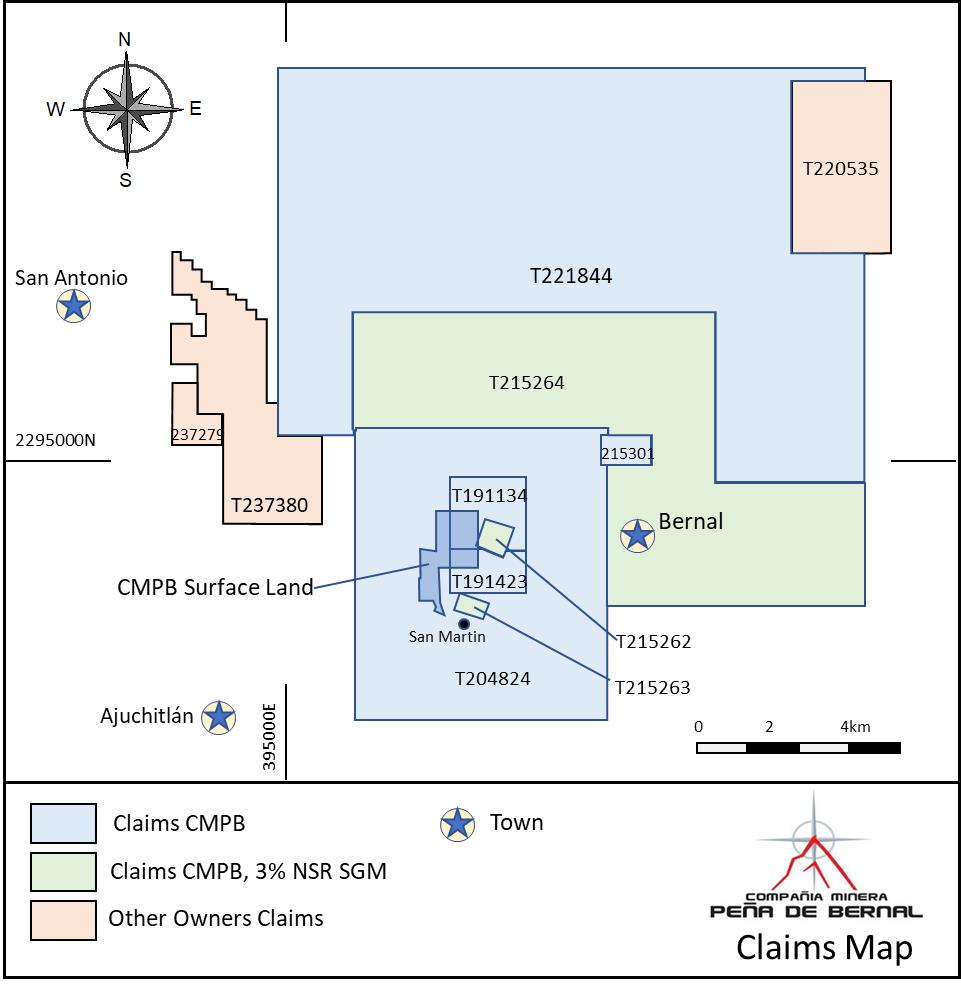
Figure 4-2:San Martin Mine and Surrounding Area Property Map
SMI acquired the San Martin Mine ("San Martin") from Goldcorp Inc. ("Goldcorp") in February 2008. Goldcorp is a Canadian mining company listed on both Canadian and United States Stock Exchanges. Goldcorp acquired the San Martin Project in February 2005 with the take-over of Wheaton River Minerals Ltd., who had acquired San Martin in the take-over in 2002 of the Mexican mining company Minas Luismin S.A. de C.V. ("Luismin"). SMI paid US$24 million in cash and issued 4,729,000 common shares to Luismin at a deemed value of CDN$0.50 per share in consideration for the shares of Bernal.
San Martin is owned and operated by Compañia Minera Peña de Bernal, S.A. de C.V., a wholly owned subsidiary of SMI.
The San Martin Mine is operated by Compañía Minera Peña de Bernal, S. A. de C. V. (CMPB), a direct, wholly owned subsidiary of SIM. A 3.0% net smelter returns royalty (“NSR”) is payable to Servicio
Erme Enriquez, CPGJuly 18, 202213
STARCORE International Mines Ltd.
San Martin Mine NI 43-101 Technical Report: Updated Mineral Resource and Reserve
Geológico Mexicano (“SGM”- Mexican Geological Survey) on the claims San Martin Fracc. A, Title 215262, San Martin Fracc. B, Title 215263 and San Martin Fracc. C, Title 215264.
SIM’s gold and silver is trading by ITALPREZIOSI, in Arezzo, Italy, Italpreziosi is one of the main operators in the production, refining and trading of precious metals, and the production and trading of investment gold. Contract with Italpreziosi has been signed June 2013 and in force to date.
All part of the logistics for the delivery of the product is contracted with the company IBI International Logistics Inc.
4.4Permits and Environmental Liabilities
SIM holds all environmental and mine permits required to conduct planned exploration and mining operations on the San Martin mine, and reports that it is following all environmental monitoring requirements and applicable safety, hygiene, and environmental standards. Environmental permitting and liabilities are discussed in greater detail in Section 20 of this report.
QP knows of no existing or anticipated significant factors which might affect access, title, or the right or ability to perform work on the San Martin mine.
5.0ACCESSIBILITY, CLIMATE, LOCAL RESOURCES, INFRASTRUCTURE AND PHYSIOGRAPHY
5.1Access
The roads through which the San Martín mine is accessed are paved and they are in good condition all year long. It can be reached by highway No. 57 between the cities of Querétaro and San Luis Potosí. Access to the San Martin mine can be carried out also from Mexico City through highway 57D, for 160 kilometers, until reaching the City of San Juan del Río, Queretaro. From here, take the HW 120, for 19 km until Tequisquiapan, and continue for 16 km more until Ezequiel Montes. From here take the road to the junction with the # 100 highway, take this to the NE and 1.5 km more to enter the mine facilities.
From the City of Querétaro take Highway 45D for approximately 22 km to the SE and then take Highway No. 100 to the NW for 36 kilometers until reaching the junction with the entrance to the mine in the town of San Martin. This same road leads to the magical town of Peña de Bernal, which is the company's employee camp.
There are constant flights from the City of Querétaro to several destinations in the United States, particularly Chicago, Atlanta, Dallas, Houston and Detroit and other domestic destinations; although these change from season to season.
5.2Climate
The climate in the mine area is semi-dry, described by generally low rates of precipitation. During the year, the temperature generally varies from 5 ° C to 30 ° C and rarely drops below 2 °C or rises above 33 °C.
The warm season lasts for two to three months, from April to June, and the average daily maximum temperature is over 28 °C. The hottest month is May. The cool season lasts around three months, from December to February, and the average daily maximum temperature is less than 24 °C. The coldest days of the year is in January, with an average minimum temperature of 5 °C and an average maximum of 23 °C. The normal yearly temperature is 19°C.
Erme Enriquez, CPGJuly 18, 202214
STARCORE International Mines Ltd.
San Martin Mine NI 43-101 Technical Report: Updated Mineral Resource and Reserve
The rainy season lasts six months, from June to November, with an average total accumulation of 509 millimeters. The dry season lasts from December to May.
5.3Local Resources and Infrastructure
The City of Querétaro is the closest major population center to the San Martín Mine Project, with a population of approximately 1.1 million inhabitants. Querétaro is an agricultural, commercial, tourist and mining center with all the associated municipal amenities, including an international airport with numerous regional flights to other major Mexican cities and the United States.
At each of the mine sites, the water required is supplied from the dewatering of the mines. Industrial water for the cyanide plant is recycled, and additional water (60,000 m3/y of fresh water) is obtained from a nearby wells.
The total capacity of the plant is a 1100 tpd facility capable of treating sulfides containing Au-Ag ores using a Merrill-Crowe processing circuit to produce doré bars.
Electrical power from the Federal Electricity Commission (34 kV) supplies both the plant and mine, and satisfies power demand, which averages about 1.1 megawatts. Two emergency generators, one of 500 kW and other of 200 kW, provide power to the mill in case or outages.
An upgrade to the tailings dam was completed in 2010, when dry stacking of the tailings began, and current capacity is sufficient for many years of production.
Apart from offices, dining room, warehouses, shop, and other facilities, CMPB also provides dormitories and limited housing facilities for employees working on a rotational schedule at the townships of Ezequiel Montes and Bernal. Much of the labor work force lives in the San Martin town and nearby communities. The area has a rich tradition of mining and there is an ample supply of skilled personnel sufficient to man both the underground mining operations and the surface facilities.
CMPB has negotiated access and the right to use surface lands sufficient for many years of operation. Sufficient area exists at the property for all needed surface infrastructure related to the LOM plan, including processing, maintenance, fuel storage, explosives storage and administrative offices. There exists enough capacity in existing tailing impoundments for tailings disposal.
5.4Physiography
The relief and landforms of Mexico have been greatly influenced by the interaction of tectonic plates. The resulting relief patterns are so complex that it is often claimed that early explorers, when asked to describe what the new-found lands were like, simply crumpled up a piece of parchment by way of response.
Figure (5-1) shows Mexico’s main physiographic regions. The core of Mexico (both centrally located, and where most of the population lives) is the Volcanic Axis (Region 10 on the map), a high plateau rimmed by mountain ranges to the west, south and east. Coastal plains lie between the mountains and the sea. The long Baja California Peninsula parallels the west coast. The low Isthmus of Tehuantepec separates the Chiapas Highlands and the low Yucatán Peninsula from the rest of Mexico.
The San Martin Mine falls in the convergence of the Central Plateau, Sierra Madre Oriental and Volcanic Axis or Trans-Mexican Volcanic Belt.
Erme Enriquez, CPGJuly 18, 202215
STARCORE International Mines Ltd.
San Martin Mine NI 43-101 Technical Report: Updated Mineral Resource and Reserve
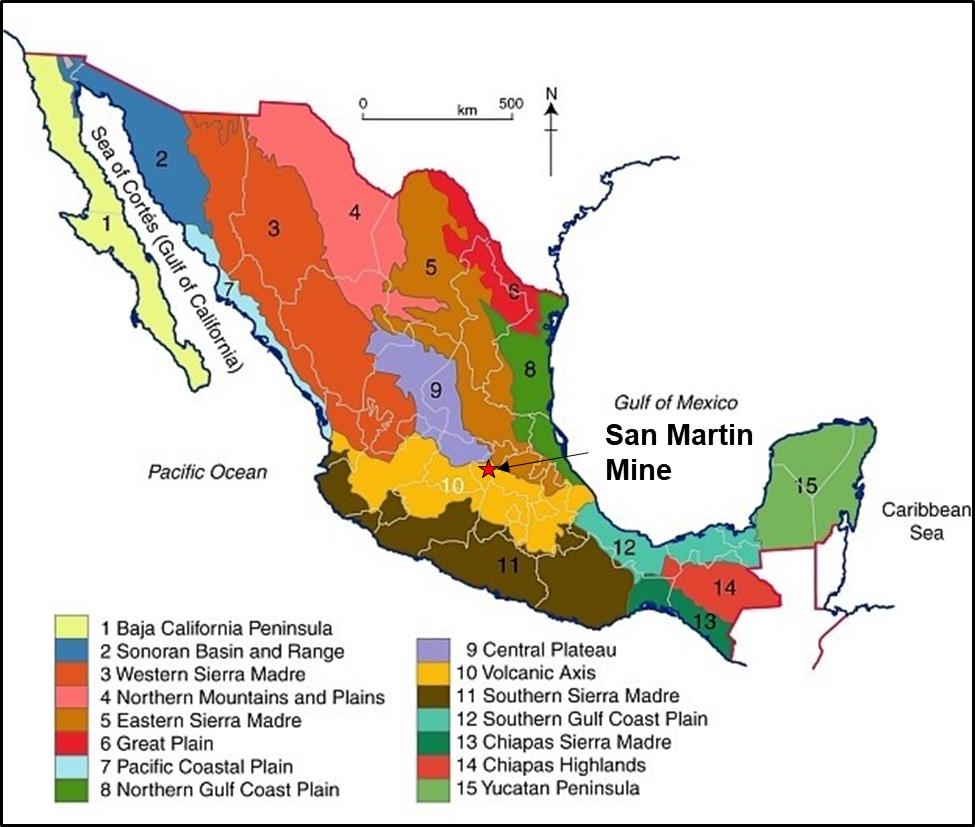
Figure 5-1:Physiographic map of Mexico showing the location of the San Martin Mine between the Volcanic Axis, Sierra Madre Oriental, and the Central Plateau (after Raisz, 1964)
6.0HISTORY
Mining in the San Martín district extends back to at least 1770 when the mines were first worked by the Spanish, particularly by Don Pedro Romero de Terreros, Count of Regla. Spaniards worked in the district for 40 years, however, there is no production records available for that time. During those days, silver and gold production accounted for 80% of all exports from Nueva España (New Spain), although, by the late-eighteenth century silver production collapsed when mercury, necessary to the refining process, was diverted to the silver mines of Potosí in present day Bolivia.
Most of the production came prior to the 1910 Mexican Revolution with San Martin district being an important producer. The first records show the Ajuchitlán Mining and Milling Company produced an estimated 250,000 tonnes at a grade of 15 g Au/t and 100 g Ag/t during 1900 to 1924.
The first modern stake was with 1982, when the Mexican government declared a 6,300 ha National Reserve over the area surrounding the Peña de Bernal. Luismin entered into an agreement to explore in the claims of CRM in 1986 for a payment of US $ 250,000 dollars and a royalty of 5%, which later was reduced to 3% in 1996. In1988 geological reconnaissance and exploration program initiated.
Erme Enriquez, CPGJuly 18, 202216
STARCORE International Mines Ltd.
San Martin Mine NI 43-101 Technical Report: Updated Mineral Resource and Reserve
Geological works concluded in 1992 and by the end of 1993 the decision was made to start the open-pit mining in the San José area, at a rate of 300 tpd.
The operation of the San José pit only lasted a couple of years, when it was discovered that the deposit was not a "Carlin type", as had been thought, but that it was a tabular structure in form of vein that continued to deepen and laterally along its strike. Then it was decided to start the underground mining, on the same San Jose structure and on the oreshoot of San Martin, which ultimately turned out to be the one with the largest number of reserve and resources.
In the year 2000, the exploitation begins in the San Martín body, called "Tronco" due to its verticality. In 2001, at the same time, the exploration of high-grade gold bodies called "Mantos" began. The first of these oreshoots was the Body 28.
The mine is currently mined at 627 tpd and the capacity of the mill is 1100 tpd. The mining method is cut and filled with dry backfill. The exploitation in the Body 28 is currently room and pillars filled with a mixture of backfill and 5% cement.
San Martin has produced over 7.3 million tonnes with average grades of 2.78 g/t Au and 41 g/t Ag, for a total of 688,081 oz of gold equivalent.
Historical production at the San Martín Mine for the years 1993 to April 30, 2022, is roughly estimated in Table 6-1.
Erme Enriquez, CPGJuly 18, 202217
STARCORE International Mines Ltd.
San Martin Mine NI 43-101 Technical Report: Updated Mineral Resource and Reserve
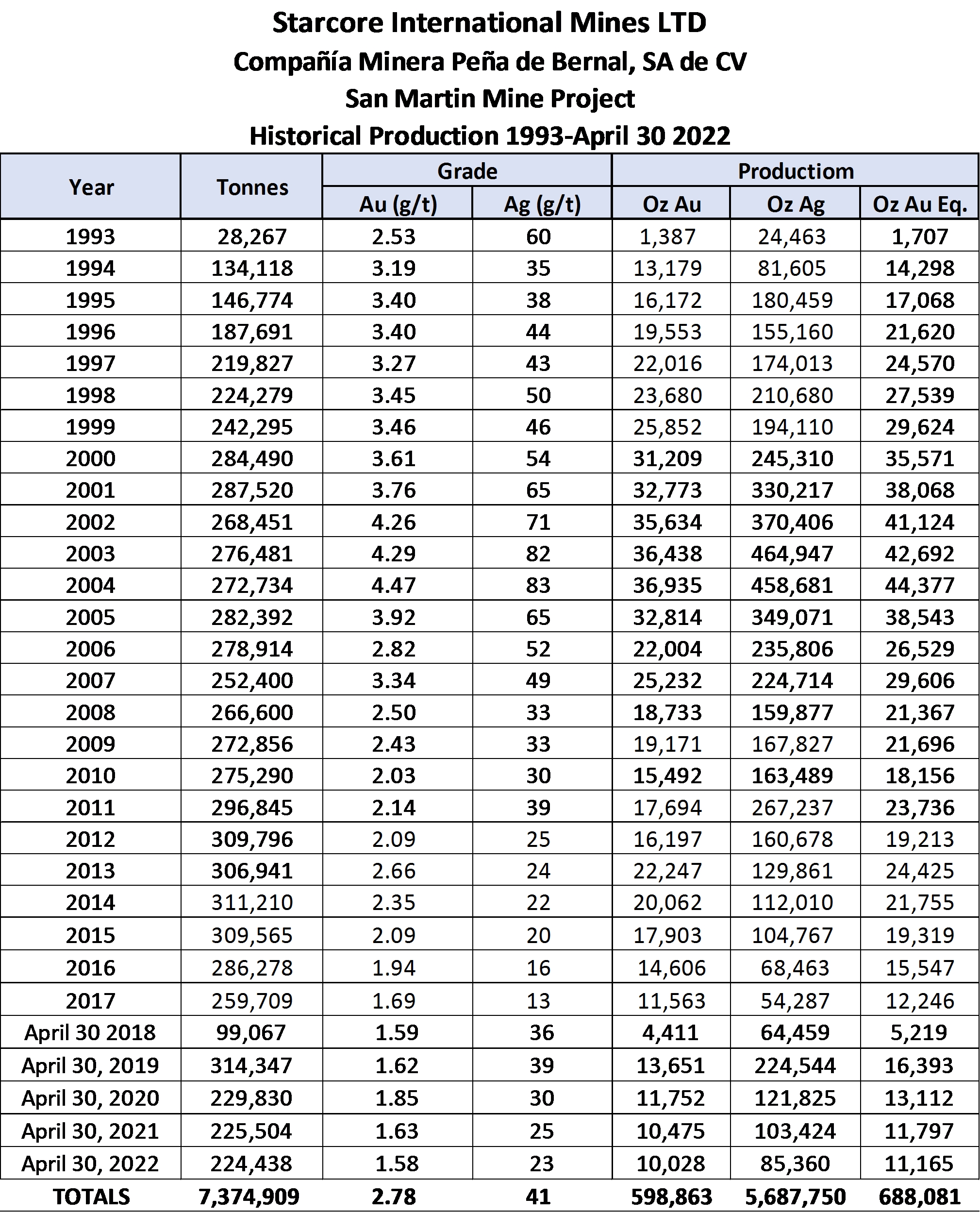 Table 6-1:Summary of production for the San Martín Mine (from 1993 to April 30, 2022)
Table 6-1:Summary of production for the San Martín Mine (from 1993 to April 30, 2022)
Erme Enriquez, CPGJuly 18, 202218
STARCORE International Mines Ltd.
San Martin Mine NI 43-101 Technical Report: Updated Mineral Resource and Reserve
7.0GEOLOGICAL SETTING AND MINERALIZATION
7.1Regional Geology
The regional and local geology of the San Martín Mine Project is described in detail in several existing internal and previously published technical reports and other internal reports for SIM. The following descriptions of geology and mineralization are excerpted and/or modified from Labarthe, et. al (2006) and Rankin (2008). Mr. Enriquez has reviewed the available geologic data and information, and finds the information presented here in reasonably accurate and suitable for use in this report.
The San Martin area forms Mesozoic shallow-basin sediments (shales and limestones) unconformably overlain by Tertiary volcanics/epiclastic and volcaniclastic sediments. Localized subvolcanic micro-granodiorite also occurs (Figure 7-1)
The primary formations are (from oldest to youngest): Jurassic: Las Trancas Formation(Jtr). This includes massive to well bedded and laminar limestones. Very thin (<10cm) shale intercalations occasionally occur. A dark carbonaceous limestone is known form the deeper SE sections of the San Martin mine.
Cretaceous: El Doctor and Soyatal-Mezcala Formations. These make up a lower pale buff to orange lithic shale, overlain by intercalated shale and limestone. Note that there may be some local problems in discrimination between the Cretaceous and Jurassic limestones in some outcrops and drill core; a zone of shallow-dipping limestones in the mine infrastructure area are shown in the geology map as Cretaceous Soyatal-Mezcala Formation.
Tertiary: Continental sediments, overlain by bimodal epiclastic, rhyolitic ignimbrite & andesite with a distribution around the mine site. The andesite has been dated at ~30 Ma. The volcanic breccias, lahar, epiclastic, ignimbrite and andesite are younger and have been dated at ~10–11Ma. The most conspicuous feature is the Peña de Bernal intrusive, which is a micro-granodiorite of an age of 35 Ma. See also Figure 7-2.
Erme Enriquez, CPGJuly 18, 202219
STARCORE International Mines Ltd.
San Martin Mine NI 43-101 Technical Report: Updated Mineral Resource and Reserve
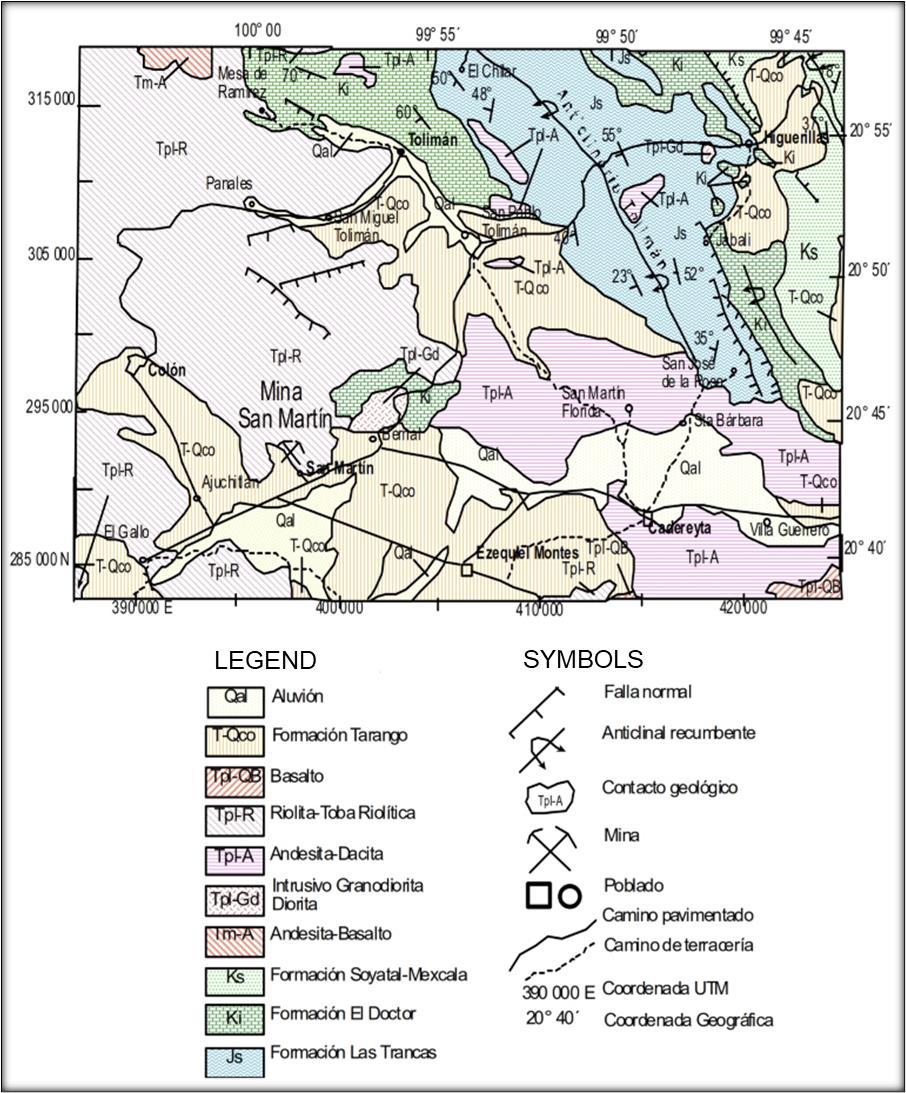
Figure 7-1:Regional geological map of the surrounding San Martin Mine. Taken from Nuñez-Miranda, 2007
Erme Enriquez, CPGJuly 18, 202220
STARCORE International Mines Ltd.
San Martin Mine NI 43-101 Technical Report: Updated Mineral Resource and Reserve
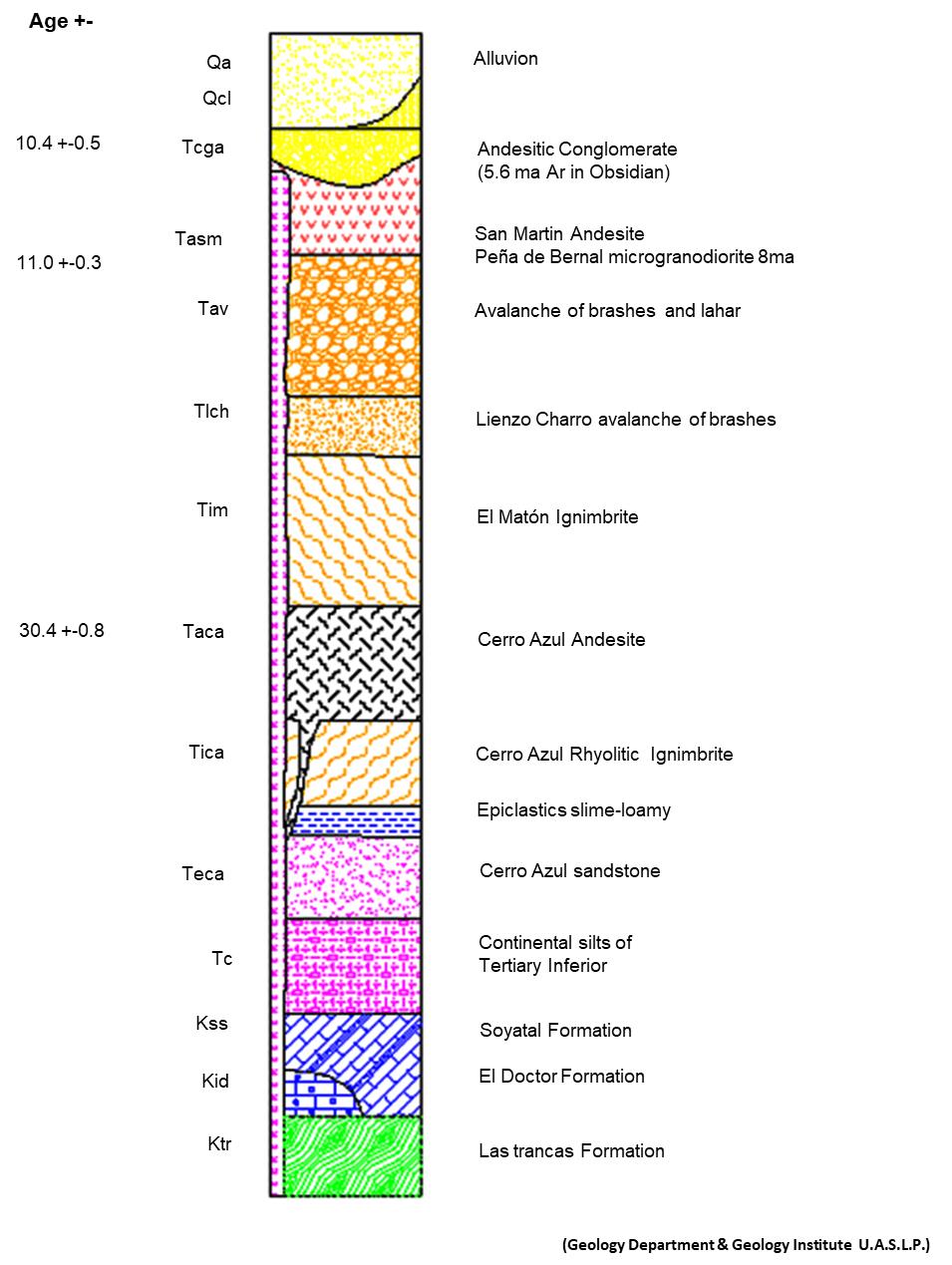
Figure 7-2:Generalized Stratigraphic Column of the San Martin Region
Erme Enriquez, CPGJuly 18, 202221
STARCORE International Mines Ltd.
San Martin Mine NI 43-101 Technical Report: Updated Mineral Resource and Reserve
7.2Property Geology and Mineralization
The local geology is represented by the Las Trancas Fm, Doctor Fm, Soyatal-Mezcala Fm, map presented in Figure 6-2. The map shows trace of the mineralized structure projected on the surface, to visualize the direction of the structure, even if there are only small outcrops at the pit of the San José I and II bodies, and part of San Martín (Figure 7-3)
6.2.1Las Trancas Formation
Burk (1993) describes this formation in the Arroyo Nacional, located in the area known
such as Chicarroma, distant 3 km to the NE of the central part of the San Martín mine. The package consists of well-foliated slates, red to gray-brown shales, interbedded with strata of a few centimeters of calcareous siltstones, fine-grained sandstones and, to a lesser extent, proportion, conglomerates.
6.2.2El Doctor Formation
This formation does not outcrop on the surface of the San Martín mine, and neither is it present in underground works as encasing rock. However, 3 km to the northeast been mapped by the geologists of the mining unit, in the areas known as Chicarroma and Capulín, located in the vicinity of the intrusive that makes up La Peña de Bernal.
6.2.3Soyatal–Mezcala Formation
In the underground mine workings of the San Martín mine, this formation is the main host rock throughout the entire mineralized structure. Regarding its behavior on surface, it is seen in the San José I and II and part of San Martín structure, Rock consists of micritic and calcarenite limestones thinly bedded, interbedded clayey with some chert lenses and horizons thin shale and marl, with strata between 10 to 20 centimeters of argillaceous limestone and calcareous shale. The upper part of the strata consists in thinner layers between 5 to 10 cm. Thickness of this Formation is around 150 meters.
6.2.4Igneous Rocks
Locally in the mine area two types of igneous rocks are recognized, clearly differentiated and after the Soyatal-Mezcala Formation:
| 1) | A unit of volcanic rocks of andesite/dacite composition that overlies unconformably to the Cretaceous sedimentary rock units, and which makes up the entire stratovolcano called Cerro San Martín. The geologists of the San Martín mine have subdivided this unit into the Andesitic/dacitic Breccia (Tdbx) and Andesite/dacite (Ta/d). |
| 2) | n intrusive known as a rhyolitic dike that fits between sedimentary rock units, the volcanic dacite-andesitic and the mineralized structure and that has only been observed in underground works. |
6.2.5Andesite/Dacite
Overlying the Soyatal-Mezcala Formation in erosional unconformity, they appear throughout the
region and in the surroundings of the mine a set of volcanic rocks, of andesitic composition, which are part of the stratovolcano that constitutes the San Martín hill. The structure at the base is brecciated with fragments from 10 to 30 centimeters in diameter. The dike outcrops underground between the andesite/dacite and limestone of the Soyatal-Mezcala Formation. In the underground
Erme Enriquez, CPGJuly 18, 202222
STARCORE International Mines Ltd.
San Martin Mine NI 43-101 Technical Report: Updated Mineral Resource and Reserve
works of the mine, the intrusive body it is deeply silicified, megascopically it is milky white yellowish and with a general brecciated texture, that is, massive-brecciated quartz clasts and cemented by another stage of quartz that cements the entire rock.
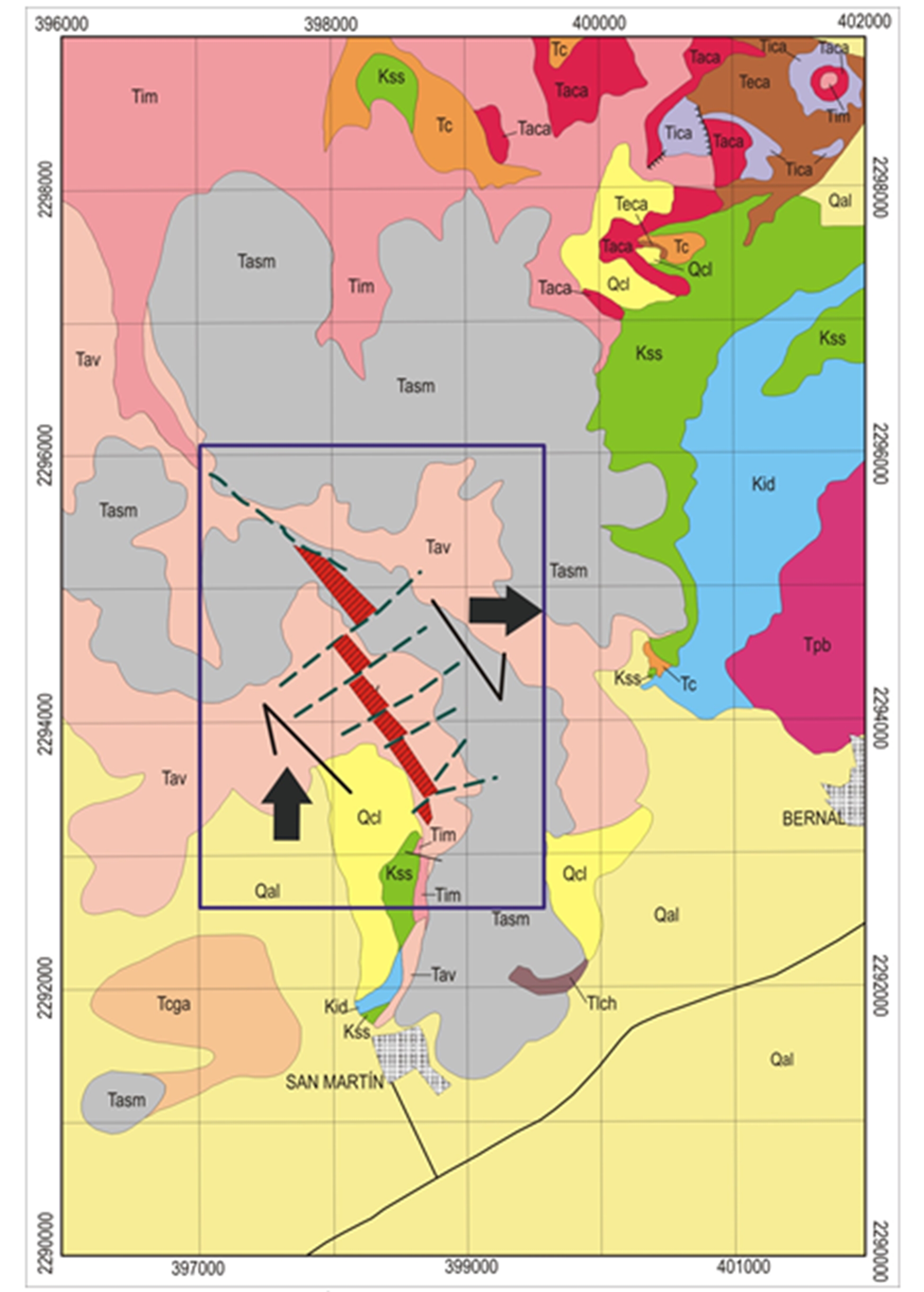
Figure 7-3:Geologic Map of the San Martín Mine Project (After Labarthe, et. al, 2004)
Erme Enriquez, CPGJuly 18, 202223
STARCORE International Mines Ltd.
San Martin Mine NI 43-101 Technical Report: Updated Mineral Resource and Reserve
Mineralization occurs in Upper Cretaceous black limestone and calcareous shales of the Soyatal-Mezcala Formation as electrum, and silver selenide minerals principally associated with quartz and to a lesser degree with calcite. The deposit is an epithermal, low sulphidation precious metal (Au-Ag) type (metal ratio Ag:Au at 10:1).
Mineralization is generally made up of breccia that commonly is concordant with a limestone/shale contact (in the San Martin and San José areas) which forms the relatively steeply dipping “Tronco” and “Mantos” oreshoots, these breccia-veins contact the younger volcanic flows (dacite and ignimbrite) where they have formed the more horizontal portions of the deposit. The mineralized economic breccia grades from 30 g Ag/t to 250 g Ag/t.
Exploration has been concentrated along the NE trending breccia zone however evidence of a northerly trend in area 30 and 31 leads to suspect possible other structures together with 2.0 g Au/t to 30 g Au/t over widths that vary from 1.5 to 17.0 m but averaging 4.0 m.
The mineralized oreshoots show several stages of brecciation and cementation, with four major stages of hydrothermal breccias and supergene alteration that filled fractures and late cavities. The metallic mineralization is mainly formed by electrum, naumannite, tetrahedrite, pyrite and chalcopyrite as hypogene minerals, and free gold, partzite, chlorargyrite, malachite, hematite, goethite-limonite as supergene minerals. Gangue minerals are mainly quartz, chalcedony, and calcite, with minor amounts of adularia. Quartz and calcite occur in all the four stages cementing the breccia fragments of rock and older vein. Chalcedony, quartz, and calcite associated with the economic mineralization usually show saccharoidal, crustiform, colloform, cockade and comb textures. Stage one is totally barren of silver and gold. The main Ag-Au mineralization occurred in the second stage of brecciation, associated to colloform and chalcedony quartz. Stage three is carrying low grade and is abundant. The late stage of mineralization is characterized by native gold content, chlorargyrite and abundant partzite, because of the supergene alteration. Mineralization occurs as native gold, electrum, naumannite (AgSe) and argentojarosite (AgFe3(SO4)2(OH)6) associated principally with quartz and lesser calcite. The silver contained in argentojarosite is not recoverable with cyanidation.
8.0DEPOSIT TYPE
The San Martin deposit is composed by a tabular, vein-like subvertical mineralised structure that becomes to a sub-horizontal mineralised structure or “manto-like” close to surface. This mineralised structure is recognized for over 2 km along strike, with thicknesses between 1.5 and 17 metres and 400 m of vertical extent or “favorable zone”. In general, the mineralisation is hosted in the contact of limestone-shale of Soyatal-Mezcala Formation and associated to a silicified rhyolitic dike.
For many years it was thought that mineralisation was associated with a dome of rhyolitic composition, and that the structure was repeated towards the east portion of that dome. New observations have detected that mineralisation is associated with the stratification of the rocks of the Soyatal and Mezcala formations, which form an anticline fold of dimensions of up to one kilometer. The mineralisation hosted in the east Limb of the fold, with the hinge zone containing the mineralization of bodies 28 to 31 and eroded in its central part. That is why it is of the utmost importance to detect the stratigraphic position of the Soyatal-Mezcala Formations in the Santa Elena area as there may be a replica of the San Martin mineralisation in that zone (Figure (8-1).
Homogenization temperatures (Th) indicate that mineralization of the second stage occurred between 220 °C and 260 °C, with an average Th of 243 °C. Salinities range from 0.5 to 2.5 wt. % NaCl equiv., with an average of 1.9 wt. % NaCl equiv.
Erme Enriquez, CPGJuly 18, 202224
STARCORE International Mines Ltd.
San Martin Mine NI 43-101 Technical Report: Updated Mineral Resource and Reserve
Low sulphidation epithermal veins in Mexico typically have a well-defined, sub-horizontal ore horizon about 300 m to 500 m in vertical extent where the bonanza grade ore shoots have been deposited due to boiling of the hydrothermal fluids (Buchanan (1981), Enriquez (1995). Neither the top nor the bottom of the San Martin ore horizon has yet been found but, given that high gold-grade mineralization occurs over a 400-m vertical extent from the top of the San Martin oreshoot to below Level 10 in the general mine, it is likely that erosion has not removed a significant extent of the ore horizon due to a capping of rhyolites on top of the structure.
Low sulphidation deposits are formed by the circulation of hydrothermal solutions that are near neutral in pH, resulting in very little acidic alteration with the host rock units. The characteristic alteration assemblages include illite, sericite and adularia that are typically hosted by either the veins themselves or in the vein wall rocks. The hydrothermal fluid can travel either along discrete fractures where it may create vein deposits, or it can travel through permeable lithology such as a volcanic rocks, limestone, or shale, where it may deposit its load of precious metals in a vein deposit. In general terms, this style of mineralization is found within the San Martin district.
Figure 8-2 illustrates the spatial distribution of the alteration and veining found in a hypothetical low sulphidation hydrothermal system.
Erme Enriquez, CPGJuly 18, 202225
STARCORE International Mines Ltd.
San Martin Mine NI 43-101 Technical Report: Updated Mineral Resource and Reserve
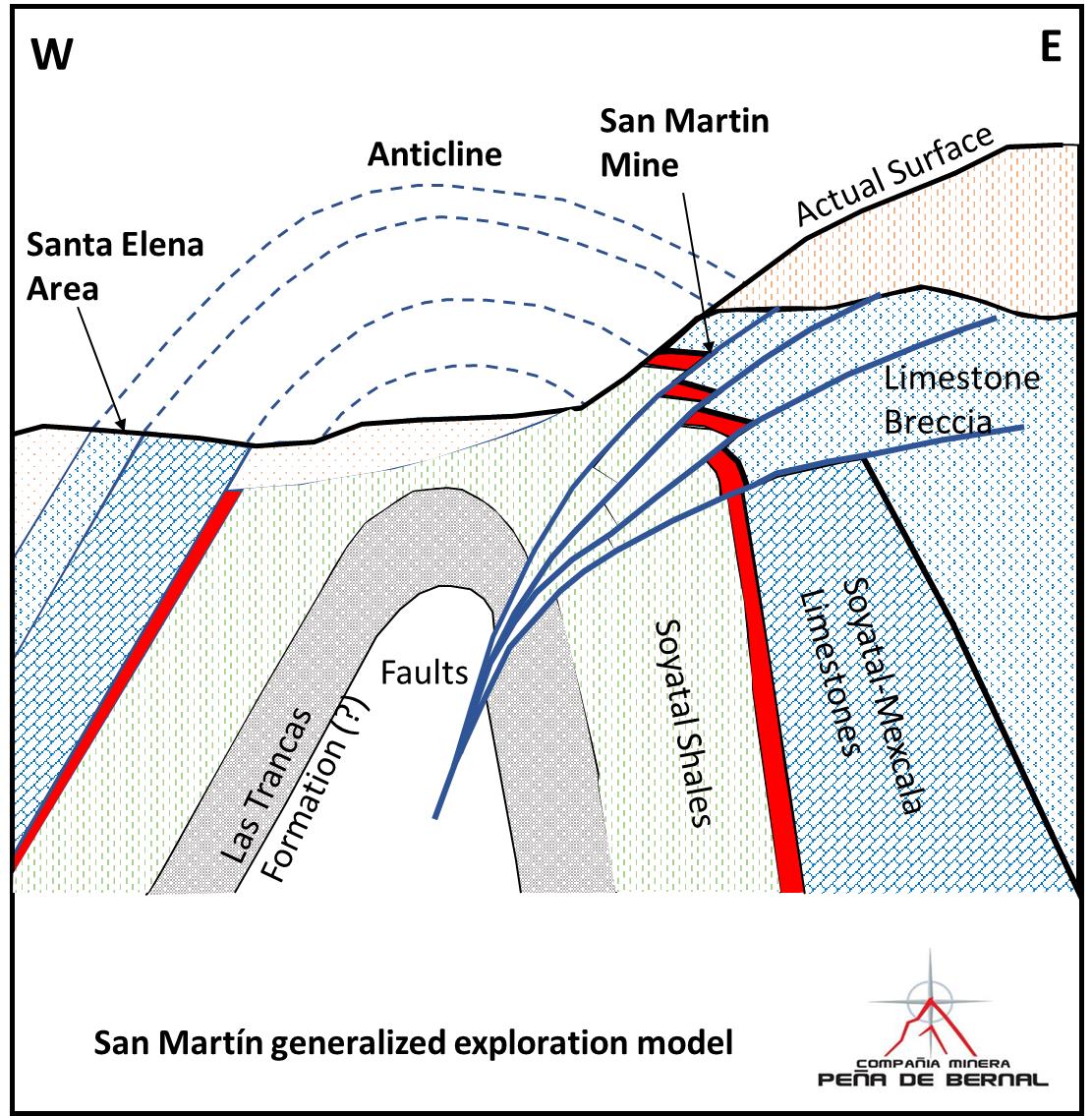
Figure 8-1:Generalized sketch of kinematic evolution and structural styles of fold-and-thrust faults in the San Martin Mine
Erme Enriquez, CPGJuly 18, 202226
STARCORE International Mines Ltd.
San Martin Mine NI 43-101 Technical Report: Updated Mineral Resource and Reserve
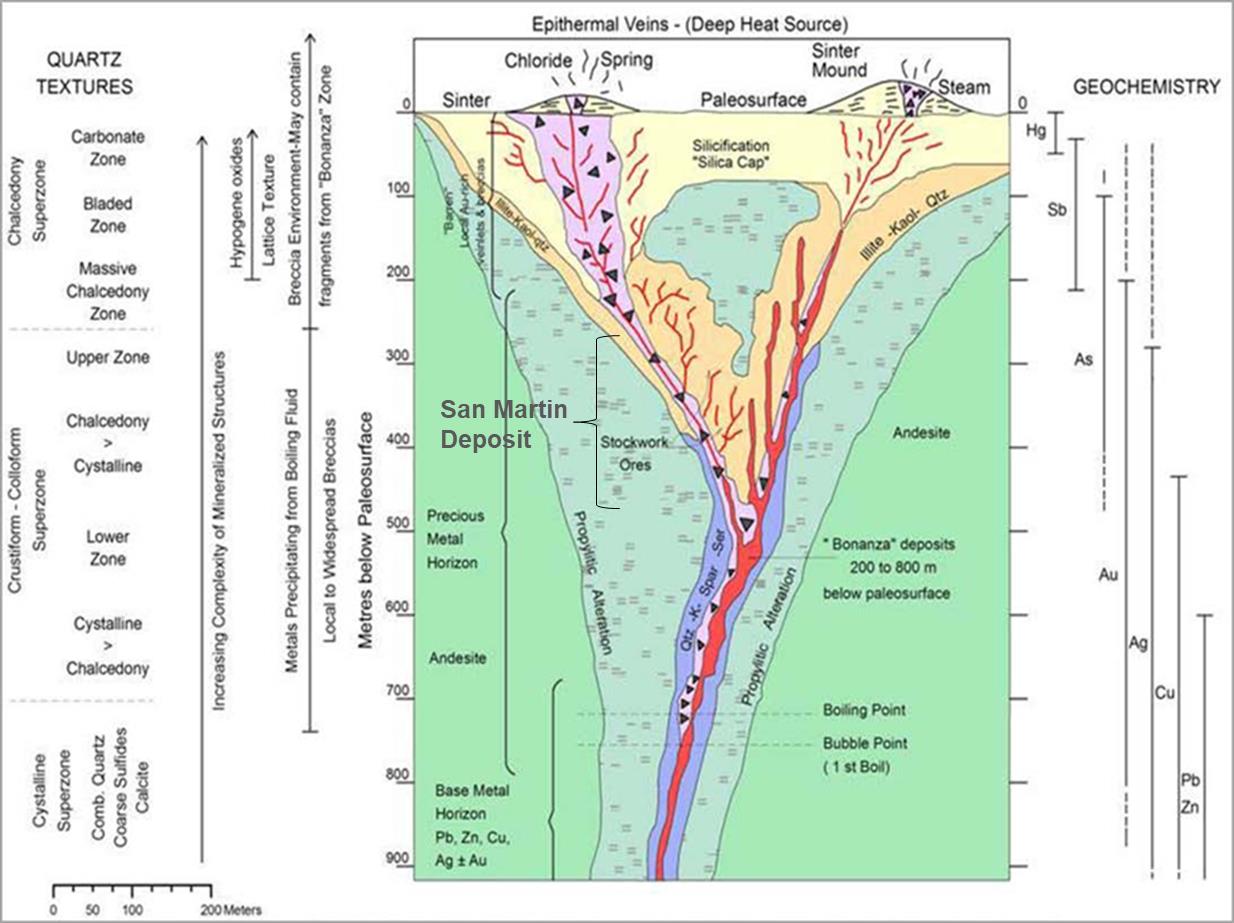
Figure 8-2:Schematic cross section showing the key geologic elements of the main epithermal systems and their crustal depths. Modified after Buchanan, 1982, Berger and Eimon, 1983, Hollister, 1985, Corbett and Leach, 1996, dated December 2013.
9.0EXPLORATION
Exploration at San Martin is concentrated along the strike length of the breccia zone. In-house diamond drilling initially tests selected targets, which is followed by underground development that outlines Mineral Reserves. Target selection is assisted by structural, geochemical and geophysical surveying that has included magnetics, induced polarization and resistivity. The resistivity surveys have been particularly successful in outlining the quartz breccia and several promising resistivity anomalies, detected since 1998, to the northeast remain to be tested.
Exploration is being carried out in three areas: 1) North Area: over the extension of Bodies 32 and 33. 2) Central Area: exploration of the extension of Body 28 to the east; and 3) South Area: continues with the exploration of San José FW and Santa Clara HW, this zone is known as Area Sarah.
San Martin is a mature mining district with a long history of exploration. The data, methods, and historical activities presented in this section document actions that led to the first and continued development of the mine but are not intended to convey any discussion or disclosure of a new, material exploration target as defined by NI 43-101. Exploration outside of the current operation is
Erme Enriquez, CPGJuly 18, 202227
STARCORE International Mines Ltd.
San Martin Mine NI 43-101 Technical Report: Updated Mineral Resource and Reserve
in conducted by geologists of the mining unit and incorporated into the geologic model that is still under construction. New drilling was included in the update of the geological resource model to support the mineral reserves and mineral resources. Drilling results added for the model update provide local refinement of the geologic interpretations and grade estimates, but do not materially alter these interpretations and estimates on a district-wide scale.
The mine has been extensively explored from surface using geologic mapping, vein mapping and vein sampling. Underground exploration consisted of diamond drilling, geologic level mapping, vein level mapping, vein sampling and drift and stope development. Historical underground development includes 69,102 meters of drift and raise, and 82,664 meters of preparation and accessing ramps. Channel samples are collected from drifts and stopes to conduct the exploration with drifting and grade control in stopes.
9.1Channel Samples
Channel samples are collected using the following guidelines:
| • | During level mapping, geologists paint sample locations on the back or development face to guide samplers. |
| • | Samples are collected by chiseling out the painted area, ideally cutting 10 cm wide sample. |
| • | The sample widths range from 0.2 m to 1.5 meters as maximum. |
| • | The sample’s weight is usually between 1.0 and 2.5 kg. The sample is broken into small pieces of around ¼ inch to 1.0 inch as maximum. |
| • | Sampling is carried out as perpendicular to the vein strike as possible and the true width is measured by sighting the vein dip and tilting the measuring tape accordingly. |
| • | Stope and face samples are collected at 2 m intervals across strike. Wall rock and vein material are sampled separately. When dictated by geological features, samples are taken at closer intervals |
| • | Sampling along cross cuts is conducted continuously. |
Sampling is subject to numerous sources of error, particularly to the differential hardness of material being sampled, and the tendency to include disproportionate volume of softer rock. Diligent of systematic collection of channel samples generates a large data set which in most cases is statistically representative, but never completely free of errors or potential bias. The collection of channel samples has been observed underground it was noted that the procedure follows accepted engineering practices for channel sampling established by the geology department. The author concludes channel samples procedures used in the mine result in samples which are reasonably representative of the mineralization and meet industry best practices guidelines for this type of sampling. The resulting data is sufficient to support the estimation of reserve and resources.
10.0DRILLING
Historic exploration drilling statistics for the period of 1988-2022 are summarized in Table 7-1. These results were proportionated by CMPB and summarized here, however; the data has not been independently verified by the author.
The drill hole database for the SM contains 1989 drill holes completed between 1988 and April 2022, representing 233,944 meters of drilling. This includes condemnation, district exploration, geotechnical. Minas Coremin, SA de CV (MICO), a subsidiary of Luismin-Wheaton River drilled the
Erme Enriquez, CPGJuly 18, 202228
STARCORE International Mines Ltd.
San Martin Mine NI 43-101 Technical Report: Updated Mineral Resource and Reserve
property since 1988 to 2007. SMI acquired the mine in February 2008 and since then the performance of drilling has improved significantly.
These low-grade to barren holes are not in the immediate mining areas and are not used for resource estimation. Some of the drill holes used for geologic modeling are summarized in Table 10-1.
The goals of drilling by MICO, for the period of 1988-2007, was to trace the breccia structure from the San José open pit to the north-northwest, resulting in the discovery of the San Martin orebody and the San José II structure. The misconception of the type of deposit resulted in starting the exploitation of the San Martin with an open pit. The idea, at that time, was to mine out 180,000 tonnes of ore and shut down the mine at the third year. The San Martin giant breccia was discovered with the pit and then the concept of exploration was reviewed by Luismin.
Most of the drilling was done from underground. The author has no information about the holes done from surface but represent less than 2% of the total. Figure 10-1 shows the swarm of historical holes that have been performed in the entire mine.
Table 10-1:Summary of drill hole programs performed by MICO and CMPB

10.1Collar and Downhole Surveys
Upon completion of a drill hole, collar locations are surveyed using the surveyors for underground and Global Positioning System (GPS) units for surface holes . All coordinates are based on UTM mine grid system. Historically, downhole surveys were not systematically performed. For historical holes lacking surveys, the collar azimuth and dip are used for the entire length of the hole. Survey data are part of the district-wide database and are used in the modeling process to locate drill hole intercepts. Final reports for collar and downhole surveys are included in the drill hole log files. Original survey records are stored in a secure facility. Spatial locations of the drill holes are visually confirmed in the resource modeling software.
Erme Enriquez, CPGJuly 18, 202229
STARCORE International Mines Ltd.
San Martin Mine NI 43-101 Technical Report: Updated Mineral Resource and Reserve
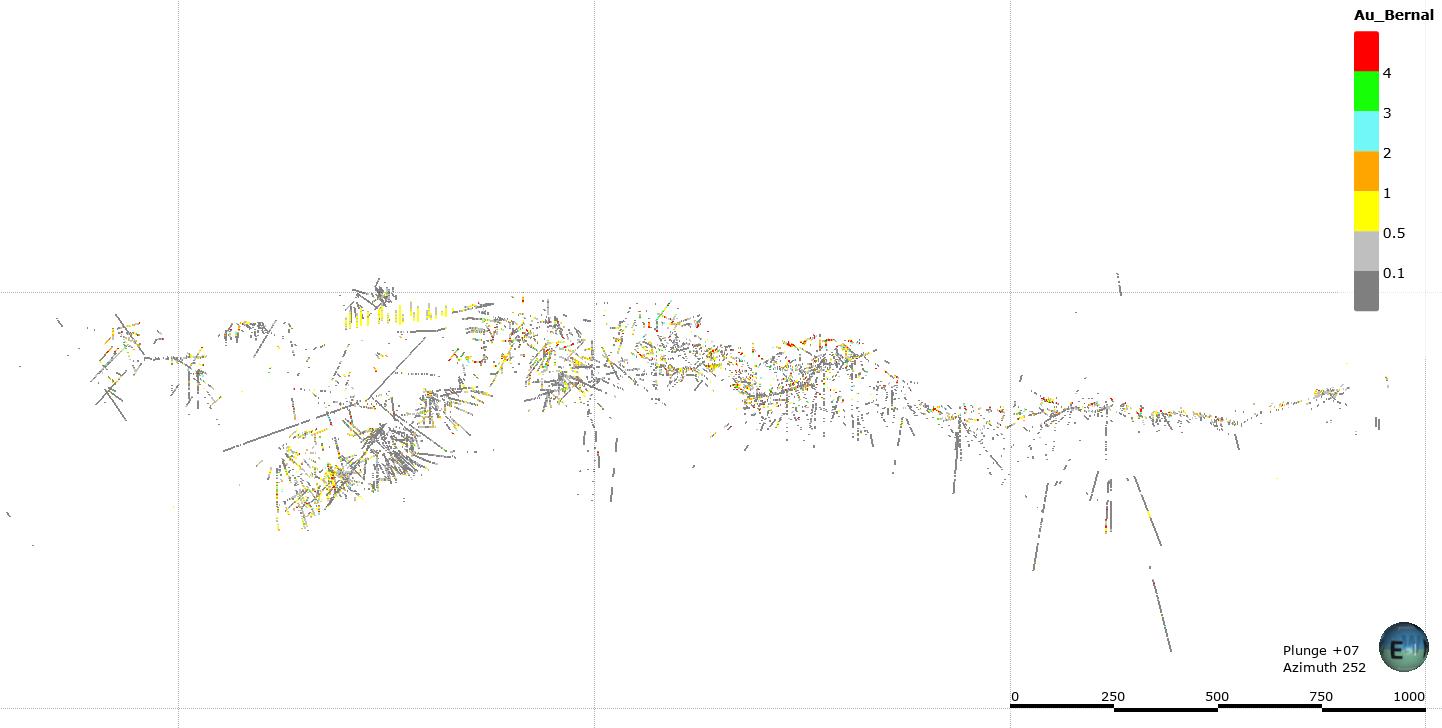
Figure 10-1:Map showing the swarm of drill holes done at the entire San Martin mine
10.2Drill Core Sampling
Diamond drill core samples are taken according to the following criteria:
| • | Drill core is split using a core saw |
| • | Samples are taken from the core sections with visible structure (breccia) or mineralization, and 1.5 meters of the surrounding wall rock |
| • | Will rock within the breccia structure is sampled independently |
| • | Information is recorded in the drill logs for each sample includes depth, width, core angle and ore/rock type |
10.3Core Logging
Core logging procedures used at the San Martin mine were developed under the ownership of MICO and recently by CMPB. Historical logging was done on paper and includes information regarding rock types, structure, mineralization, and alteration.
Currently, geological logging is done on laptop computers. Since 2008, all information is entered into a drill hole database. Information collected includes rock type, alteration type and intensity, mineralization, core recovery and rock quality designation (RQD). No high-resolution photographs are taken for each or set of boxes. Completed logs are validated, approved, and then printed out and stored on-site for each drill hole.
Erme Enriquez, CPGJuly 18, 202230
STARCORE International Mines Ltd.
San Martin Mine NI 43-101 Technical Report: Updated Mineral Resource and Reserve
10.4Important Drilling Results
A total of 7,360.50 meters were drilled in 2021 until the end of April 2022 which focused on two areas of the mine: the first focusing on the CENTRAL (San Martin Body and 28 Body) part of the operating mine, and the second searching for the extension of the orebodies of high-grade discovered during the 30 years of the mine’s life. The San Martin structure was cut after the normal fault the displaces right-lateral the breccia structure(Figure 10-2). Highlights of the best results are in Table 10-2.
Table 10-2:Drill Results of the San Martin Body Extension
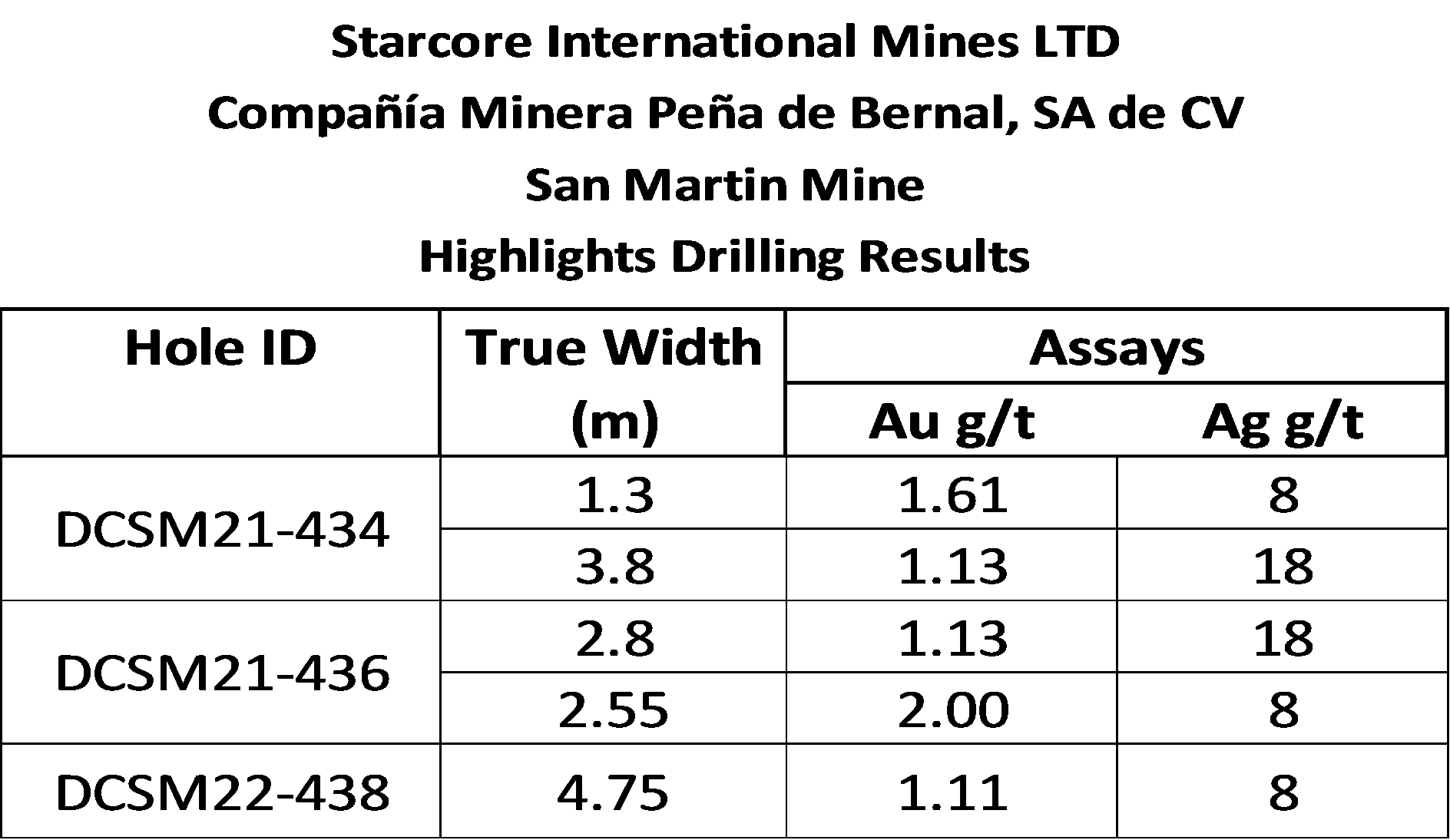
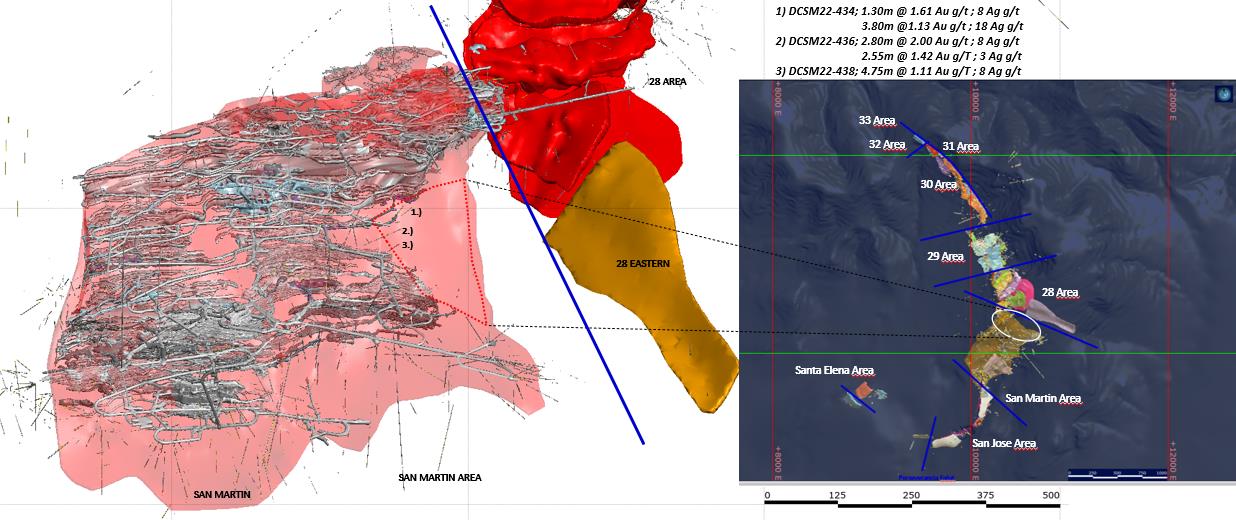
Figure 10-2:San Martin Orebody detected with Diamond Drill Holes
Erme Enriquez, CPGJuly 18, 202231
STARCORE International Mines Ltd.
San Martin Mine NI 43-101 Technical Report: Updated Mineral Resource and Reserve
Other results that have proved the continuation of the orebody in Area 28 are outlined in Table 10-3. The mining work is aimed at assessing these resources for this current year. This new structure was discovered in 2021 with four diamond drill holes and the underground works have started to intercept this extension. This new vein is related to a vein discovered more than 15 years ago through a hole located 500 meters far away from the structure. Exploration continues with the development of drilling stations along the projection vein. Figure 10-3 shows the continuity of the orebody towards the eastern.
Table 10-3:Highlights of Drill Results at Area 28 Oreshoot
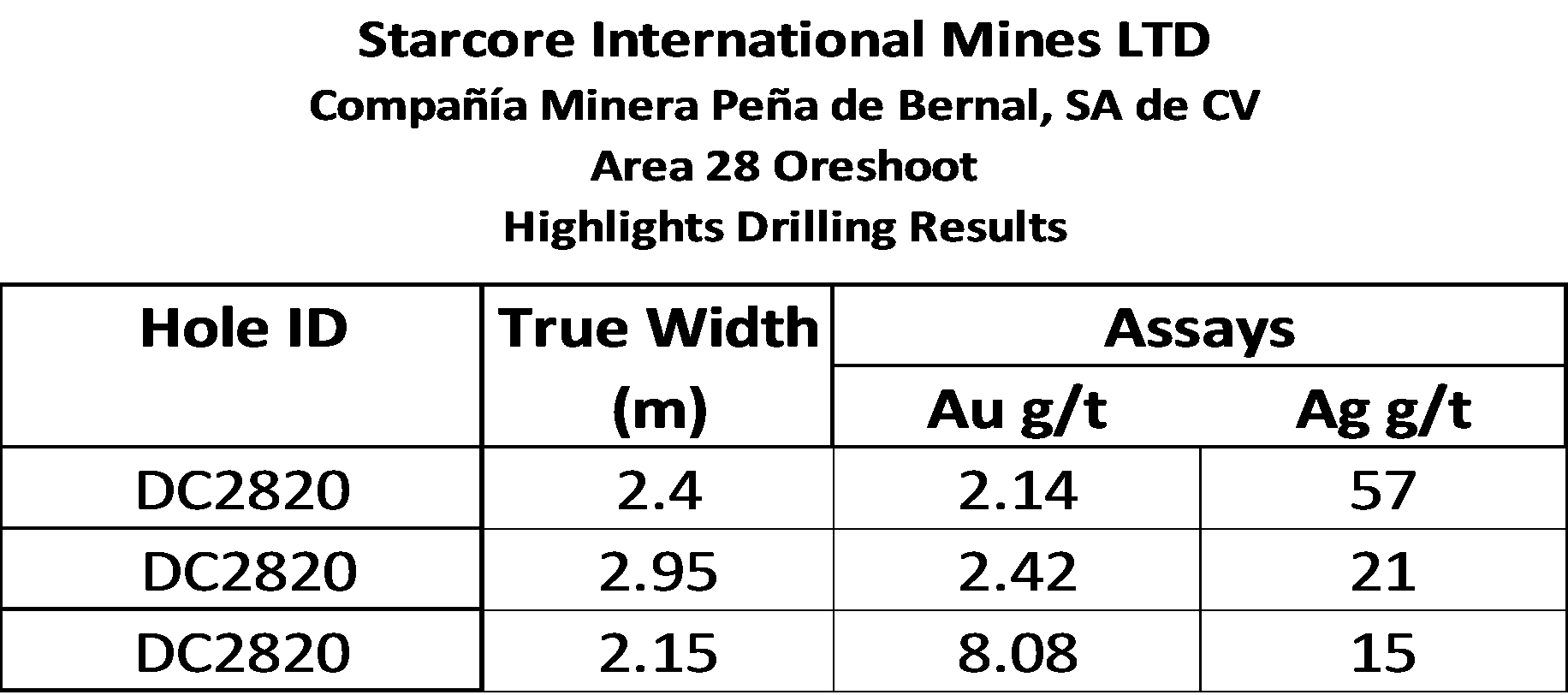
Erme Enriquez, CPGJuly 18, 202232
STARCORE International Mines Ltd.
San Martin Mine NI 43-101 Technical Report: Updated Mineral Resource and Reserve
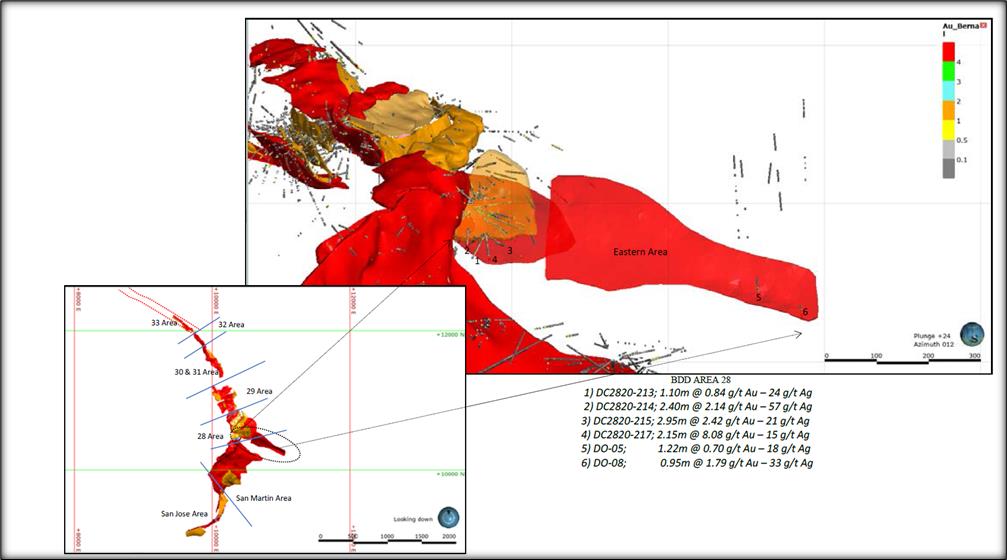
Figure 10-3:Eastern extension of the 28 Orebody detected with diamond drilling
In the opinion of the QP:
| • | The exploration programs completed at San Martin (drilling, sampling, logging and drifting) are appropriate for geologic resource modeling. |
| • | The data spacing, and distribution is sufficient to establish de degree of geological and grade continuity appropriate for mineral reserve and resource estimation. |
| • | The engineering programs and the geotechnical data are proper to support the design of the underground mine workings, according to the established design and criteria for the mine plans. |
11.0SAMPLE PREPARATION, ANALYSES AND SECURITY
Sample preparation, analyses, and security followed by CMPB meet industry common practice standards and are adequate to support the estimation of Reserve and Resources. The quality control (QC) sampling results throughout the campaigns and laboratories are typical of an operation given the amount of throughput and data handling.
Core assays are complete by PENBER Lab, and some checks are sent to ALS Chemex in Vancouver, Canada, and the channel and mill samples are tested also in the PENBER Lab facility.
No modifications have been done in the last years. The samples received in the laboratory are dried before entering the preparation process. A primary size reduction is made up to 1/8 inch. The sample is divided into smaller portions using a Jones crusher until a sample of 150 g is obtained, which is considered representative of the initial sample volume.
Erme Enriquez, CPGJuly 18, 202233
STARCORE International Mines Ltd.
San Martin Mine NI 43-101 Technical Report: Updated Mineral Resource and Reserve
The sample is reduced in size in a ring sprayer to a size smaller than 150 meshes, then is homogenized, and placed in an envelope previously labeled with the folio number tagged by the Department of Geology, including the date.
From the sample in the envelope, 20 g are taken and homogenized with the mixture of fluxes to be cast and obtain the lead button that has captured the gold and silver values. This button with values is placed in a cup to remove the lead and obtain a gold and silver button at the end of the process.
The button of gold is weighed, and a chemical attack is made to dissolve the silver, the residue is pure gold that is weighed and, in this way, obtain the gold and silver grades present in the mineral sample. This analysis of gold and silver in mineral samples has a detection limit of 0.1 g/t Au and 3.0 g/t Ag.
CMPB’s internal QAQC includes adding one duplicate, one reference and one blank to every 20 samples. A sample of sterile (white) material is crushed before starting the size reduction process. The degree of reduction is verified by passing the total of the sample through the # 6 mesh; 80% of the sample must pass, otherwise the breaker opening is adjusted. This process is done in the first sample and then every 20 samples. Similarly, every 20 samples in the crusher will pass a sample of sterile material, in addition to cleaning the equipment with compressed air, including the Jones quartz that is used to divide the sample into small portions.
Continuing with the reduction process, after passing the sample through the ring sprayer, it passes through the 150 mesh, through which 80% of the total weight must pass. To avoid contamination, compressed air is used to clean the equipment and every 20 samples a sterile material is sprayed.
The pulverized sample is taken to furnace in batches of 42 samples each. At the beginning of each batch a blank is placed, in the position number 21 a standard of known value is placed and in the position number 42 a duplicate of the sample corresponding to the position number 22 is placed.
The Assay Standard CDN-ME-1304 certified standard is from the CDN Resource Laboratories LTD laboratory, with a grade of 1.80 g/t Au and 34.0 g/t Ag. In the same way, an in-home made and validated standard is used on site, with a grade of 1.93 g/t Au and 40.5 g/t Ag.
When performing the gold and silver test and the relationship between these two elements is less than 4, it is considered to repeat the assay of the sample by adding silver nitrate (inaccurate) to increase the ratio and prevent the encapsulation of the silver.
The third-party laboratory that has been used is ALS Chemex, with the prep lab located in Guadalajara, Jalisco, of ALS Global.
In the past, personnel of Inspectorate laboratories in Vancouver have inspected the mine lab facilities and has provided procedures, flux recipes and feedback on all laboratory equipment. The mine has been awarded the Mexican Quality Award which is like International Standards ISO 9001 for quality control in the overall mining operations and with the award Certificate of Clean Industry by SEMARNAT.
11.1Sample preparation and Analysis
11.1.1Underground Channel Samples
Stope and development channel samples are collected by sampling support staff, controlled by the Geology Department, who are instructed to take the sample in the transect lines marked with red
Erme Enriquez, CPGJuly 18, 202234
STARCORE International Mines Ltd.
San Martin Mine NI 43-101 Technical Report: Updated Mineral Resource and Reserve
paint by the geologist. Sampling is regularly supervised by the geologist or the leader of the sampling crew that also belong to the geologic staff. Samples are broken in various size pieces (approx. ¼ inch to 1.0 inch), is mixed, and bagged in plastic bags. The sample is transported to the on-site laboratory for preparation and analysis. Channel samples are prepared and then analyzed by the PENBER Lab for Au and Ag. Gravimetric fire assay is used to determine Au and Ag grade. The results are reported in a clear mode and sent by email to all departments involved in the process (Geology, Mine, Mill and Planning).
11.1.2Diamond Drill Core Samples
Drill core samples are taken at regular intervals, according to the physical aspect of the core. This includes all types and stages of breccia and host rock, occasionally. The sample is prepared by splitting the core a diamond saw. The process is supervised by the geological staff to ensure the integrity of the core splitting and sampling. Half of the core is used for the sample, with its identifying ticket, and the other half remains in the core box with its identifying ticket. Sample is crushed to ½ inch and bagged and tagged with the same ticket as the piece remaining in the core box. The samples are transported to the PEBER facilities for preparation and analysis. Au and Ag are analyzed by fire assay and gravimetric finish.
11.2Security, Storage, and Transport
The channel sampling pulps and rejects are obtained from the assay laboratory and are stored in a secured area at the complex of the San Martin mine, in a closed and locked building.
The core is stored at the San Martin mine complex, in a closed building. Core is stacked in plastic boxes which are resistant to humidity and dust. The pulps and rejects are stored in closed areas and are individually packed in plastic bags to avoid contamination. The mine facility is guarded by security personnel 24/7.
11.3 Quality Control (QA/QC)
Quality assurance (QA) consists of evidence to prove that the assay data has precision and accuracy within generally accepted limits for the sampling and analytical method(s) used to have confidence in the resource estimation. Quality control (QC) consists of procedures used to ensure that an adequate level of quality is maintained in the process of sampling, preparing, and assaying the drill core samples. In general, QA/QC programs are designed to prevent or detect contamination and allow analytical precision and accuracy to be quantified. In addition, a QA/QC program can disclose the overall sampling – assaying variability of the sampling method itself.
A blank and standard is inserted every 20 samples, for channel samples and drill samples too.
CMPB’s uses internal QA/QC that includes adding one duplicate, one reference and one blank to every 20 samples. A sample of sterile (white) material is crushed before starting the size reduction process.
11.3.1Standards
In-house standards, by PENBER Lab, are used to keep track of production grades and the mill. The standards are low and medium grade gold and silver. Each standard is used both for channel samples from the mine, as well as core samples from blastholes and samples from mill heads and tails.
Erme Enriquez, CPGJuly 18, 202235
STARCORE International Mines Ltd.
San Martin Mine NI 43-101 Technical Report: Updated Mineral Resource and Reserve
Sampling and QA/QC protocols have been updated in 2008, using blank material and standards to better reflect the vein grades and the deposit type. The analysis and verification for blank and standard material is conducted on a routine basis to ensure the results are as expected.
11.3.2Blanks
Blanks are used and inserted on a 1 in 20 basis to confirm that there is no contamination between samples due to the sample preparation errors at the laboratory. Blanks are not certified and were prepared by PENBER Lab, as an internal way to check the operation of the lab. The blanks were prepared at the San Martine mine using unmineralized quartz or rock material. The blanks are blind to the laboratory.
11.3.3Duplicates
Duplicates of pulps are analyzed within the channel and drill core stream in the PENBER Lab. Review of the duplicates show good reproducibility (Figures 11-1 and 11-2). No significant errors have been noticed in Standards and duplicates, and do not suggest the invalidation of the results from the PENBER Lab. Almost 30 years of continuous operation of the San Martin mine and mill, have passed without having a problem that is attributable to the testing laboratory and the methods that have been used for its performance. However, the author has recommended using certified standards and an external laboratory for duplicates, as this will give the mining operation at San Martin even greater certainty.

Figure 11-1:Pulp Duplicate Gold Assay Result at PENBER Lab
Erme Enriquez, CPGJuly 18, 202236
STARCORE International Mines Ltd.
San Martin Mine NI 43-101 Technical Report: Updated Mineral Resource and Reserve
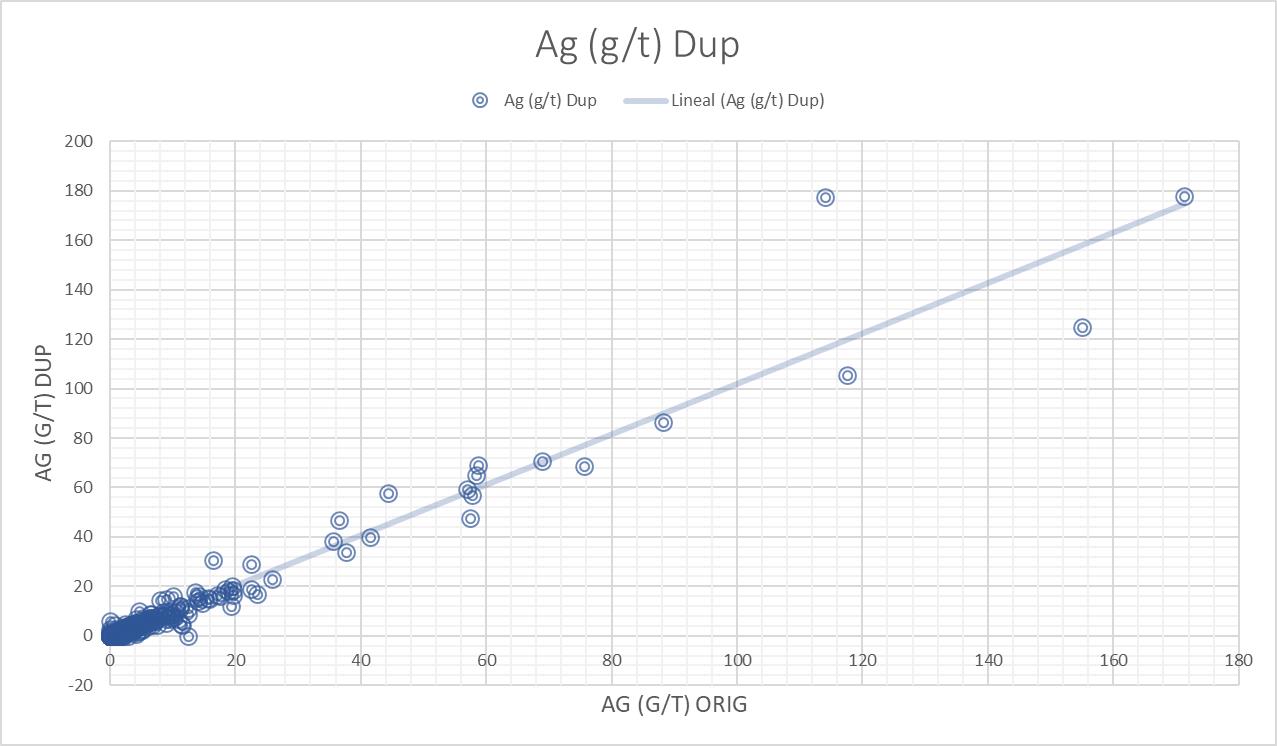
Figure 11-2:Pulp Duplicate Silver Assay Result at the PENBER Lab
11.4:QP Opinion
QP is not aware of any drilling, sampling or recovery factors affecting the reliability of the samples. It is QP’s opinion that the sample preparation, security and analytical procedures followed by SIM are fit for the purpose of this Technical Report.
12.0DATA VERIFICATION
The mineral resource estimate presented in report Section 14 is based on the following information provided to Mr. Enriquez by SIM with an effective date of April 30, 2022:
| ✓ | Discussions with SIM personnel. |
| ✓ | Personal investigation of the San Martin Mine office. |
| ✓ | An underground database received as .xls files. |
| ✓ | Production channel sample database revised on June 10, 2022. |
| ✓ | Modeling blocks for veins San José, San José II, San Martin, Cuerpo 28, Cuerpo 29, Cuerpo 30 and Cuerpo 31, 4-700. |
| ✓ | Reserves and Resources in the San Martín Mine, Mexico, as of July 31, 2014, and authored by Gunning, D. R. and Campbell. |
| ✓ | Polygonal 2-dimensional long sections for veins San José, San Martin, Cuerpo 28, and Cuerpo 29 with resource and reserve calculations. |
| ✓ | Reserves and Resources in the San Martin Mine, Queretaro State, Mexico, as of April 30, 2018, and authored by Erme Enriquez. |
| ✓ | Reserves and Resources in the San Martin Mine, Queretaro State, Mexico, as of September 30, 2019, and authored by Erme Enriquez. |
Erme Enriquez, CPGJuly 18, 202237
STARCORE International Mines Ltd.
San Martin Mine NI 43-101 Technical Report: Updated Mineral Resource and Reserve
The on-site laboratory (PENBER Lab) has undergone numerous improvements since SMI took over management of the operation in February 2008. Comparison of the on-site laboratory to commercial laboratories is conducted on an ongoing basis. The results of this analysis are presented in the July 1, 2009, NI43-101 report and for both gold and silver the variability of results were acceptable for a producing mine, thus supporting confidence in the results of the on-site lab. No other verification has been done since then.
Historically (since 1993 to 2003), the San Martin mine has been using a specific gravity of 2.7 to convert volume in cubic metres to metric tons (the tonnage factor). Under suggestion of Mr. Gunning and M. Whiting, the geological staff started to implement, a specific gravity testing procedure on diamond drill core and mine material.
Following an examination of drill core and wall rock conditions in stopes, the “Method of Archimedes” (dry mass in grams divided by water displacement in milliliters method) was chosen as a reasonable and time effective procedure. There is not a significant amount of void space, so the costlier and time-consuming methods of pre-coating drill core are not recommended.
A selection of drill core from the San Martin and Guadalupe veins was tested and a new specific gravity was recommended. The new SG is 2.55 g/cm3 was used prior 2014 Resource and Reserves. Subsequent testing more recently has shown values between 2.6 and 2.8. These new data have resulted in the use of 2.6 g/cm3 for estimates in 2014 and later.
12.2Comment on Data Verification
As a confirmation of the mineral reserve and resource process, third party consultants have been hired to perform verification studies. The San Martin mine was last reviewed in September 2019. The study included database checks and concluded that data base supporting the geological information of the San Martin deposit reserves and resource estimate is complete and follows mining industry standards.
The QP has been involved in two of the recent audits of the San Martin mine, including reviews of stope, drifts, and drill hole data. The data has been verified and no limitations have been identified.
In summary, data verification for the San Martin mine has been performed by mine site staff and external consultants contracted by SIM. Based on reviews of this work, it is the QP’s opinion the San Martin mine, stope, drifts and drill hole database and other supporting geologic data, align with the accepted industry practices and are adequate for the use in this level of study.
13.0MINERAL PROCESSING AND METALLURGICAL TESTING
Mineral reserves and mineral resources are evaluated to be processed using cyanidation process by dynamic leaching. The process consisted essentially of leaching in cyanide solution followed by solid-liquid separation, with the solid residues being washed as efficiently as possible, and the leach liquor being treated by zinc cementation to recover the precious metals. While this process is generally extremely efficient and fairly cheap; it does have limitations in the treatment of low-grade ores and certain complex ore types. For example, ores with a high content of clay or carbon, are usually difficult to filter, and losses of soluble gold or silver in the residues can be unacceptably high.
Erme Enriquez, CPGJuly 18, 202238
STARCORE International Mines Ltd.
San Martin Mine NI 43-101 Technical Report: Updated Mineral Resource and Reserve
Because of the historical production for Plant, the liberation characteristics of the material and subsequent response to cyanidation are within typical design criteria and known by the operations personnel. There are no geological, lithological, or mineralogical changes in the process plant feed anticipated for the envisaged future production as compared to previous operations. Historical operational results support the existing process flowsheet with some adjustments such as adding oxygen gas from the beginning of the process, this has increased the recovery of precious metals by up to 2%.
Mineral reserves and mineral resources are evaluated to be processed using cyanidation process by dynamic leaching. The mill is currently operating at 627 tons per day, it presents a series circuit that includes Crushing, Grinding, Leaching, a System of Countercurrent Washing by Decantation, Filtration, Tailings Deposit and Merril Crowe for the recovery of silver and gold values, in addition to the smelter area. The plant flowchart is illustrated in Figure 13-1.
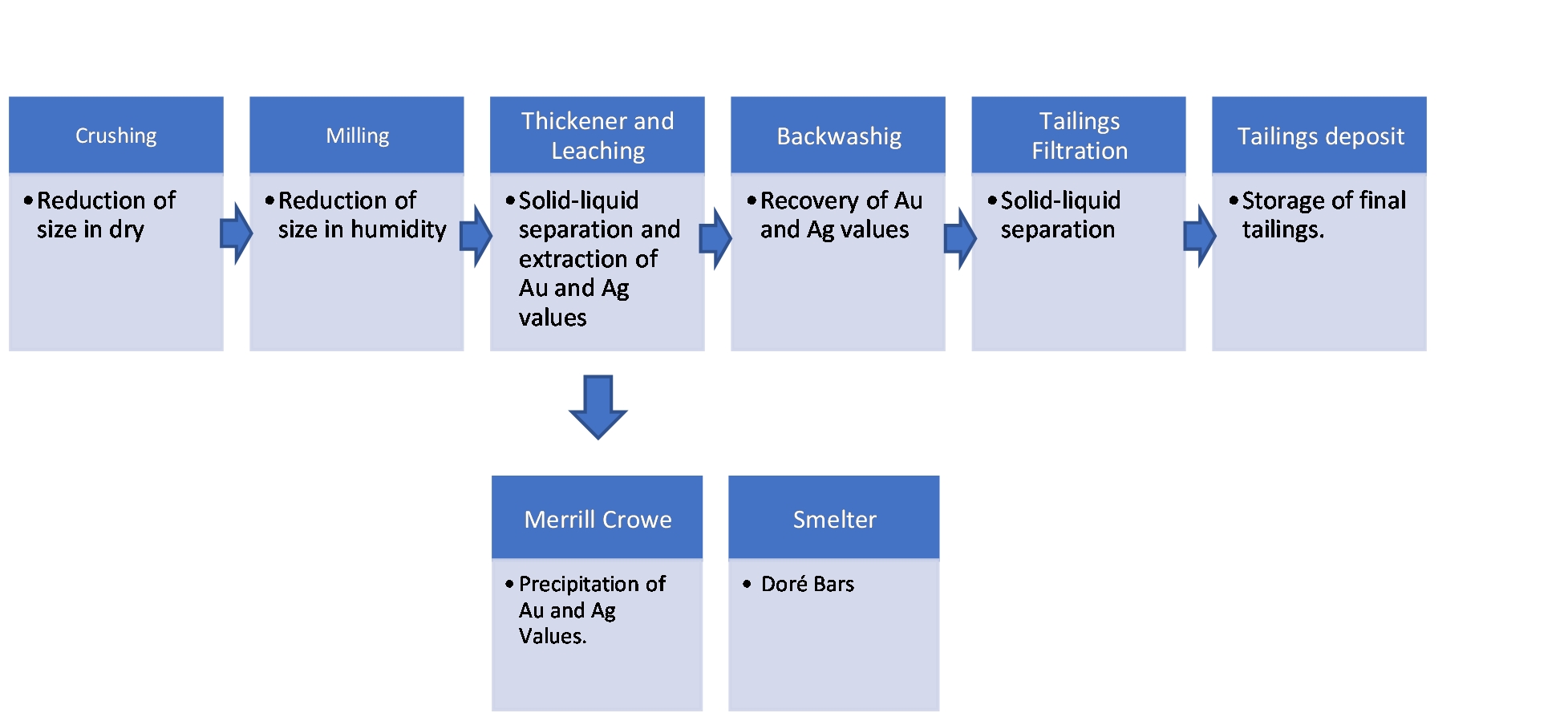
Figure 13-1:Plant flow chart (from Processing Department)
13.1Process of the Benefit Plant
Process plant is an agitated cyanide leach plant that produces Au-Ag doré by using Merryll-Crowe circuit. The facilities of the plant are designed to process gold and silver ore at a rate of 627 tpd, with the capacity of 1,100 tpd, in a series circuit that includes crushing, milling, leaching, a system of countercurrent washing by decantation and Merrill Crowe for the recovery of the silver and gold values.
The flow diagram of the plant consists of the following processes:
| • | Primary and secondary milling |
| • | Dynamic leaching with gaseous oxygen injection |
Erme Enriquez, CPGJuly 18, 202239
STARCORE International Mines Ltd.
San Martin Mine NI 43-101 Technical Report: Updated Mineral Resource and Reserve
| • | Counter-current washing circuit by decanting |
| • | Precipitation of values (Merrill Crowe) |
| • | Reagent preparation systems and their distribution |
In the crushing area, the ore is reduced to ¼ in., To be fed to the primary ball mills and later to the secondary vertical mill to obtain a 70% product at 74 microns. This is fed to the dynamic leaching circuit where oxygen is injected. The dissolved values are recovered by precipitating them with zinc powder in the Merrill Crowe process and melting to obtain doré bars with a purity of 99.3%.
The tailings are filtered before being deposited in the dam (Figure 13-2). The recovered solution is returned to the process.
The filtered tailings are transported to the deposit to be stored, a tailing banding system is used to be compacted and wind erosion is minimized. Later, when one side of the slope is formed, reforestation with flora of the region is conducted to avoid rain erosion (Figure 13-3).
In mid-2012, a decrease in mill recoveries was detected. The problem was that carbonaceous mineral was being fed in high quantities and the recovery of gold fell 75.2% and 60.5% in June and July respectively. The metallurgical investigations showed that the ore could be recovered with the following treatment:
a) A low temperature roast of the carbonaceous ore
b) A conversion to Carbon in Leach processing
The organic matter in the carbonaceous mineral affects the leaching process, however, this type of mineral has always existed in the San Martin body and in the body Cuerpo 29 and its exploitation never caused problems in the chemical treatment in the past. This mineral was fed to the mill between 10% and 15% of the total daily processed mineral, between the years 1998 and 2003.
A processing flow sheet dated April 2022 is presented in Figure 13-4.
13.1.1Crushing Area
The first part of the beneficiation process consists of a reduction in the size of the ore coming from the mine. A hopper with a capacity of 80 tons is installed and a closed circuit of breakers that allows the reduction up to 1/4 ". The first reduction, which is from 12" to 4" is made by a jaw crusher, the second reduction, at 1/4" is done in a cone crusher, then all the ore is screened and sent to the pile stock of the grinding area.
13.1.2Grinding Area
In this section there is a primary grinding conducted by a ball mill with dimensions of 9'x9', which aims to reduce the ore allowing the release of gold and silver particles, here begins the dissolution of values by adding sodium cyanide and lime to maintain the basic pH. Following this stage there is a secondary grinding carried out by a Vertimill VTM-200 mill which reduces the ore to a size of 74 microns.
Erme Enriquez, CPGJuly 18, 202240
STARCORE International Mines Ltd.
San Martin Mine NI 43-101 Technical Report: Updated Mineral Resource and Reserve
13.1.3Chemical Treatment Area
Here is carried out, as a first step, a solid-liquid separation to recover the solution rich in gold and silver values. The leaching of the values that are still present in the solids is conducted in the leaching tanks obtaining recoveries of 88% for gold and 54% for silver. It is worth mentioning that this area has had significant changes reducing residence times. This has been achieved by the development of metallurgical tests carried out in the SM complex. The process is based on the addition of gaseous oxygen to the process, allowing a temporary oxidation of the metals of value which leads to a rapid formation of the complex of gold-silver-cyanide.
13.1.4Tailings Filtration Area
After the gold and silver values have been leached, the solids are sent to the tailings filtration area, where solution is recovered and sent back to the process and the solids are discharged with a humidity of 20% to be deposited in the tailings dam.
13.1.5Merrill-Cowe Area
The value-rich solution from the chemical treatment area is clarified by a filtration system, the solids present are kept in the filter medium producing a clean solution. Subsequently, the oxygen present in the solution is removed by means of a vacuum column. Once you have an oxygen-free solution and a minimum of solids, zinc powder is added to it, generating an oxide-reduction reaction called cementation of gold and silver. This metallic sludge is retained in filter presses from which they are recovered to be dried and sent to the smelter.
13.1.6Smelting Area
The process of obtaining doré bars is conducted in electric induction furnaces using a graphite smelting pot, to obtain gold and silver bars with a purity of 99.3%. What was achieved by changing the conventional refining method that consisted of oxidation by decomposition of sodium nitrate, which had a drawback, such an aggressive oxidation that damaged the smelting pot, making it impossible to reach purities above 98%. Now days, in the San Martin unit, doré is refined by creating an atmosphere rich in oxygen gas, which causes the elimination of impurities to be more selective, reducing damage to the smelting pot by 80%.
13.2Comment on Mineral Processing and Metallurgical Testing and Recoveries
In the opinion of the QP, the metallurgical process is proper to establish reasonable processing methods for the different mineralization styles encountered in the deposit. Geometallurgical samples are carefully selected to represent future ores and recovery factors have been confirmed from production data collected from ore processed in underground.
13.3Data Adequacy
The data provided by SMI conforms to the industry standards and is within the accuracy of this study and verified for use in this study. Historic production from multiple oreshoots at the San Martin mine proves the capacity of the plant to process the mineralized material. As a result, the processing and associated recovery factors are considered appropriate to support mineral reserve and mineral resource estimation and mine planning.
Erme Enriquez, CPGJuly 18, 202241
STARCORE International Mines Ltd.
San Martin Mine NI 43-101 Technical Report: Updated Mineral Resource and Reserve
13.1Metallurgical Testing and Recovery
Metallurgical research is aimed at improving the recovery of gold and silver, reducing the process time, and reducing costs. In the San Martin ore, a reduction in the process time has been obtained without undermining the metallurgical recovery, currently working with a treatment time of 35 hours, which has helped reduce cyanide consumption, reducing costs.
To achieve this process time, the addition of oxygen in gaseous form was implemented in the grinding area. Currently, a mixture of reagents that increase the recovery of gold and silver values is being investigated, the objective is to reach 93% gold extraction. In the tests conducted, this result has been reached, so the process of validation and repeatability of results will begin with an external laboratory before carrying out tests directly at the Processing Plant. The smelter area is part of the process, which is why an investigation was started to reduce the impurities in the doré bars. The tests carried out have led us to produce bars with a purity of 99.3% industrially so far this year 2022 and consequently the consumption of fluxes and crucibles was reduced, which led the pant to lower the smelter costs. The San Martin ore, in some of its areas, has a characteristic of refractoriness caused by the presence of carbonaceous material. Tests have been conducted with different processes and reagents, achieving gold extractions of 82%. Research continues to search for alternatives that can improve these results at a low cost.
13.2Data Adequacy
 The data provided by SMI conforms to the industry standards and is within the accuracy of this study and verified for use in this study. Historic production from multiple oreshoots at the San Martin mine proves the capacity of the plant to process the mineralized material. As a result, the processing and associated recovery factors are considered appropriate to support mineral reserve and mineral resource estimation and mine planning.
The data provided by SMI conforms to the industry standards and is within the accuracy of this study and verified for use in this study. Historic production from multiple oreshoots at the San Martin mine proves the capacity of the plant to process the mineralized material. As a result, the processing and associated recovery factors are considered appropriate to support mineral reserve and mineral resource estimation and mine planning.
Figure 13-2:Dry tailings being collected and hauled to the tailings pond
Erme Enriquez, CPGJuly 18, 202242
STARCORE International Mines Ltd.
San Martin Mine NI 43-101 Technical Report: Updated Mineral Resource and Reserve
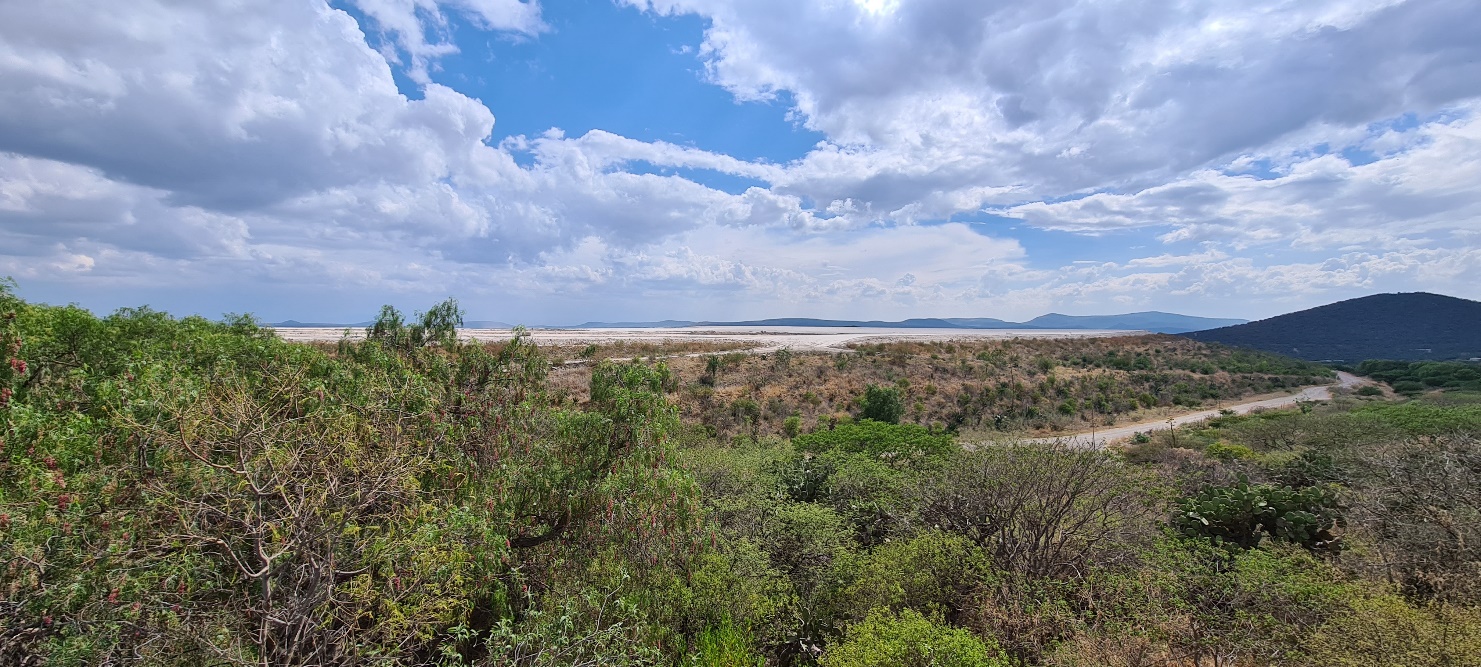
Figure 13-3:Reforestation of the northern part of the tailings pond, north sector
Erme Enriquez, CPGJuly 18, 202243
STARCORE International Mines Ltd.
San Martin Mine NI 43-101 Technical Report: Updated Mineral Resource and Reserve
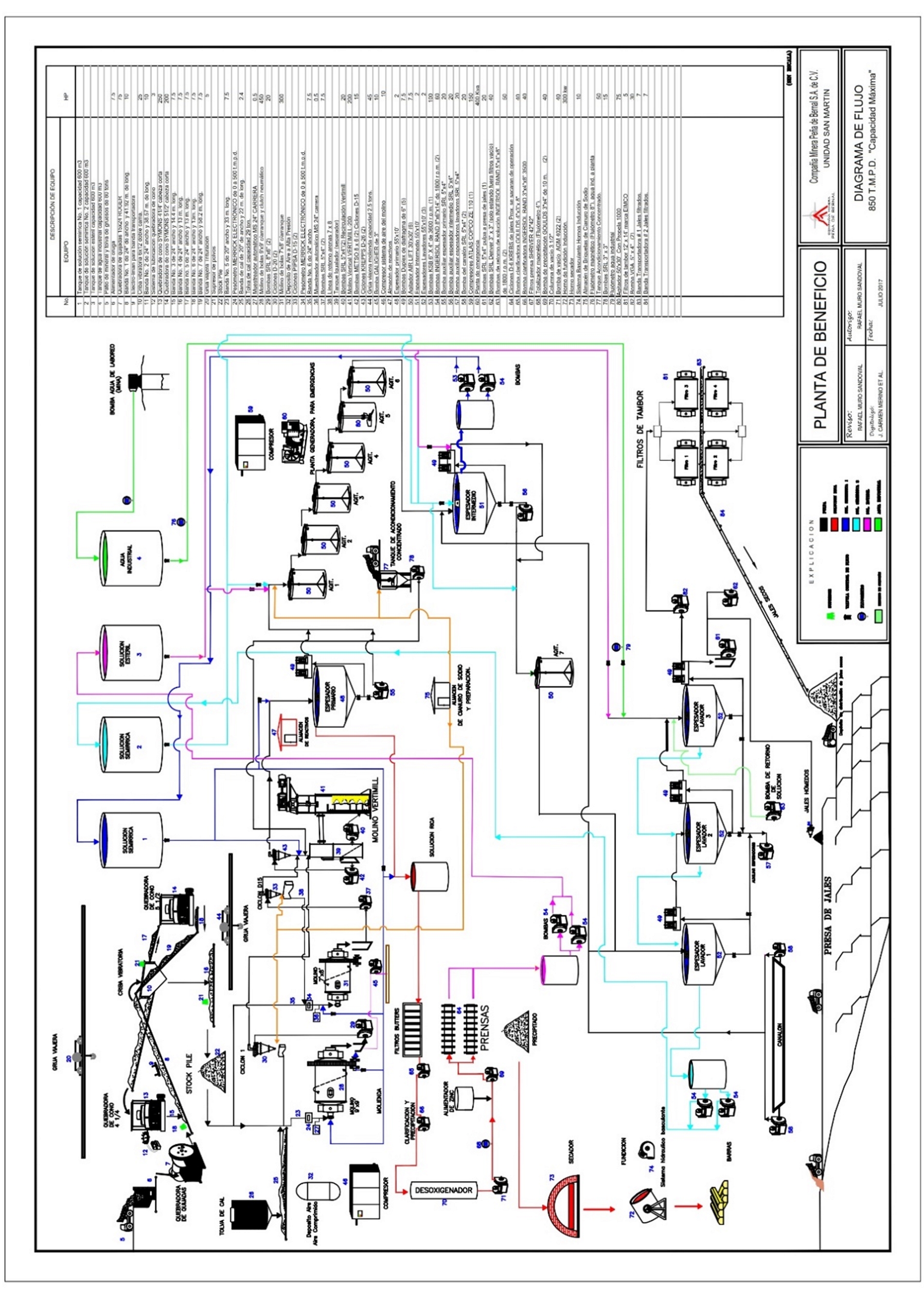
Figure 13-4:Flowsheet of the mill process at San Martin Mine
Erme Enriquez, CPGJuly 18, 202244
STARCORE International Mines Ltd.
San Martin Mine NI 43-101 Technical Report: Updated Mineral Resource and Reserve
14.0MINERAL RESOURCE ESTIMATES
14.1Introduction and Qualified Person
This Report provides a mineral resource estimate and a classification of resources reported in accordance with the CIM Definition Standards for Mineral Resources and Mineral Reserves. Accordingly, the Mineral Resources have been classified as lndicated Mineral Resources or lnferred Mineral Resources. The Mineral Resource estimate for the mine is reported here in accordance with the SEC S-K 1300 regulations. For estimating the Mineral Resources of San Martin Mine, the following definition as set forth in the S-K 1300 Definition Standards adopted December 26, 2018, was applied.
The Mineral Resource estimate and related geologic modeling were reviewed and approved by Erme Enriquez, C.P.G. Mr. Enriquez is a Qualified Person, independent of SMI for purposes of this study.
Mr. Enriquez worked for Luismin (former owner of San Martin) for 21 years and visited the San Martin Mine regularly every other month from 1996 to 2002 and is familiarized with the deposit. Mr. Enriquez has visited the San Martin Mine from June 07 to 10, 2012. Mr. Enriquez is an independent Qualified Person as defined by National Instrument 43-101. This Mineral Resource/Reserve estimate is effective as of April 30, 2012, and follows the previous independent Resource/reserve estimate performed as of September 30, 2019, by Erme Enriquez, as of April 30, 2018, by Erme Enriquez, as of July 31, 2013, and 2014 by David R. Gunning, P. Eng. and Joseph W. Campbell, P. Geo. Previous audits of Luismin's operations as of December 31, 2001; December 31, 2002; and, August 31, 2004, were performed by Watts Griffis McOuat. Prior to 2001, Pincock, Allen & Holt had conducted independent audits in the years 1998, 1999 and 2000.
Total Estimated Inferred and Indicated Resources at the San Martín Mine are 1,481,770 tonnes at a grade of 1.78 g Au/t and 14 g Ag/t. The calculation of resources had been updated, when only the inferred resources were reported and not the indicated resources, not measured resources have been included due to the lack of enough drilling to support this category. In this Report, the inferred and indicated resources have been included, so the calculation, compared to the year 2019, with a little decrease.
14.2Density
The San Martin staff apply a factor of 2.6 tonnes/m3 to convert volume to tonnage. This is considered reasonable for the type of deposit and is based on long production experience and historic measurements.
14.3Methodology
The Inferred and Indicated Mineral Resources are estimated by projecting typical structural geometry within the confines of the various geological structures into untested areas. The thickness of the structure and the gold and silver grades assigned to these resources was previously based on the average of past production stopes within similar structures within each mine area.
In 2010 a change was made to reflect grades from stopes that are proximal to the Inferred blocks. This resulted in a significant decrease in the grade of metals for the Inferred ore at that time but better reflects the reality of the structures. In some cases, when there are various blocks below or above the block of the projected Inferred Mineral Resources, the average of their grade and
Erme Enriquez, CPGJuly 18, 202245
STARCORE International Mines Ltd.
San Martin Mine NI 43-101 Technical Report: Updated Mineral Resource and Reserve
thickness is used in the estimate. However, in other cases, statistics for gold and silver that have been produced through diamond drillholes and through development are applied. Blocks for Inferred Resources are colored blue.
Indicated Mineral Reserves are defined primarily by diamond drilling. In these cases, a square is drawn on the vertical longitudinal section with the drillhole centered on the square. The shape and size of the block depends upon the geological interpretation with the maximum size of the block based on the thickness of the vein as follows:

All blocks for this category are colored green. Inferred and Indicated Mineral Resources are shown in Table 14-1.
14.4Definition Mineral Resource
The mineral resource estimation for the San Martin Mine was completed in accordance with the guidelines of Canadian National Instrument 43-101 (“NI 43-101”). The modeling and estimation of the mineral resources were completed on June 30, 2018, under the supervision of Erme Enriquez, qualified person with respect to mineral resource estimations under NI 43-101. The effective date of the resource estimate is September 30, 2019. Mr. Enriquez is independent of SIM by the definitions and criteria set forth in NI 43-101; there is no affiliation between Mr. Enriquez and SIM except that of independent consultant/client relationships.
The San Martin resources are classified in order of increasing geological and quantitative confidence in Proven and Probable, Inferred, Indicated, and Measured categories in accordance with the “CIM Definition Standards – For Mineral Resources and Mineral Reserves” (2014) and therefore NI 43-101. CIM mineral resource definitions are given below, with CIM’s explanatory text shown in italics:
Mineral Resource
Mineral Resources are sub-divided, in order of increasing geological confidence, into Inferred, Indicated and Measured categories. An Inferred Mineral Resource has a lower level of confidence than that applied to an Indicated Mineral Resource. An Indicated Mineral Resource has a higher level of confidence than an Inferred Mineral Resource but has a lower level of confidence than a Measured Mineral Resource.
A Mineral Resource is a concentration or occurrence of solid material of economic interest in or on the Earth’s crust in such form, grade or quality and quantity that there are reasonable prospects for eventual economic extraction. The location, quantity, grade or quality, continuity and other geological characteristics of a Mineral Resource are known, estimated or interpreted from specific geological evidence and knowledge, including sampling.
Erme Enriquez, CPGJuly 18, 202246
STARCORE International Mines Ltd.
San Martin Mine NI 43-101 Technical Report: Updated Mineral Resource and Reserve
Material of economic interest refers to diamonds, natural solid inorganic material, or natural solid fossilized organic material including base and precious metals, coal, and industrial minerals.
The term Mineral Resource covers mineralization and natural material of intrinsic economic interest which has been identified and estimated through exploration and sampling and within which Mineral Reserves may subsequently be defined by the consideration and application of Modifying Factors. The phrase ‘reasonable prospects for eventual economic extraction’ implies a judgment by the Qualified Person in respect of the technical and economic factors likely to influence the prospect of economic extraction. The Qualified Person should consider and clearly state the basis for determining that the material has reasonable prospects for eventual economic
extraction. Assumptions should include estimates of cutoff grade and geological continuity at the selected cut-off, metallurgical recovery, smelter payments, commodity price or product value, mining and processing method and mining, processing and general and administrative costs. The Qualified Person should state if the assessment is based on any direct evidence and testing.
Interpretation of the word ‘eventual’ in this context may vary depending on the commodity or mineral involved. For example, for some coal, iron, potash deposits and other bulk minerals or commodities, it may be reasonable to envisage ‘eventual economic extraction’ as covering time periods in excess of 50 years. However, for many gold deposits, application of the concept would normally be restricted to perhaps 10 to 15 years, and frequently to much shorter periods of time.
Inferred Mineral Resource
An Inferred Mineral Resource is that part of a Mineral Resource for which quantity and grade or quality are estimated on the basis of limited geological evidence and sampling. Geological evidence is sufficient to imply but not verify geological and grade or quality continuity. An Inferred Mineral Resource has a lower level of confidence than that applying to an Indicated Mineral Resource and must not be converted to a Mineral
Reserve. It is reasonably expected that the majority of Inferred Mineral Resources could be upgraded to Indicated Mineral Resources with continued exploration.
An Inferred Mineral Resource is based on limited information and sampling gathered through appropriate sampling techniques from locations such as outcrops, trenches, pits, workings and drill holes. Inferred Mineral Resources must not be included in the economic analysis, production schedules, or estimated mine life in publicly disclosed
Pre-Feasibility or Feasibility Studies, or in the Life of Mine plans and cash flow models of developed mines. Inferred Mineral Resources can only be used in economic studies as provided under NI 43-101.
There may be circumstances, where appropriate sampling, testing, and other
measurements are sufficient to demonstrate data integrity, geological and grade/quality continuity of a Measured or Indicated Mineral Resource, however, quality assurance and quality control, or other information may not meet all industry norms for the disclosure of an Indicated or Measured Mineral Resource. Under these circumstances, it may be reasonable for the Qualified Person to report an Inferred Mineral Resource if the Qualified Person has taken steps to verify the information meets the requirements of an Inferred Mineral Resource.
Indicated Mineral Resource
Erme Enriquez, CPGJuly 18, 202247
STARCORE International Mines Ltd.
San Martin Mine NI 43-101 Technical Report: Updated Mineral Resource and Reserve
An Indicated Mineral Resource is that part of a Mineral Resource for which quantity, grade or quality, densities, shape and physical characteristics are estimated with sufficient confidence to allow the application of Modifying Factors in sufficient detail to support mine planning and evaluation of the economic viability of the deposit.
Geological evidence is derived from adequately detailed and reliable exploration, sampling and testing and is sufficient to assume geological and grade or quality continuity between points of observation.
An Indicated Mineral Resource has a lower level of confidence than that applying to a Measured Mineral Resource and may only be converted to a Probable Mineral Reserve. Mineralization may be classified as an Indicated Mineral Resource by the Qualified Person when the nature, quality, quantity and distribution of data are such as to allow confident interpretation of the geological framework and to reasonably assume the continuity of mineralization. The Qualified Person must recognize the importance of the Indicated Mineral Resource category to the advancement of the feasibility of the project. An Indicated Mineral Resource estimate is of sufficient quality to support a Pre-Feasibility Study which can serve as the basis for major development decisions.
Measured Mineral Resource
A Measured Mineral Resource is that part of a Mineral Resource for which quantity, grade or quality, densities, shape, and physical characteristics are estimated with confidence sufficient to allow the application of Modifying Factors to support detailed mine planning and final evaluation of the economic viability of the deposit.
Geological evidence is derived from detailed and reliable exploration, sampling and testing and is sufficient to confirm geological and grade or quality continuity between points of observation.
A Measured Mineral Resource has a higher level of confidence than that applying to either an Indicated Mineral Resource or an Inferred Mineral Resource. It may be converted to a Proven Mineral Reserve or to a Probable Mineral Reserve.
Mineralization or other natural material of economic interest may be classified as a Measured Mineral Resource by the Qualified Person when the nature, quality, quantity and distribution of data are such that the tonnage and grade or quality of the mineralization can be estimated to within close limits and that variation from the estimate would not significantly affect potential economic viability of the deposit. This category requires a high level of confidence in, and understanding of, the geology and controls of the mineral deposit.
Modifying Factors
Modifying Factors are considerations used to convert Mineral Resources to Mineral Reserves. These include, but are not restricted to, mining, processing, metallurgical, infrastructure, economic, marketing, legal, environmental, social and governmental factors.
Erme Enriquez, CPGJuly 18, 202248
STARCORE International Mines Ltd.
San Martin Mine NI 43-101 Technical Report: Updated Mineral Resource and Reserve
Table 14-1:Inferred and Indicated Mineral Resources at the San Martín Mine
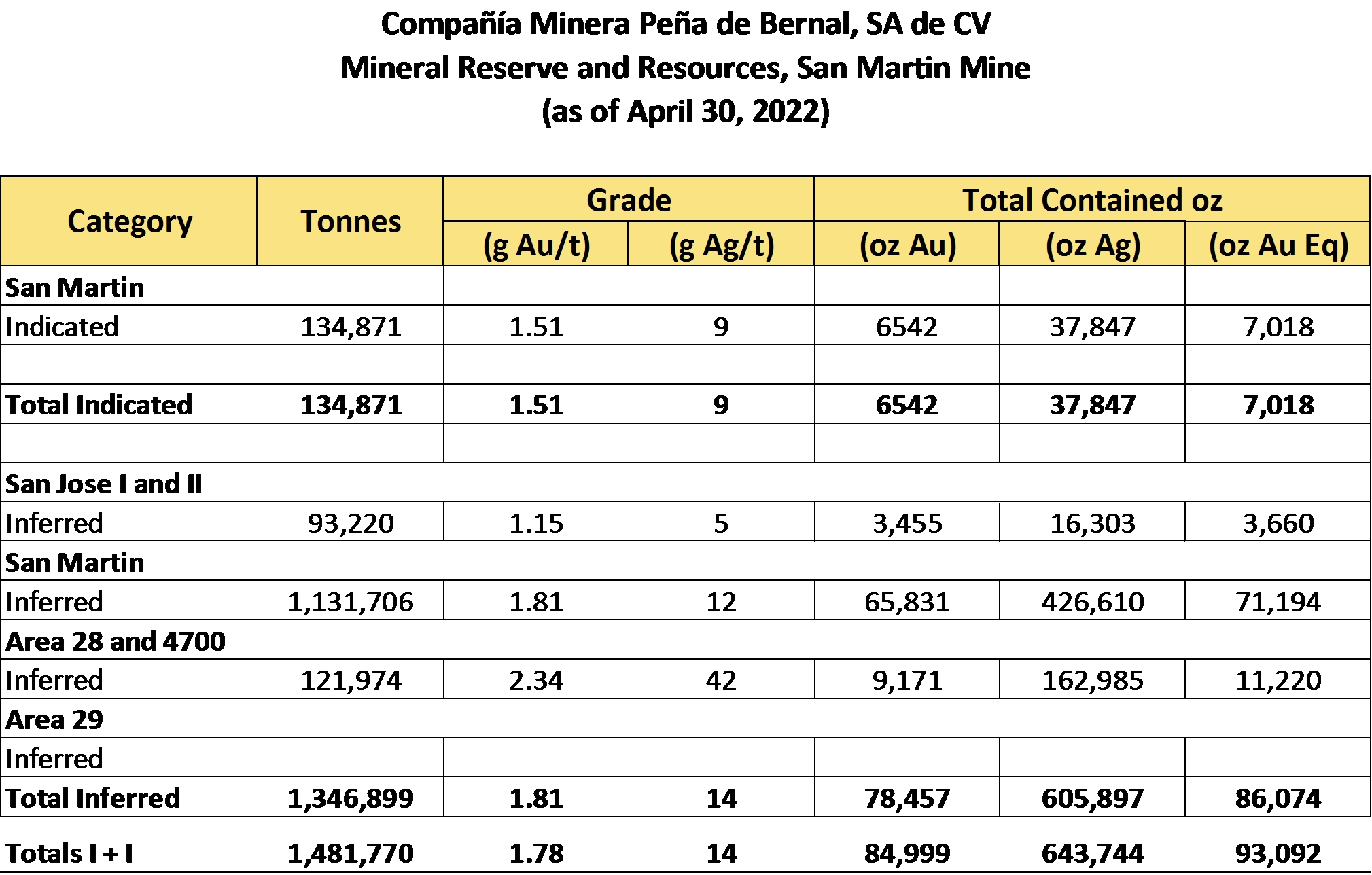
| • | Mineral resources have been classified into inferred and indicated in accordance with the |
| • | Tonnage is expressed in tonnes; metal content is expressed in ounces. Totals may not add up due to rounding. |
| • | Indicated and Inferred resource cut-off grades are based on a 1.41 g/t gold equivalent. |
| • | Metallurgical Recoveries were 86% gold and 55% silver. |
| • | Mining Recoveries of 90% were applied. |
| • | Minimum mining widths were 2.0 meters. |
| • | Dilution factors is 20%. Dilution factors are calculated based on internal stope dilution calculations. |
| • | Gold equivalents are based on a 1:79.5 gold:silver ratio. Au Eq= gAu/t + (gAg/t ÷ 79.5) |
| • | Price assumptions are $1750 per ounce for gold and $22 per ounce for silver. |
| • | Mineral resources are estimated exclusive of and in addition to mineral reserves. |
| • | Resources were estimated by SIM and reviewed by Erme Enriquez CPG. |
15.0MINERAL RESERVE ESTIMATE
15.1Introduction
Mineral reserve estimates in this Report are reported following the requirements of Subpart 1300. Accordingly mineral resources in the measured and indicated categories have been converted to proven and probable mineral reserves respectively, by applying applicable modifying factors and are planned to be mined out under the LOM plan within the period of our existing rights to mine, or within the time of assured renewal periods of rights to mine.
Erme Enriquez, CPGJuly 18, 202249
STARCORE International Mines Ltd.
San Martin Mine NI 43-101 Technical Report: Updated Mineral Resource and Reserve
Total Proven and Probable Mineral Reserves at the San Martin mine as of April 30, 2022, estimated by Geology staff and reviewed by QP, are 1,348,433 tonnes at a grade of 1.74 g Au/t and 13 g Ag/t (Table 12-1). This total includes Proven reserves of 144,331 tonnes grading 1.79 g/t Au and 14 g/t Ag along with Probable reserves of 1,204,102 tonnes grading 1.73 g/t Au and 13 g/t Ag. The Carbonaceous material has not been included in the Reserves and that is why P&P reserves have decreased. The carbonaceous reserves have been always present in the deposit and has been mined and sent to the plant using normal treatment, but those always caused a problem with the recovery of gold. The reserves represent only 5.5% of total reserves and can be left for better times when the right process is found for treatment. There exists sufficient non- carbonaceous ore to operate for two full years, which should be enough for feeding the plant for several years.
The estimation methods used Luismin/Goldcorp have been retained to some degree, but there have been substantial changes to determination criteria for Proven and Probable reserves, and changes to dilution rates to account for the mining of Tronco ore zones and remnant ore (both hanging wall and strike and dip extensions) versus the dominance of Manto ore mined in the past.
Relative to the Manto ore the Tronco ore is thinner and stepper dipping which has resulted in higher dilution during mining due to most of the ore being mined by cut and fill methods versus the room and pillar method in the thicker flat lying Mantos. For remnant ore there is a greater dilution associated with minimal widths for mechanical equipment, which at times exceeds the remnant ore widths. There is also additional dilution associated with breaking and mucking ore next to unconsolidated fill from past mining. Cutting of some high-grade samples has been implemented to try to better predict mined grades. As well grades were lowered in some ore blocks with sufficient production history to establish the lower grades.
Modifications have also been made to the determination of Probable and Proven ore. Most notably Proven ore is only calculated for blocks above mine development, whereas in the past Proven ore was also extended below workings.
The author believes that the Mineral Reserve and Mineral Resource estimates fairly represent the Mineral Reserve/Mineral Resource potential of the property.
The previous NI43-101 compliant estimation as of July 31, 2014, prepared by David R. Gunning, P. Eng., and Joseph W. Campbell, P.Geo, reported a total proven and probable reserves of 486,586 tonnes at a grade of 2.31 g Au/t and 18.5 g Ag/t. This total included Proven reserves of 179,589 tonnes grading 2.33 g/t Au and 17 g/t Ag along with Probable reserves of 306,997 tonnes grading 2.30 g/t Au and 19 g/t Ag. In addition to this reserve is 181,546 tonnes at a grade of 2.98 g/t Au and 32 g/t Ag which is hosted in carbonaceous limestone, of which 88,000 tonnes of this material have been mined in the last five years.
15.2Methodology
The 2D polygonal method uses a fixed distance of Vertical Longitudinal Projection (VLP) from sample points. The VLP’s are created by projecting the mine workings of a vein onto a vertical 2D long section. Figure 15-1 displays the VLP for the San José II vein. Reserve blocks are constructed on the VLP based on the sample locations in the plane of the projection. SIM geologists review the data for sample trends and delineate areas with similar characteristics along the sample lines. The areas are then grouped based on mining requirements. The average grades and thicknesses of the samples are then tabulated for each block.
Erme Enriquez, CPGJuly 18, 202250
STARCORE International Mines Ltd.
San Martin Mine NI 43-101 Technical Report: Updated Mineral Resource and Reserve
Reserve volumes are calculated from the delineated area and the horizontal thickness of the vein, as recorded in the sample database. The volume and density are used to determine the overall resource tonnage for each area, and the grades are reported as a length weighted average of the samples inside each resource block. No special software is used for the drawing of mineral blocks on the vertical section for each of the veins. Recently Leapfrog is being used for the estimation of reserve and resources, but still inadequate to the type and style of mineralization on this deposit.
The method of calculating proven and probable reserves is the product of many years of production in the mines operated by Luismin and SIM. This calculation system is still valid because it has worked in San Martin for the last 30 years. The calculation method of San Martín is in accordance with the parameters established by CIM.
The following criteria are used by SIM geologists to classify Proven and Probable Mineral Reserves. The distance for vertical projections for Proven Mineral Reserves and Probable Mineral Reserves is a function of the length of the block, defined as follows:

15.3Reconciliation of Mineral Reserves to Production
Due to the lack of data for calculating reserves and reconciling resources, the transformation of resources into reserves was used for this purpose. This method was established by Mr. Enriquez, for all Luismin's operations, and was used by WGM for their Technical Report of 2009.
The Transformation of resources into reserves, for the period of April 2014 to April 2022 is shown in Table 15-1. QP states that the data used for this report, where the transformation of inferred resources into proven and probable reserves is calculated, has the same validity as those used in the past by Luismin, and with which it was worked for a long time.
During the eight-year period (2014 to 2022), the percentage of the estimated Inferred Resource at San Martin transformed into Mineral Reserves was 410% (i.e., the Inferred Mineral Resource was underestimated as the estimate transformed into Mineral Reserves was exceeded by 410%. This is right since no measured resources have been determined in the history of the deposit.
Erme Enriquez, CPGJuly 18, 202251
STARCORE International Mines Ltd.
San Martin Mine NI 43-101 Technical Report: Updated Mineral Resource and Reserve
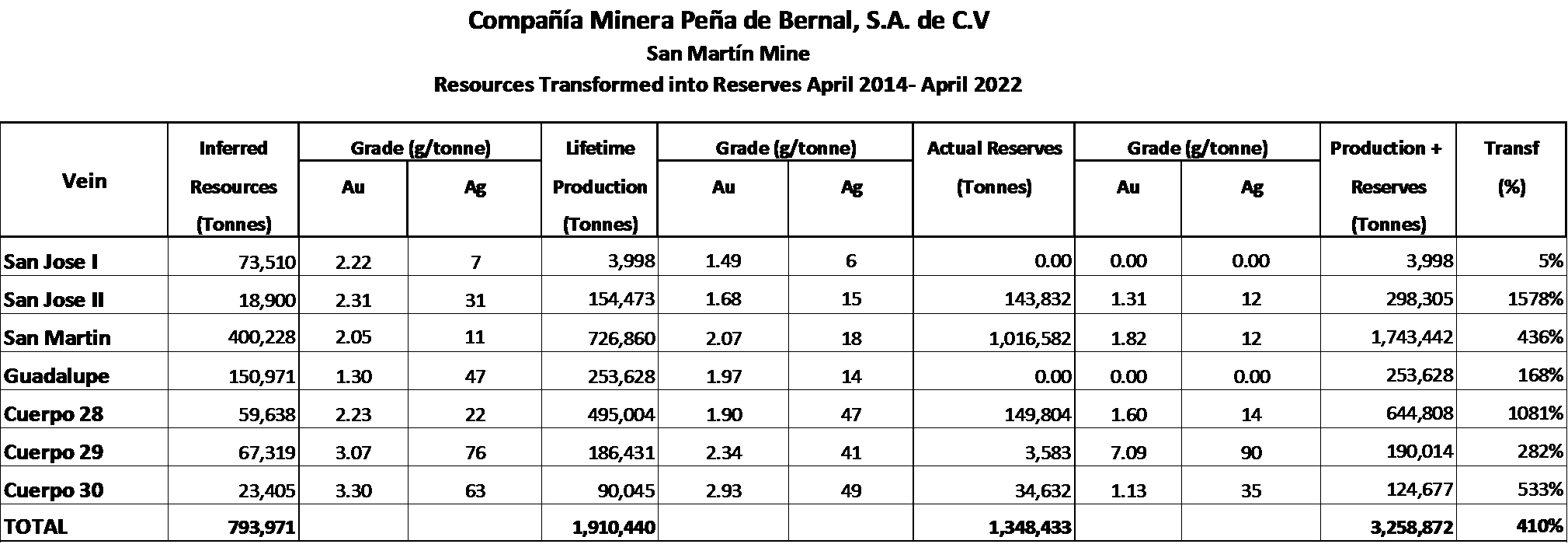 Table 15-1:Resources Transformed into Reserves from April 2017 to April 2022
Table 15-1:Resources Transformed into Reserves from April 2017 to April 2022
The inferred resources at San José I Area in 2014 were 73,510 tons, but only 3,998 were transformed into proven reserves. This results in only 5% of the inferred resources being transformed. On the contrary, in the San José II Area there were 18,900 tons of inferred resources in 2014, the mined tonnage from 2014 to April 2022 has been 154,453 proven tons and there are proven and probable reserves of 143,842; giving this as a result of the resources transformed into reserves in the last eight years exceeds 1578%. Why this number so high? This is due to the fact that the resources that were had were underestimated and when mining works arrived at the blocks, they contained more tons than those inferred. A review of the methodology of Inferred Resources is recommended.
15.4Mineral Reserve Statement
Mineral reserves are derived from Inferred resources after applying the economic parameters as stated previously and utilizing the VLP to generate stope designs for the reserve LOM plan. The stope designs are then used to mine on levels along with the required development for the final mine plans. The San Martín Mine mineral reserves have been derived and classified according to the following criteria:
Figures 15-1 and 15-2 shows reserve blocks depicted on a portion of a typical longitudinal section. Proven reserve blocks are shown in red, Probable reserve blocks are shown in yellow. The mine planners have determined that extraction of the blocks is feasible given grade, tonnes, costs, and access requirement.
The San Martín Mine Project mineral reserves have been derived and classified according to the following criteria:
| • | Proven mineral reserves are the economically mineable part of the Measured resource for which mining, and processing/metallurgy information and other relevant factors demonstrate that economic extraction is feasible. |
| • | Probable mineral reserves are those Measured or Indicated mineral resource blocks which are considered economic and for which SIM has a mine plan in place. |
The Proven and Probable mineral reserves for the San Martin mine as of April 30, 2022, are summarized in Table 15-1. The mineral reserves are exclusive of the mineral resources reported in Section 14 of this report.
Erme Enriquez, CPGJuly 18, 202252
STARCORE International Mines Ltd.
San Martin Mine NI 43-101 Technical Report: Updated Mineral Resource and Reserve
Table 15-1:Proven and Probable Mineral Reserves, Effective Date April 30, 2022
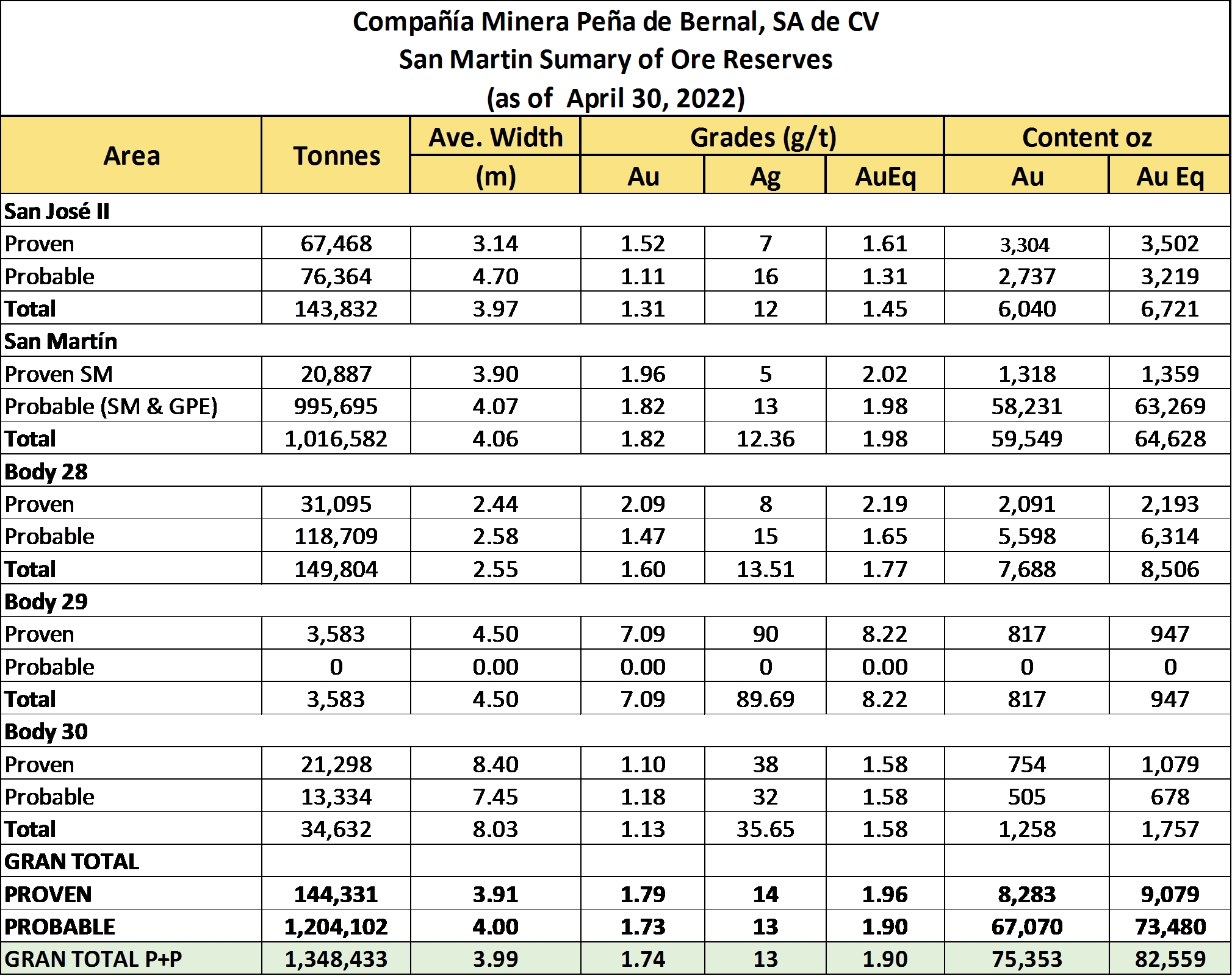
| • | Reserve cut-off grades are based on a 1.41 g/t gold equivalent. |
| • | Metallurgical Recoveries were 86% gold and 55% silver. |
| • | Mining Recoveries of 90% were applied. |
| • | Minimum mining widths were 2.0 meters. |
| • | Dilution factors is 20%. Dilution factors are calculated based on internal stope dilution calculations. |
| • | Gold equivalents are based on a 1:79.5 gold - silver ratio. Au Eq= gAu/t + (gAg/t ÷ 79.5) |
| • | Price assumptions are $1750 per ounce for gold and $22 per ounce for silver. |
| • | Mineral resources are estimated exclusive of and in addition to mineral reserves. |
| • | Resources were estimated by SIM staff and reviewed by Erme Enriquez C.P.G. |
| • | Reserves are exclusive of the indicated and measured resources. |
| • | Tonnage is expressed in tonnes; metal content is expressed in ounces. Totals may not add up due to rounding. |
Erme Enriquez, CPGJuly 18, 202253
STARCORE International Mines Ltd.
San Martin Mine NI 43-101 Technical Report: Updated Mineral Resource and Reserve
15.5Current Reserve Estimate Parameters
The classification of Reserves follows the Standards of Disclosure for Mineral Projects as documented in National Instrument 43-101 and adheres to the Canadian Institute of Mining, Metallurgy and Petroleum Best Practice Guidelines. Indicated Resources demonstrating economic viability are assigned the Probable category. No Measured Resources have been estimated, and therefore none of the Reserves estimated will be classified as Proven. The Mineral Reserves in table 15.1 are based on the following parameters where applicable (in US$):
| • | Gold price of US$ 1,750 / troy ounce (based corporate decision and price analyses for LOM scheduling cut-off as of April 30, 2022). |
| • | Silver price of US$22.00 / troy ounce (based on corporate decision and price analyses for LOM scheduling cutoff as of April 30, 2022). |
| • | Silver grade was converted to a gold equivalent (AuEq) using a 79.5:1 Ag (g/t) to Au (g/t) ration recoveries. |
| • | Mining recovery of 95% for mechanized cut and fill mining methods. |
| • | Global AuEq cut-off grade of 1.41 g/t for stope design. |
| • | Total cost per tonne of US$69.30 for mechanized cut and fill stoping methods including stope development, processing, and G & A costs. |
| • | Ore density of 2.6 tonnes /m3. |
15.5Factors that may Affect the Reserve Calculation
The San Martín operation is an operating mine with a relatively long history of production. The mine staff have considerable experience and knowledge regarding the nature of the orebodies in and around the San Martín Mine Property. Mine planning and operations need to continue to assure that the rate of waste development is sufficient to support the production rates included in the mine plan. It is unlikely that there will be a major change in ore metallurgy during the life of the current reserves, as nearly all the ore to be mined will come from veins with historic, recent, or current production. The process of mineral reserve estimation includes technical information which requires subsequent calculations or estimates to derive sub-totals, totals, and weighted averages. Such calculations or estimations inherently involve a degree of rounding and consequently introduce a margin of error. The QP does not consider these errors to be material to the reserve estimate. Areas of uncertainty that may materially affect the Mineral Reserves presented in this report include the following:
| • | Changes in taxation or royalties, |
| • | Variations in commodity price, |
| • | Metallurgical recovery, and |
Erme Enriquez, CPGJuly 18, 202254
STARCORE International Mines Ltd.
San Martin Mine NI 43-101 Technical Report: Updated Mineral Resource and Reserve
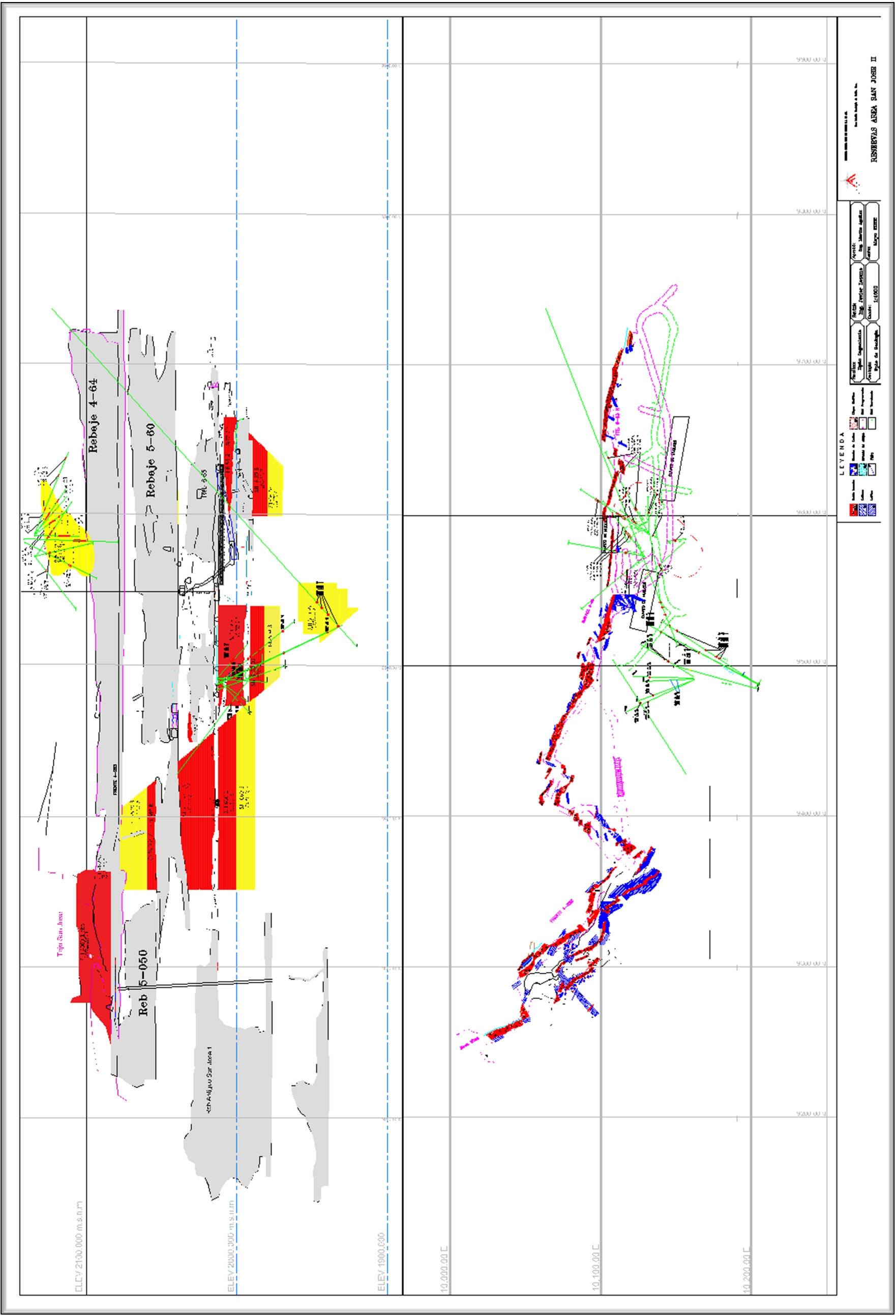 Figure 15-1:Typical vertical longitudinal section (VLP) showing the blocks of proven (red) and probable (yellow) ore in the San José II orebody
Figure 15-1:Typical vertical longitudinal section (VLP) showing the blocks of proven (red) and probable (yellow) ore in the San José II orebody
Erme Enriquez, CPGJuly 18, 202255
STARCORE International Mines Ltd.
San Martin Mine NI 43-101 Technical Report: Updated Mineral Resource and Reserve
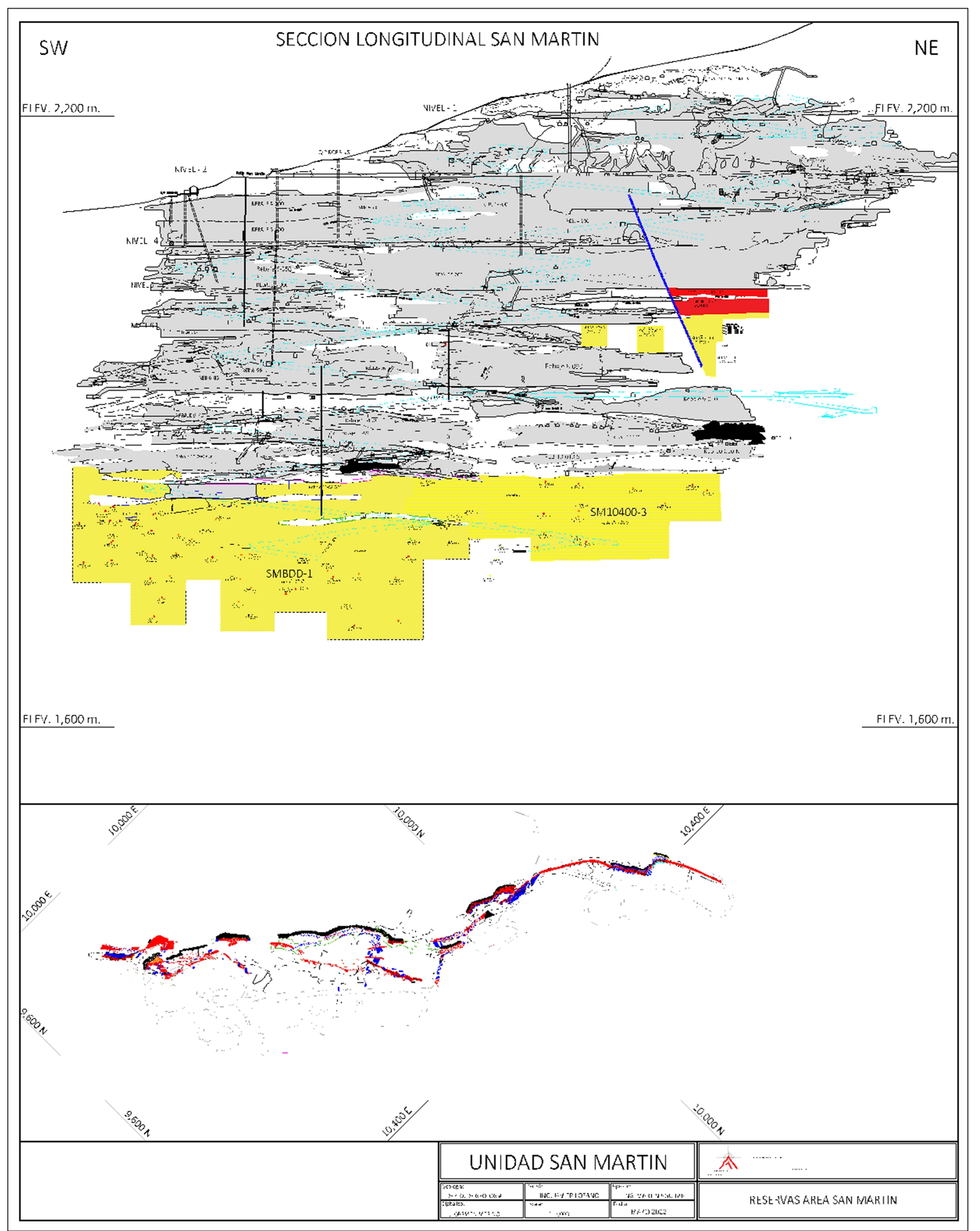
Figure 15-2:Generalized vertical longitudinal section of the San Martin oreshoot showing the proven and probable reserve blocks
Erme Enriquez, CPGJuly 18, 202256
STARCORE International Mines Ltd.
San Martin Mine NI 43-101 Technical Report: Updated Mineral Resource and Reserve
16.0MINING METHODS
The San Martin mine has a long operational history and mining conditions are well understood by the site and SIM corporate staff. The mining method is a conventional underground cut and fill.
16.1Mining Operations
Since 2008, SIM has been in control of the day-to-day mining operations at the San Martin Mine. SIM assumed control of the mining operations from a local mining contractor in order to allow for more flexibility in operations and to continue optimizing the costs.
The San Martin Mine project has a roster of 50 employees, 153 unionized workers and an additional 94 contractors. The San Jose mine operates on two 10-hour shifts (contractors) 20 by 8. The San Martin works 3 shifts 8 hours each, six days a week. The supervisors are in shifts of 20 by 8 for body 28 and 33 and 10 by 4 for San Martin. The mill operates on a 20/8 schedule.
The CMPB miners are skilled and experienced in vein mining and are currently unionized. In the production / development function, the Company’s agreement with the contractor is based on a set price There is an incentive system in place rewarding personnel for good attendance, safety, and production. Technical services and overall supervision are provided by SIM staff. The mine employs geology, planning and surveying personnel and has detailed production plans and schedules. All mining activities are being conducted under the direct supervision and guidance of the mine manager.
16.2Mining Method
Given the conditions of the San Martín Unit deposit, the conventional cut-and-fill mining method is mainly used (Figure 16-1)
It is known that the exploitation of mineral deposits by underground methods is more complex than those of the surface, for this reason it is necessary to pay special attention to each of the existing methods, for a correct planning of the exploitation of an ore body. The selection of the mining
Erme Enriquez, CPGJuly 18, 202257
STARCORE International Mines Ltd.
San Martin Mine NI 43-101 Technical Report: Updated Mineral Resource and Reserve
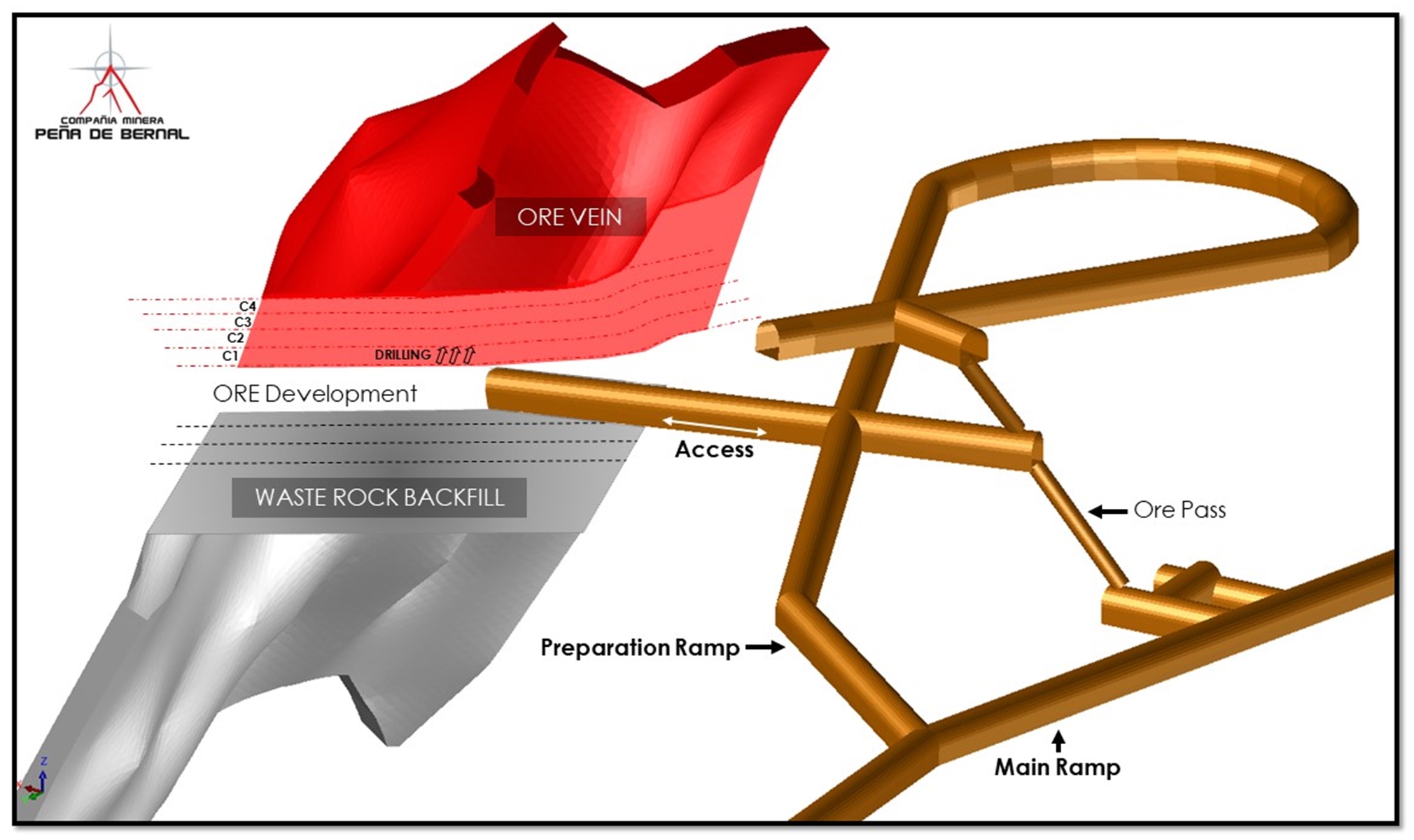 method that is intended to be used in a deposit or a mineralized body must be studied carefully, taking into consideration that it is the method that must be adapted to the deposit and not in a counted way, the present work shows in detail the cut and fill mining method, the advantages, and disadvantages of its use, to give a broader view of the method. We can ensure the effectiveness of this method of exploitation since many mines currently use it, it is important to mention that the method offers powerful advantages, over the rest of the exploitation methods, however, its application is not always possible. Currently, with the arrival of mechanization in the mining sector, the method has developed variants that allow it to maximize its potential.
method that is intended to be used in a deposit or a mineralized body must be studied carefully, taking into consideration that it is the method that must be adapted to the deposit and not in a counted way, the present work shows in detail the cut and fill mining method, the advantages, and disadvantages of its use, to give a broader view of the method. We can ensure the effectiveness of this method of exploitation since many mines currently use it, it is important to mention that the method offers powerful advantages, over the rest of the exploitation methods, however, its application is not always possible. Currently, with the arrival of mechanization in the mining sector, the method has developed variants that allow it to maximize its potential.
Figure 16-1:Schematic of the overhead cut-and-fill mining method (from Mine Engineering, Survey & Planning, 2022)
16.3Mining Method Description
In underground exploitation, mining is carried out from the top to the bottom of the different horizons or ore floor. It consists of breaking the ore. After a cut or floor has been completely extracted, it is filled before starting the new cut, this fill is what will help support the roof of the new cut that opens, the mining of the ore continues floor by floor until the end of the block.
Various factors were taken into account to choose the appropriate mining method (Table 16-1): the size and morphology of the ore body, the thickness and type of the surface scarp, the location, direction and dip of the deposit, the physical characteristics and resistance of the mineral, the presence or absence of groundwater and its hydraulic conditions related to the drainage of the works, economic factors involved with the operation, including the grade and type of ore, comparative mining costs and desired production rates.
A method was developed based on the variables mentioned to evaluate which is the most appropriate exploitation method, generating a value for the fulfillment of a factor or variable and thus generating a more effective choice.
Erme Enriquez, CPGJuly 18, 202258
STARCORE International Mines Ltd.
San Martin Mine NI 43-101 Technical Report: Updated Mineral Resource and Reserve
Table 16-1:Table for choosing the mining method

16.4Drilling
The objective of drilling is to establish a methodology that allows us to generate a cavity in the rock mass, with a diameter and a length determined in one linear meter. Consequently, it brings us an advance in either development or production, generating a tomb in ore. or waste or for drilling in a systematic anchoring support.
It is worth mentioning that before the drilling activity, the responsible personnel must verify the work area, correctly apply the work procedure and the work instructions, which tell us that we must check that our area is completely ventilated, free of particles from the blasting. Above, perfectly irrigate the load in a position from the outside to the inside, check simultaneously the tables of the undercut and ceiling, if any open rock, take the solidifying bar and lay it down immediately, that way we already have a safe undercut, and we can carry out drilling activity
Drilling is defined as the action of drilling wells or holes to recover our drilled material. The tools used for drilling are known as, which are formed by a proper mechanism to produce the effects of percussion or rotation, and which are normally provided with an attack bit.
16.5 Blasting
The objective of the blasting is to establish the methodology to provoke the fragmentation of the rock in a linear meter or a ton of ore or waste with the help of charging explosives under pressure with compressed air in the hole cavity.
It is worth mentioning that before starting the blasting activity, we must blow the holes well by injecting compressed air into them, leaving them free of any obstacle that prevents entry, we proceed with the priming of the explosive, which is to make a hole in the tovex charge and introduce the primer. , which we proceed to put it to the bottom of the hole and when the explosive charge has been introduced into the hole, we proceed to load the column of the hole by injecting mexamón dust under pressure with a special charger, before starting a blast and to take into account the already established recommendations such as the firing schedule and taking care of the entrance accesses to said area where the blasting is going to be carried out.
The blasting is achieved thanks to the excellent work of the driller and assistant, either using a leg or jumbo machine. For the efficient drilling of a face, the equipment must be in good condition, there must be services such as sufficient air if a leg machine is used, the electrical current necessary to be able to operate the jumbo and water for both cases. The pressure necessary for a leg machine to be efficient requires an air pressure of between 80 and 90 psi and a water pressure of .5 bar, and it also needs a certain amount of oil for lubrication.
16.6 Mucking
The leftover is the movement with heavy machinery of ore or waste leftovers, product of the detonation of blasting of production or development holes and unloading in cargo stock or accumulator, to transfer hoppers or directly to haul trucks generating a linear advance or production of economic or non-economic tonnage. The straggler is especially important because if the front in action is not prepared, it is not possible to continue drilling and therefore there is no progress. In
Erme Enriquez, CPGJuly 18, 202259
STARCORE International Mines Ltd.
San Martin Mine NI 43-101 Technical Report: Updated Mineral Resource and Reserve
addition to that if there is an excess of material in accumulators there is no option where to accommodate so much material.
16.7Haulage of Ore
The haulage establishes the methodology to generate movement on heavy machinery (low-profile truck, dump truck, etc.) or even with scoops of ore tailings or waste, product of the detonation of blasting of production or development holes and unloading in Inside mine stock, transfer hoppers, or its destination to treatment plants or backyard dumps.
It is of the utmost importance to be able to effectively identify the loads so that the ore reaches the benefit plant and thus ensure the planned contents.
16.8Geotechnical Review
A geotechnical analysis for the Project has not been conducted or reviewed by the author. The mine has historically operated without significant underground support on the than shotcreting areas with significant falling rocks. The rock is most competent and self-supporting. No areas of concern were noted.
16.9Ventilation
The San Martin mine is naturally ventilated. The access declines are used as an intake airway and the old mineworkings at San Martin and Bodies 28 and 33 use raises and drifts connected to Robbins raises for exhausting air (Figure 16-2). Booster fans are used in new drifts or areas away from the ventilation raises.
No further evaluation on the ventilation has been done since the mine operates at a temperature good enough for working comfortably.
16.10Dewatering
Dewatering at the San Martin mine is relatively simple. With several pumping stations, towards the surface, from the deepest part of the San Martin Mine and from the area of Bodies 28 to 32. The water is brought to the surface, and this is used for the processing of the ore in the plant. and for regular use and irrigation in gardens and on paths to avoid raising dust. The drain circuits are shown in the Figure 16-3.
Erme Enriquez, CPGJuly 18, 202260
STARCORE International Mines Ltd.
San Martin Mine NI 43-101 Technical Report: Updated Mineral Resource and Reserve

Figure 13-2:Ventilation circuit, at the San Martin Mine, by using Robbins raises ventilation intake and for exhausting (from Mine Engineering, Survey & Planning)
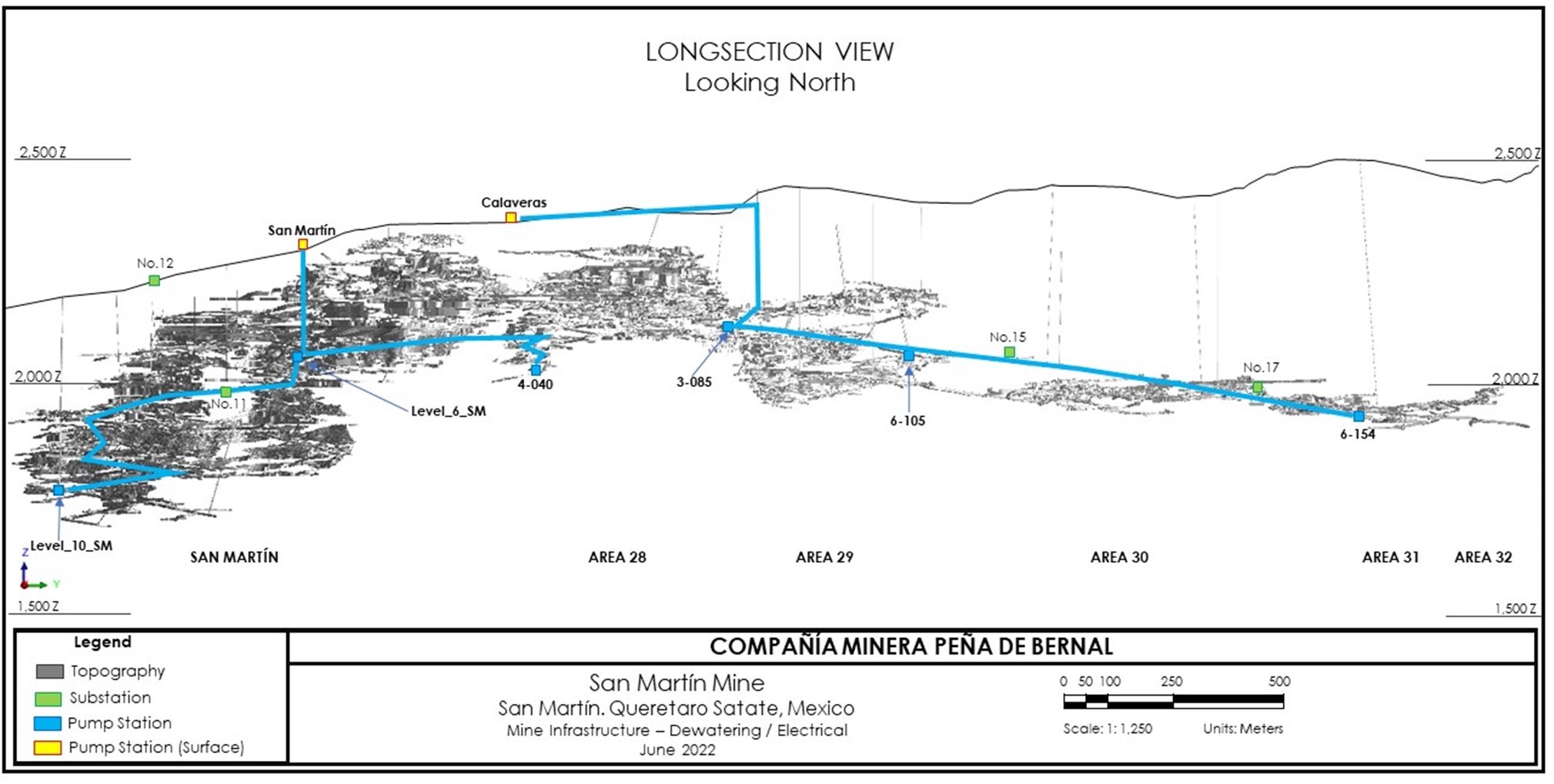
Figure 16-3:Pumping systems in the entire San Martin Mine. Water is sent to surface for usage in the plant process ( from Mine Engineering, Survey & Planning)
Erme Enriquez, CPGJuly 18, 202261
STARCORE International Mines Ltd.
San Martin Mine NI 43-101 Technical Report: Updated Mineral Resource and Reserve
16.11Mining Equipment
Ore and waste transportation is by scooptram and truck haulage. Ore and waste haulage is performed using 14-tonne underground trucks. Single boom jumbo drills and jacklegs are used for development headings and conventional cut and fill stope drilling is by jackleg. A total of 45 jackleg drills are available in inventory.
A list of the major underground equipment on-hand at San Martin is listed in Table 16-2. According to SMI’s personnel, all that equipment is in good, well-maintained condition and is operating on very smooth clean roads.
16.12Comments on the Mine Operations
The site is in operation with experienced management and sufficient personnel. The mine works 365 days per year on a 24 hour per day schedule. Operational, technical, and administrative staff are on-site to support the operation. As of April 30, 2022, mine operations have 254 employees with additional contractors available as needed.
Erme Enriquez, CPGJuly 18, 202262
STARCORE International Mines Ltd.
San Martin Mine NI 43-101 Technical Report: Updated Mineral Resource and Reserve
Table 16-2:List of Mining Equipment used at the San Martin Mine
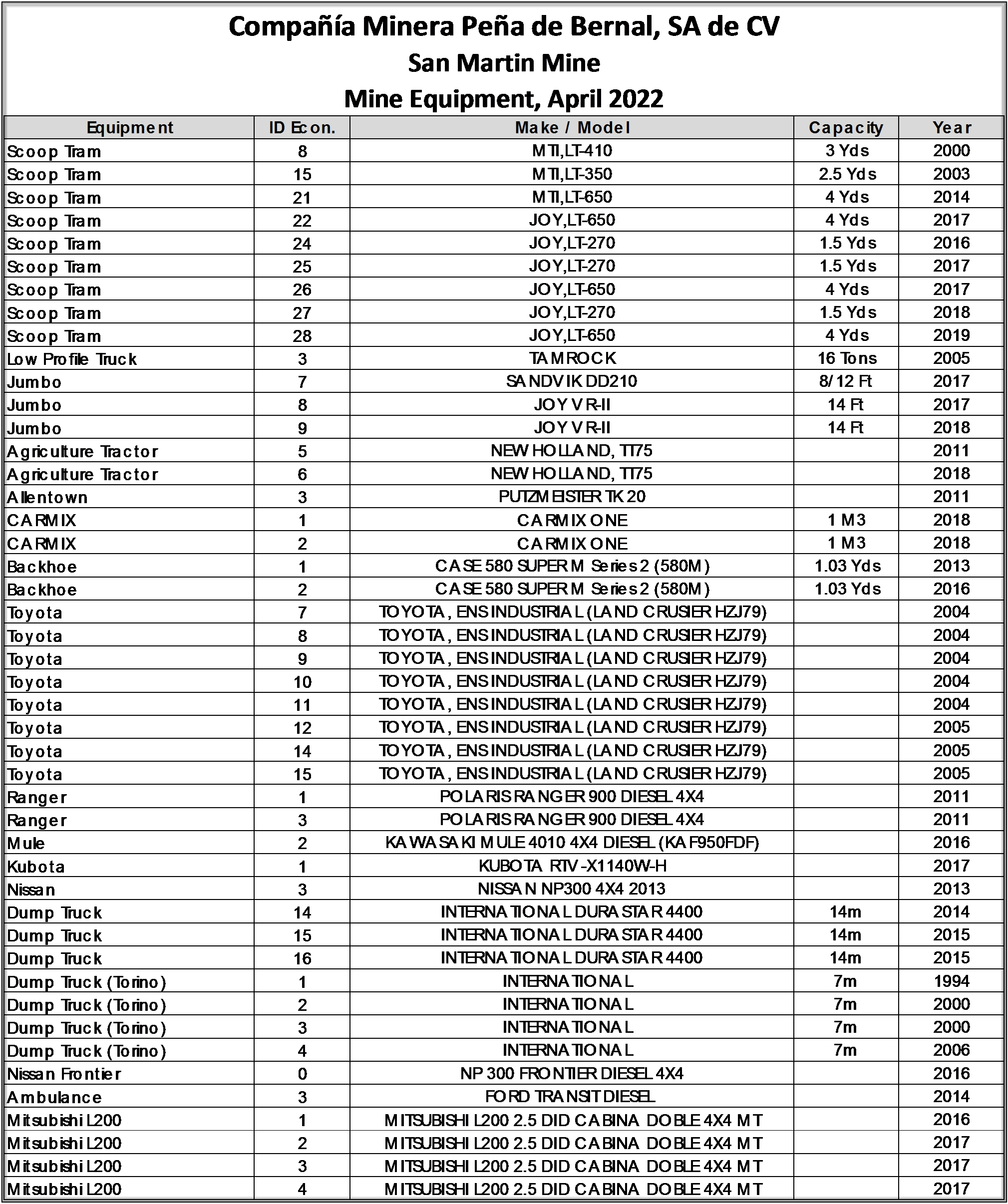
Erme Enriquez, CPGJuly 18, 202263
STARCORE International Mines Ltd.
San Martin Mine NI 43-101 Technical Report: Updated Mineral Resource and Reserve
17.0RECOVERY METHODS
The San Martin Mill is a conventional cyanidation mill using the Merrill Crowe recovery process, with a rated capacity of 1,100 tpd with a current rate of 627 tpd. The mill flowsheet employs two stage fine crushing, grinding is also two stages with both ball mills and a tower mill followed by total ore cyanide leaching in a CCD circuit. Gold and silver are recovered with zinc precipitation and is refined on site to doré pf a 99.3 % purity.
In the period April 30, 2017, to April 2022 the mill achieved an average throughput of 650 tpd with recoveries of 86 % for gold and 55 % for silver.
A tailings filtration plant to support dry handling and stacking of the tailings was installed in 2005 and the recommendations by AMEC have been implemented and the tailings dam is being reinforced to better standards. The San Martin flowsheet is shown in Figure 13-4 of section 13.
Metallurgical research is aimed at improving the recovery of gold and silver, reducing process time, and reducing costs. In the San Martin ore, a reduction in the process time has been obtained without undermining the metallurgical recovery, currently working with a treatment time of 35 hours, which has helped reduce cyanide consumption, reducing costs. To achieve this process time, the addition of oxygen in gaseous form was implemented in the grinding area. Currently, a mixture of reagents that increase the recovery of gold and silver values is being investigated, the objective is to reach 93% gold extraction. In the tests conducted, this result has been reached, so the process of validation and repeatability of results will begin with an external laboratory before carrying out tests directly at the Processing Plant.
The smelting area is part of the process, which is why an investigation was started to reduce the impurities in the doré bars. The tests carried out have led us to produce bars with a purity of 99.3% industrially so far, this 2022 year, and consequently the consumption of fluxes and crucibles was reduced, which led us to lower the foundry costs.
The San Martin ore, in some of its areas, has a characteristic of refractoriness caused by the presence of carbonaceous material. Tests have been carried out with different processes and reagents, achieving gold extractions of 82%. Research continues looking for alternatives that can improve these results at a low cost.
18.0PROJECT INFRASTRUCTURE
The site infrastructure at the San Martin mine has been established over the history of the project and supports the current operations. The current major mine infrastructure includes waste rock storage, tailings dam, temporary stockpiles, power and electrical systems, water usage systems, various on-site warehouses and maintenance shops including small-scale mine truck shops, and offices required for administration, engineering, maintenance, and other related mine and processing operations. The communication system at site includes internet and telephone access connected by hard-wire, and mobile networks. Access to the property is discussed further in Section 5 of this report. The site infrastructure is shown in Figure 18.1.
Figure 18-2 is view of the portal of the San Martin Mine. Underground mine is relatively dry, no water pumping is necessary.
Erme Enriquez, CPGJuly 18, 202264
STARCORE International Mines Ltd.
San Martin Mine NI 43-101 Technical Report: Updated Mineral Resource and Reserve
18.1Buildings
CMPB has already established the following facilities:
| ➣ | Exploration sample preparation and core/sample storage facility |
| ➣ | Small vehicle maintenance shop |
| ➣ | Emergency generators for the mine underground facility and pant |
| ➣ | Several preliminary access roads to the project facilities. |
| ➣ | Processing facilities for grinding, cyanidation, reagents, concentrate storage, and cyanide |
storage.
| ➣ | Process buildings for truck scale, truck wash and truck sampling |
| ➣ | Mill area engineering office |
| ➣ | Training and meetings room |
| ➣ | General manager, accountant, geology, and planning offices |
18.2Processing Plant
The processing plant and tailings occupy a large amount of the surface land in the unit (Figure 18-3). The primary crusher is located about 200 meters from the mine entrance, making hauling very efficient and smooth.
18.3Waste Rock
The mining method used in for mining is cut and fill. Waste rock from development is used to fill open stopes. No waste rock is hauled out to surface.
18.4Tailings
Tailings are dried and deposited in the southern edge of the tailing dam. Trucks are filled by using a paver, then hauled to be deposited in the tailings dam (Figure 18-4). Tailings are spread by using a backhoe and then a road compactor is used to compact the material evenly.
18.5Power and Electrical
The San Martin mine’s electrical power is sourced under long-term contracts with, Comision Federal de Electricidad (CFE), a government enterprise. The mine and mill are connected to the electric grid. Electrical power is supplied by the CFE is in a power line of 34.5 kVa. A secondary electricity
Erme Enriquez, CPGJuly 18, 202265
STARCORE International Mines Ltd.
San Martin Mine NI 43-101 Technical Report: Updated Mineral Resource and Reserve
generating system with about 500 kW capacity to supply power to the mill during a power failure and during the peak supply times when prices are higher, is available.
18.6Water Usage
The water for industrial use is taken from the underground mine, this is used in the chemical treatment in the plant and for irrigation of the roads to avoid dust and other contaminants. There is also a water well that is for domestic use in the offices and kitchen of the complex and the showers of the workers. Additionally, in the rainy season, the water is stored in a dam with sufficient capacity for several months of operation. All water is used responsibly and there is no waste of the vital liquid.
18.7Logistics, supplies and Administration
The operation has common management and services, as well as a logistics network that includes warehouses, vehicles, and personnel required to distribute and store supplies used by the operation and its workforce. Vehicle service is provided to the mine and workplaces. Warehouses are maintained at various locations throughout the site.
Supporting infrastructure in San Martin has been built, improved, and expanded over the life of the project including administration offices, training, recreational, and first aid service facilities. All workers are enrolled in Social Security (IMSS), to receive medical services for any illness, which is paid by the company. Employees have insurance for major medical expenses that allows them to select doctors and hospitals to treat any health condition.
Erme Enriquez, CPGJuly 18, 202266
STARCORE International Mines Ltd.
San Martin Mine NI 43-101 Technical Report: Updated Mineral Resource and Reserve

Figure 18-1:San Martin Infrastructure Map (from Planning Department)
Erme Enriquez, CPGJuly 18, 202267
STARCORE International Mines Ltd.
San Martin Mine NI 43-101 Technical Report: Updated Mineral Resource and Reserve
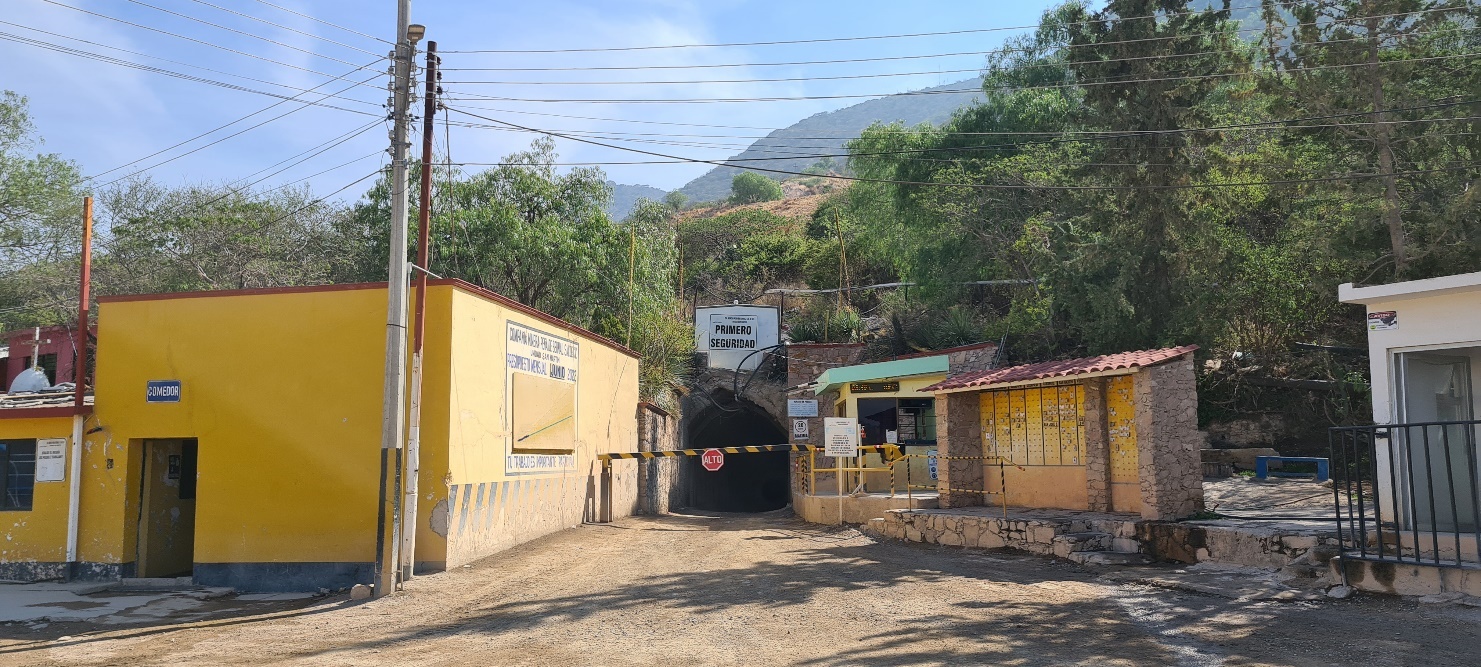
Figure 18-2:Portal of the incline for access to the San Martin mine
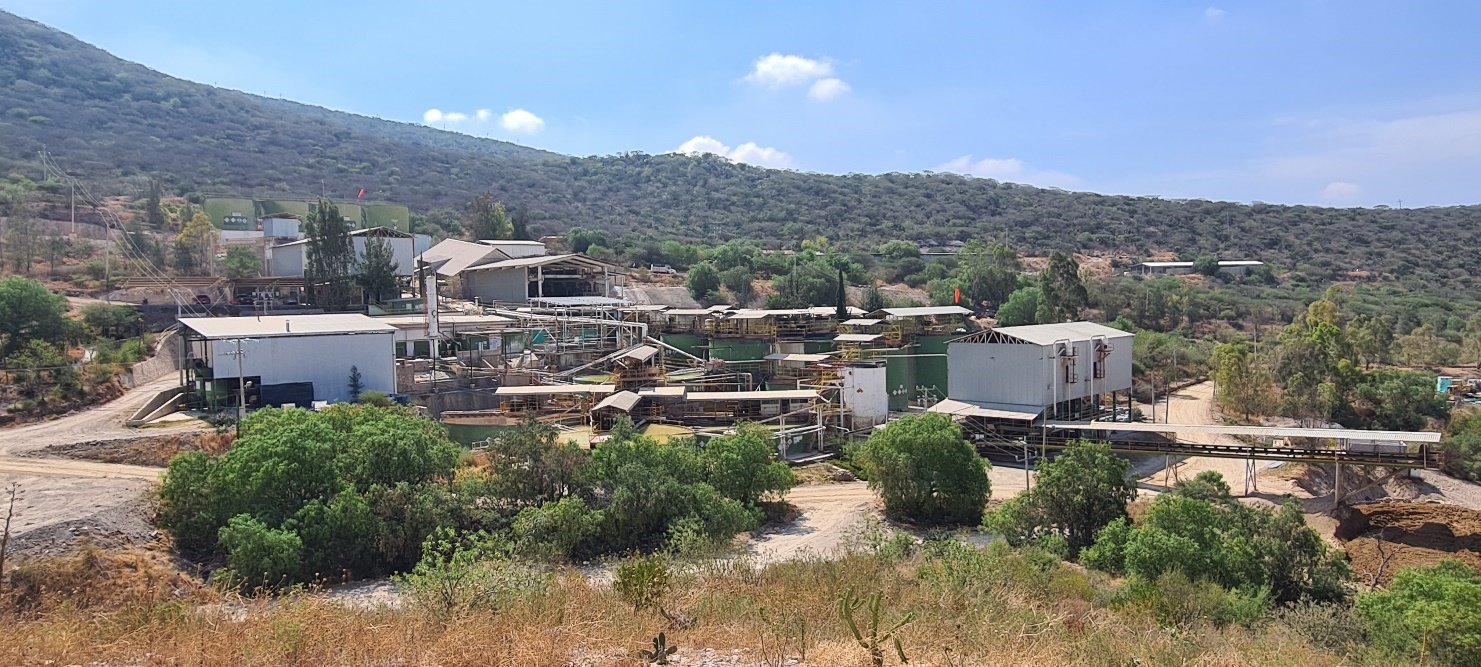
Figure 18-3:General view of the processing plant at San Martin
Erme Enriquez, CPGJuly 18, 202268
STARCORE International Mines Ltd.
San Martin Mine NI 43-101 Technical Report: Updated Mineral Resource and Reserve
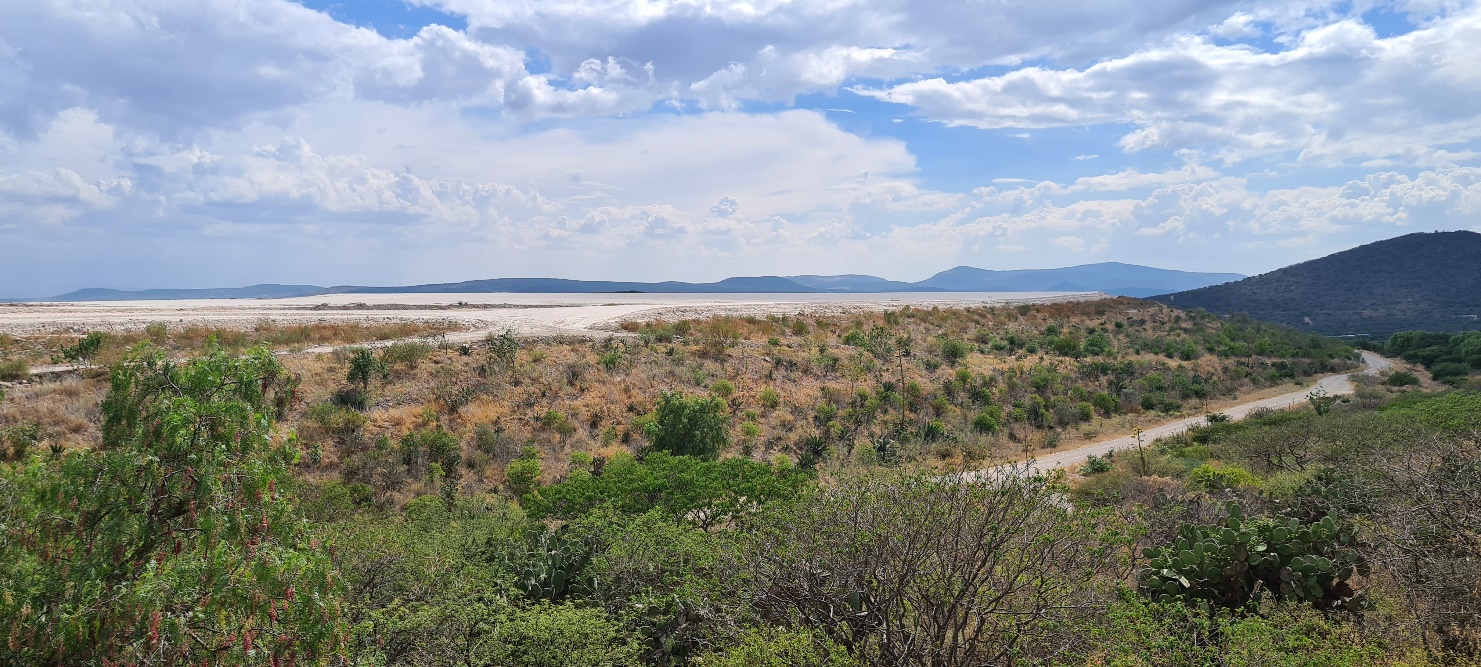
Figure 18-4:San Martin Tailings Dam, reforested
19.0MARKET STUDIES AND CONTRACTS
SIM has neither a hedging nor forward selling contract for any of its products. As of the issue date of this report, the company has not conducted any market studies, as gold and silver are commodities widely traded in the world markets. Gold and silver prices faltered in 2021, but that didn't crimp demand for bullion sales, which excelled the past year despite the price bearishness for the precious metals. As the global vaccination began at the start of 2021, gold and silver prices started to head lower amid a renewed risk-on sentiment. Gold, for the most part, was stuck in a sideways trading pattern heading towards the end of 2021.
SIM produces doré silver-gold bars which it then ships for further refining. The doré produced by SIM's San Martin mine is further refined by third parties before being sold as bullion (99.3% pure silver). To a large extent, gold bullion is sold at the spot price. The Gold Bullion Market was valued at $37,458.8 Million in 2020 and is expected to reach $115,175.8 Million by 2027, expanding at a compound annual growth rate (CAGR) of 12.3% during the forecast period.
Figure 19-1 summarizes the gold and silver prices in the last five years, from 2017 to the first quarter of 2022. For the purposes of this report, the resources and reserves are stated at the 2-year average metal prices for silver and gold as of April 30th , 2021. The two-year averages are $22/oz for silver and $1,750/oz for gold.
Erme Enriquez, CPGJuly 18, 202269
STARCORE International Mines Ltd.
San Martin Mine NI 43-101 Technical Report: Updated Mineral Resource and Reserve
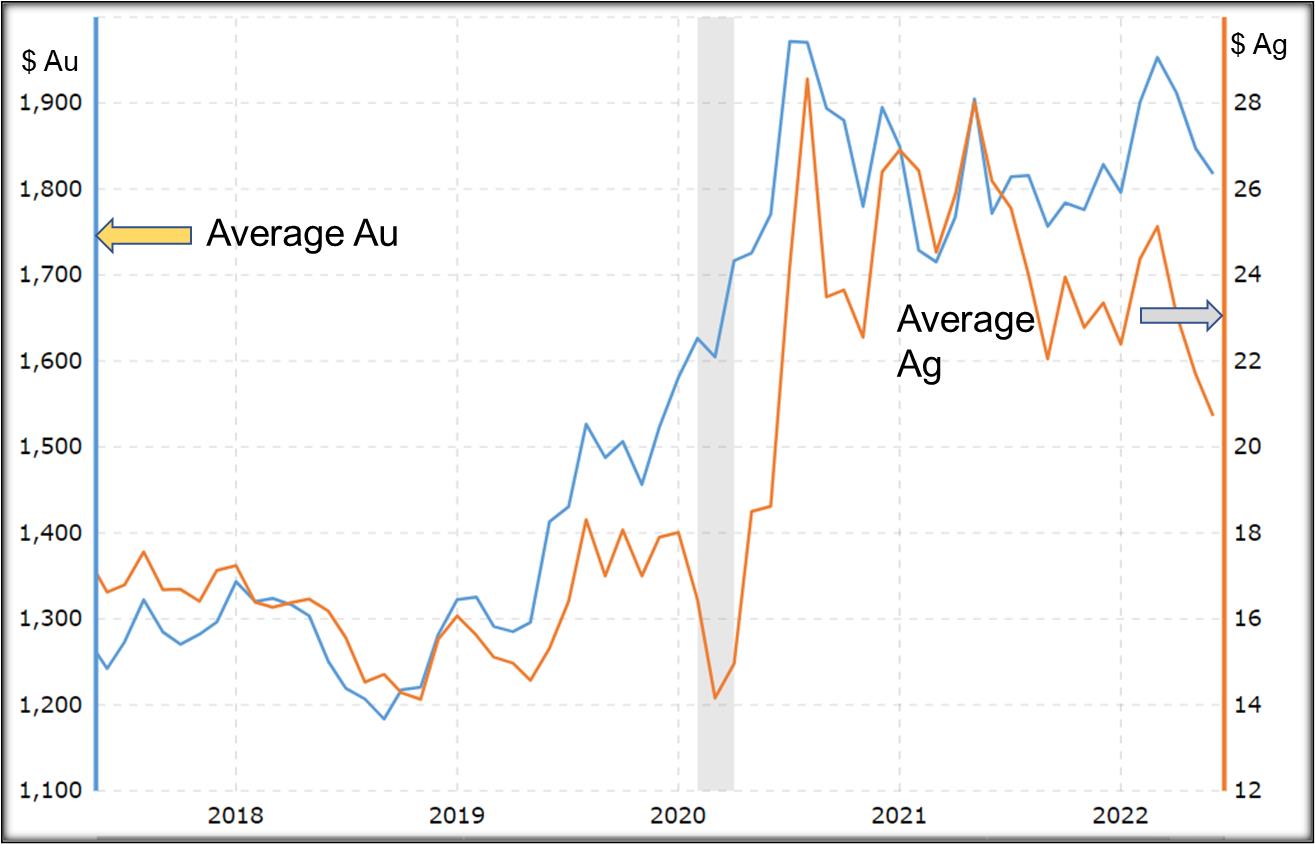
Figure 19-1:Chart showing the prices (in US Dollars) from May 2017 to April 2022
Over the period from 2017 to 2021, world silver and gold prices have increased significantly. This had a favorable impact on revenue from production of most of the world’s silver mines, including the San Martin Project. Beginning 20202, despite the Covid-19 pandemic, there has been a consistent increasing in the silver and gold prices, which has caused increased confidence for mining companies around the world.
SIM has no contracts or agreements for mining, smelting, refining, transportation, handling or sales, which are outside normal or generally accepted practices within the mining industry. SIM has a policy of no hedging or forward selling any of its products.
The contract for the marketing of the product is ITALPREZIOSI, in Arezzo, Italy. Italpreziosi is one of the main operators in the production, refining and trading of precious metals, and the production and trading of investment gold. Contract signed since June 2013 and in force to date. Doré bars are paid at the gold and silver price established by London Fix at the time of the transaction.
All part of the logistics for the delivery of the product is contracted with the company IBI International Logistics Inc.
All contracts currently necessary for supplies and services to maintain the San Martin mine’s facilities and production are in place and are renewed or replaced within timeframes and conditions of common industry practices.
SIM and the QP believe that the marketing and metal price assumptions for metal products are suitable to support the financial analysis of the mineral reserve evaluation. Further information
Erme Enriquez, CPGJuly 18, 202270
STARCORE International Mines Ltd.
San Martin Mine NI 43-101 Technical Report: Updated Mineral Resource and Reserve
regarding the sale and marketing of the mine’s metal products are discussed in SIM’s Annual Report on Form 10-K for the year ended April 30, 2022.
20.0ENVIRONMENTAL STUDIES, PERMITTING AND SOCIAL OR COMMUNITY IMPACT
20.1 General
The San Martin mine operates under the policy of zero industrial discharges into the environment. Surface water in the tailings disposal facilities practically zero due to the tailings are filtered before sending to the dam.
Running water in the intermittent streams within the property is tested for mineral elements and contaminants. Some water pumped from the underground workings is discharged in the water storage reservoir at the surface and used later for mineral processing. The following aspects are treated with special care by the company as they represent potential risks to the operation. To reduce the possibility of an incident regarding any of these issues, San Martin has established strict procedures of operation and monitoring in accordance with accepted standards.
| • | The tailing dams require strict environmental and operation control because the proximity to the San Martín community represents a risk. |
| • | Testing for water pollutants into creeks near the tailings dam. |
| • | Testing of discharge sewage pollutants. |
| • | Testing of the combustion gases from laboratory's chimneys and foundry, and lead exposure for lab workers. |
The vegetation in the vicinity of the mine is diverse and abundant but has been deteriorated in areas with abundant traffic. The arid ecosystem provides for predominantly shrub vegetation cover which contributes to soil stability. An indication of the stability maintained in this environment is the abundance of cacti species. Of the 37 species of flora recorded for the mine area, no one has been reported within a risk category.
Mammal species identified in the mine area include coyote (Canis latran), bush mouse (Peromiyscus boylii), skunk (Spilogale putarius); and one species considered endangered, armadillo (Dasypodiae). Of bird species identified in the mine area, three are under special protection (red-tailed hawk, peregrine falcon, Tousend’s solitaire). Falcon mexicanus is considered endangered.
The reptile fauna is formed by rock rattlesnake, lizard (Psammodro hispanicus), Black racer and coral snake (Lampropeltris Triangulum)
A variety of studies have been completed to characterize the natural environment of the SM area. The most recent Environmental Impact Statements are listed in Table 20-1.
Erme Enriquez, CPGJuly 18, 202271
STARCORE International Mines Ltd.
San Martin Mine NI 43-101 Technical Report: Updated Mineral Resource and Reserve
Table 20-1:San Martin Mine Recent Environmental Studies (Environmental Department)
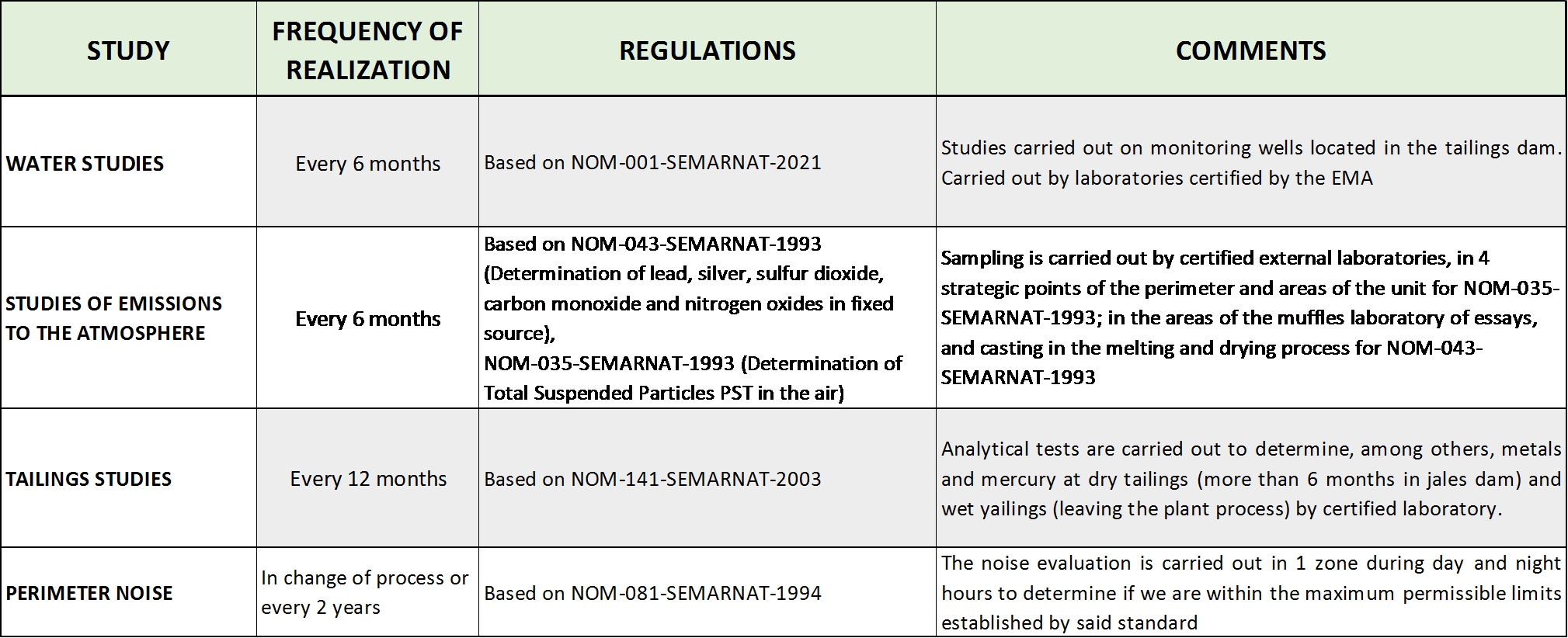
20.2Permitting
Currently, SIM has maintained all the necessary permits for exploration and exploitation at the San Martín mine site (Table 20-1). A Manifestacion de Impacto Ambiental (MIA) was submitted to Secretaría de Medio Ambiente y Recursos Naturales (SEMARNAT) in April 2004. The license covers all related to the underground expansion of the mine. In March 2011 approval of a MIA by SEMARNAT allows an expansion for tailings facilities that were not previously required. An amendment for stabilization and expansion was approved by SEMARNAT in early August 2016. Tailings have been tested periodically; last test was on June 14, 2018. The results were presented by Intertek+ABC Analytic, finding all within normal parameters.
A mining concession in Mexico does not confer any ownership of surface rights. However, use of surface rights for exploration and production can be obtained under the terms of various acts and regulations if the concession is on government land. The San Martin concessions are located on Ejido (community or co-op) and private property land, and all the agreements with the surface owners has been signed which allows SIM access and authorization to complete exploration and mine operations activities.
20.3Permitting Requirements and Status
QP and the San Martin mine staff believe that all major permits and approvals are in place to support operations at the SM, however additional permits or renewals will likely be necessary in the future. Where permits have specific terms, renewal applications are made to the relevant regulatory authority as required, prior to the end of the permit term.
Any major mining project in Mexico requires preparation of a Manifestation of Environmental Impact Study (MIA for its acronym in Spanish), including the construction, operation, and closure stages, completed by a third-party consultant, which is submitted to the regulatory agency.
After the MIA is approved, a comprehensive closure plan including closure cost estimates and financial guarantee schedule is submitted for approval to meet the applicable Mexican laws and regulations. The status of permits is listed in Table 20-2.
Erme Enriquez, CPGJuly 18, 202272
STARCORE International Mines Ltd.
San Martin Mine NI 43-101 Technical Report: Updated Mineral Resource and Reserve
Based on the LOM plan, additional permits will be necessary in the future for continued operation of the San Martin mine, including a modification of the MIA and obtaining approval for modified leach pad configurations, increased tailings storage capacity and corresponding water supply. The Cerro Verde mine will need to submit the Second
Modification of the MIA prior to reaching current tailings storage capacity, which is sufficient until 2027 at planned rates in the LOM plan. Closure strategies will be developed for these proposed facilities as part of the permitting process.
Table 20-2:List of Permits and Status (Environmental Department)
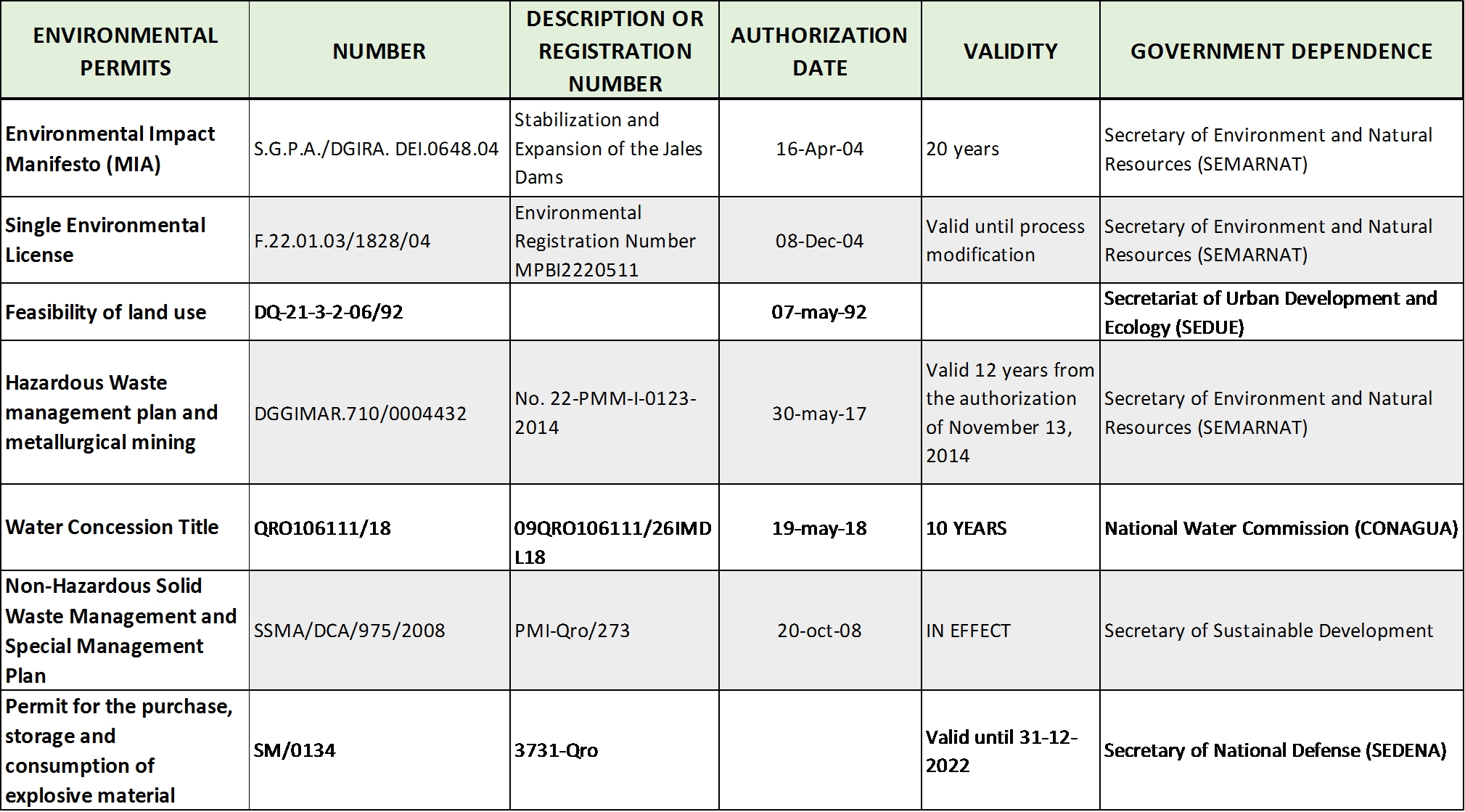
20.4Surface Water Management Plan
Most of the water comes from underground and is used for the preparation of the cyanide solution in the benefit process and for the different mining activities such as drilling, irrigation of roads to avoid raising dust and washing of works to maintain them. pollution free; and from a deep well whose flows are deposited in tank No. 4 of industrial water with a capacity of 600 m3.
The working water is conducted through pipes and pumps that are inside the mine to a surface pool where it is stored and later sent by gravity to the process tank; while the water extracted from the supply well is poured directly into said tank.
Apart from the sedimentation process that occurs naturally, due to the residence time of the working water in the pumping station and in the industrial water tank, the water does not undergo any treatment to condition it for the process.
In smaller amounts, it is used in toilets, showers, and irrigation of green areas.
Three more tanks receive the water with cyanide solution that is recovered from the Processing Plant and the tailings tank, which is recirculated to the process.
Erme Enriquez, CPGJuly 18, 202273
STARCORE International Mines Ltd.
San Martin Mine NI 43-101 Technical Report: Updated Mineral Resource and Reserve
There are two septic tanks to which there is no authorized discharge since it is not discharged to any National good, it is only conducted to recover it and send it as mentioned above, all the water is recirculated to the ore benefit process.
Payment of water rights is made quarterly with the well registration of title No. 09QRO106111/26IMDL18 for industrial use with meter No. 14040219 brand Azteca and for use of Services with Meter No. 16040040 brand Azteca. In rainy seasons, water is collected to be used in the process and thus use less water from tillage.
20.5Tailings Dam and Reforestation
A reinforcing berm of compacted fill was built along the downstream toe of the tailings dam to increase the dam safety factor. The downstream side of the reinforcing berm has been constructed at a 2:1 slope. A trench has been excavated and a French drain system constructed on the downstream side of the dam to intercept seepage. The seepage is collected in a sump for recycle back to the mill. The French Drain trench has been backfilled and the area is being re-vegetated.
All the tailings dam construction follows recommendations made by AMEC who visit the site periodically to ensure that construction is adequate. A diversion ditch at the north end of the pond has been completed and all final berms are being re-constructed of compacted tails with waste rock rip-rap exteriors.
The reforestation, in the tailings dam, is done with 22 species of plants produced in the nursery of the mining unit, among shrubs, trees and herbaceous (Figure 20-1). First the preparation of the land is made placing a layer of inert material (mixture of soil and rock) and on this one layer of vegetal soil, to later make the plantation with a relation of 1 individual by each 2 m2, 1 arboreal species for each 4 shrubs and / or herbaceous, taking place mainly in the months of July and August, when the rains have stabilized to obtain a higher percentage of plant development. The annual average of the reforestation is over 5000 plants, and it is done during the rainy season (Figure 20-2).
20.6Social Community Impact
SIM considers nearby communities as important stakeholders and, as such, the company pays special attention to their problems and requests for support. A good neighbor and open-door policy characterize the relations with the communities inside and around the area of operations. A company representative interacts with the local authorities frequently.
According to the population and housing census of 2020, the inhabitants in the surrounding communities include 64,965 people living in the 5 locations. Women are 52% of the population. Table 20-3 presents population by gender in the communities, and shows the relationship of San Martín with them, whether directly or indirectly.
Erme Enriquez, CPGJuly 18, 202274
STARCORE International Mines Ltd.
San Martin Mine NI 43-101 Technical Report: Updated Mineral Resource and Reserve
Table 20-3:Neighboring community population at San Martin mine
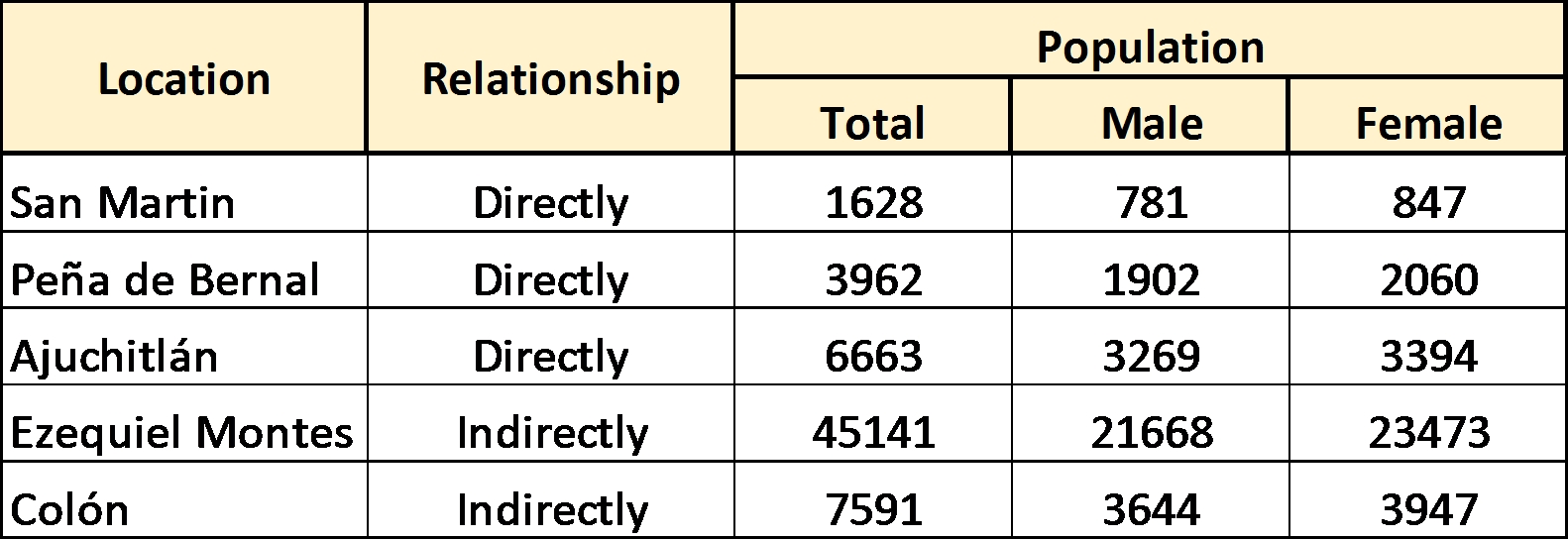
The relationship with a community is indirect whenever it has a direct relationship with another mining company. Regardless of the indirect relationship with these communities, San Martín considers that it has a shared commitment with them.
San Martín has a policy of social responsibility based on community development. The tactic used to achieve this strategic principle is focused on:
| • | Education and Employability: Promoting learning opportunities ranging from basic education to technical skills and supporting the creation and development of small business that provide an economic alternative to mining related jobs. |
| • | Infrastructure: Supporting construction, improvement, or rehabilitation of community facilities, such as the Church, the playgrounds, or the roads. |
| • | Health: In partnership with government institutions, SIM promote several health campaigns in the communities such as dental, vaccines, nutrition, pet control, and others. |
| • | Sports: Also, in partnership with government institutions and NGOs, SIM supports summer camps for children and in the last two years has sponsored one of the main races that happen in Guanajuato. |
| • | Environment: SIM runs different environmental campaigns in the communities, such as the recycling of electronics, the reuse of tires to rehabilitate recreational sites, reforestation initiatives, cleaning up campaigns, and others. |
| • | Traditions and Culture: SIM supports throughout the year the different celebrations that happen in the community, such as the day of the miner, mother´s day, day of the death, children´s day, Christmas celebrations, and others. SIM responds to ongoing requests from the community. |
To fulfill social responsibility actions, San Martín has an internal procedure intended to channel the demands of the local communities, to assess their needs, to prioritize them, and to evaluate donations to be made to improve quality of life.
Erme Enriquez, CPGJuly 18, 202275
STARCORE International Mines Ltd.
San Martin Mine NI 43-101 Technical Report: Updated Mineral Resource and Reserve
20.6Comment on Environmental Compliance, Permitting, and Local Engagement
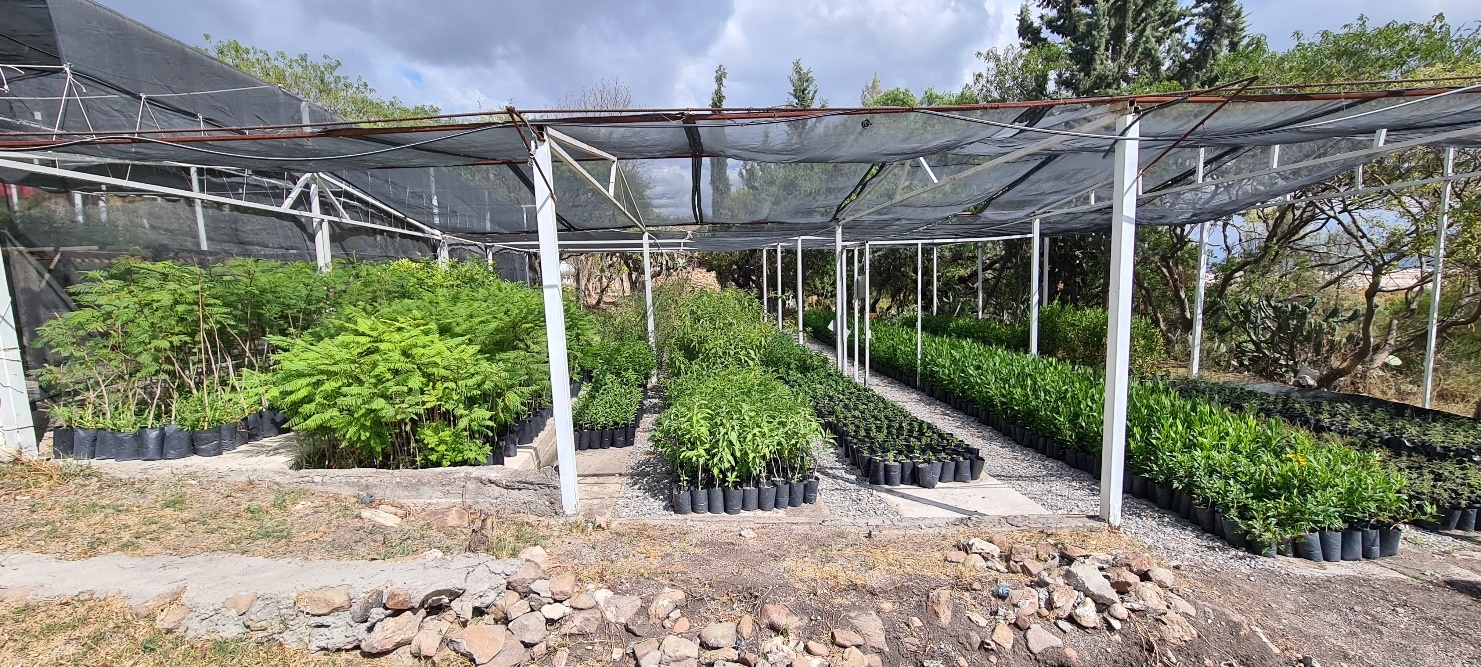 In the QP’s opinion, the San Martin mine has adequate plans and programs in place, is in good standing with Mexican environmental regulatory authorities, and no current conditions represent a material risk to continued operations. The SM mine staff have a high level of understanding of the requirements of environmental compliance, permitting, and local stakeholders to facilitate the development of the mineral reserve and mineral resource estimates. The periodic inspections by governmental agencies, SIM staff, third-party reviews, and regular reporting and studies confirm this understanding.
In the QP’s opinion, the San Martin mine has adequate plans and programs in place, is in good standing with Mexican environmental regulatory authorities, and no current conditions represent a material risk to continued operations. The SM mine staff have a high level of understanding of the requirements of environmental compliance, permitting, and local stakeholders to facilitate the development of the mineral reserve and mineral resource estimates. The periodic inspections by governmental agencies, SIM staff, third-party reviews, and regular reporting and studies confirm this understanding.
Figure 20-1:Part of the nursery with endemic species of plants ready to be planted
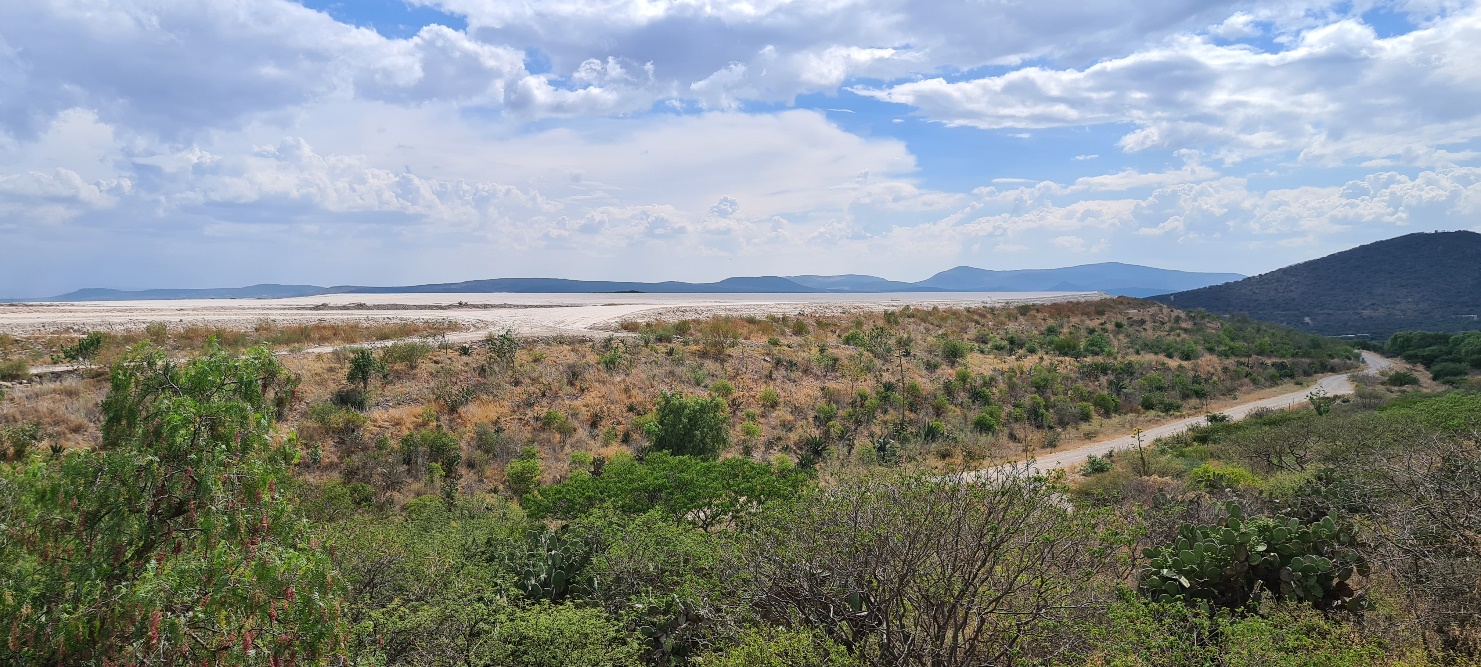
Figure 20-2:Reforested of the NE side of the main Tailings Pond
Erme Enriquez, CPGJuly 18, 202276
STARCORE International Mines Ltd.
San Martin Mine NI 43-101 Technical Report: Updated Mineral Resource and Reserve
21.0CAPITAL AND OPERATING COSTS
The capital and operating costs are estimated by the property’s operations, engineering, management, and accounting personnel in consultation with SIM corporate staff, as appropriate. The cost estimates apply to the planned production, mine schedule, and equipment requirements for the LOM plan.
21.1Capital Costs
In 2021, SIM's San Martin Project consisted of a modest size underground mining operation based at the San José, San Martin, Body 28 and Body 32 areas. The actual 2021 capital costs for the San Martin Project are summarized in Table 21-1.
Table 21-1:San Martin Capital Costs
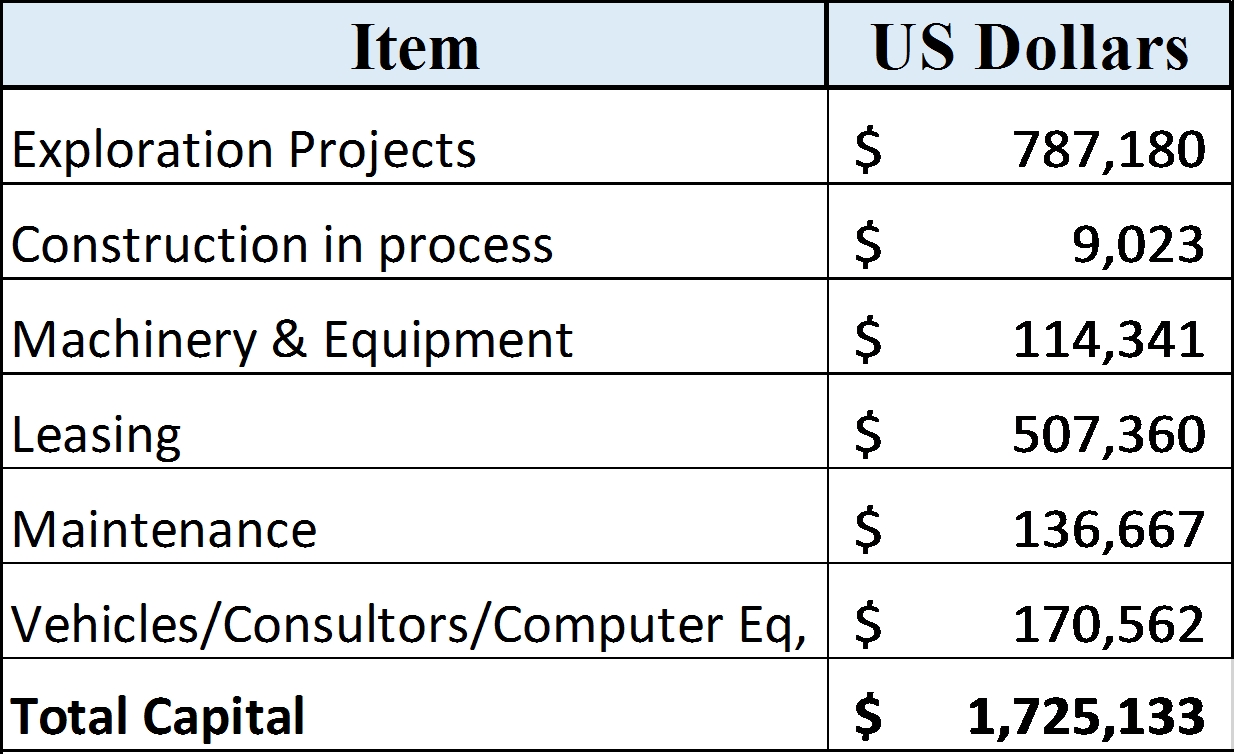
20.2Operating Costs
The components of the operating cost are based on the annual mine schedule, equipment sizing and productivity, labor estimates, and unit costs for supply items. Inputs to the operating cost are based on vendor quotes, private and commercially available cost models, and actual and factored unit costs of the mine. . On a per tonne of ore processed basis at the San Martin mine, the cash operating costs in 2021 averaged US$ 69.30 per tonne, compared to US$ 61.13 in 2020. Operating costs are summarized in Table 18-2.
Erme Enriquez, CPGJuly 18, 202277
STARCORE International Mines Ltd.
San Martin Mine NI 43-101 Technical Report: Updated Mineral Resource and Reserve
Table 20-2:Mine Operating Cost Summary
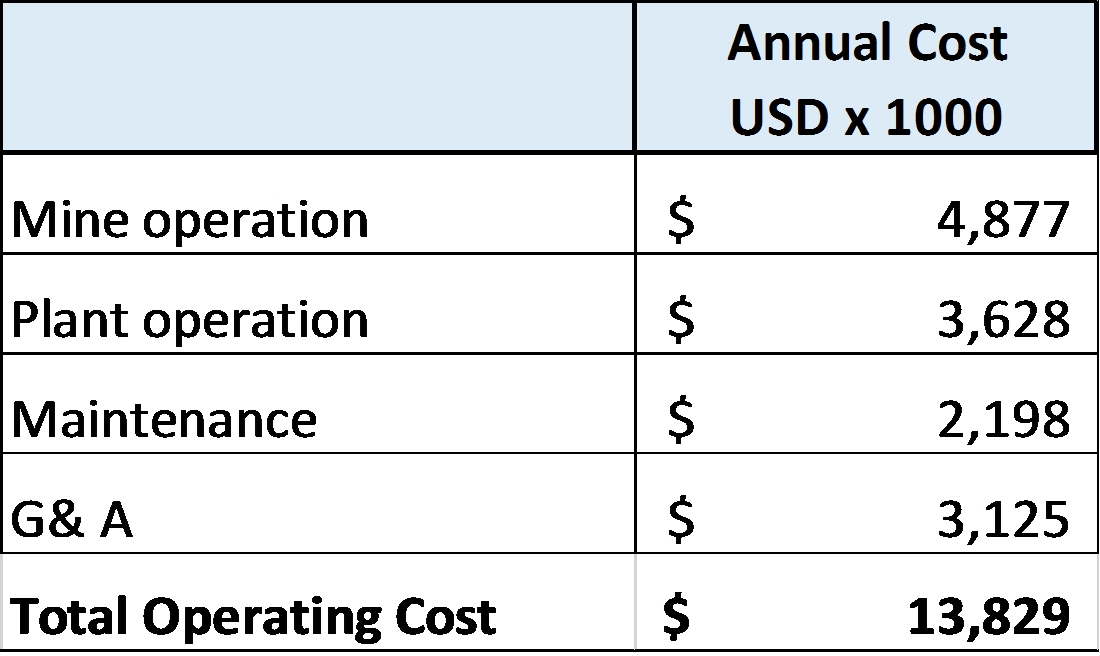
22.0ECONOMIC ANALYSIS
SMI currently has only one operating mine and no other active exploration projects therefore the best economic analysis of the operation can be reviewed in the financials filed by SMI. See quarterly and annual financial statements for SMI on SEDAR.com.
The LOM plan includes comprehensive operational drivers (mine and corresponding processing plans, metal production schedules and corresponding equipment plans) and financial estimates (revenues, capital costs, operating costs, downstream processing, freight, taxes and royalties, etc.) to produce the reserves over the life of the property. The LOM plan is an operational and financial model that also forecasts annual cash flows of the production schedule of the reserves for the life of the property under the assumed pricing and cost assumptions. The LOM plan is used for economic analyses, sensitivity testing, and mine development evaluations.
The financial forecast incorporates revenues and operating costs for all produced metals, processing streams, and overall site management for the life of the property. The economic analysis summary in Table 22-1 includes the material drivers of the economic value for the property and includes the net present value (NPV) of the unleveraged after- tax free cash flows as the key metric for the economic value of the property’s reserve plan under these pricing and cost assumptions. This analysis does not include economic measures such as internal rate of return or payback period for capital since these measures are not applicable (and are not calculable) for an on-going operation that does not have a significant upfront capital investment to be recovered.
Erme Enriquez, CPGJuly 18, 202278
STARCORE International Mines Ltd.
San Martin Mine NI 43-101 Technical Report: Updated Mineral Resource and Reserve
Table 22-1:Economic Model Input Parameters
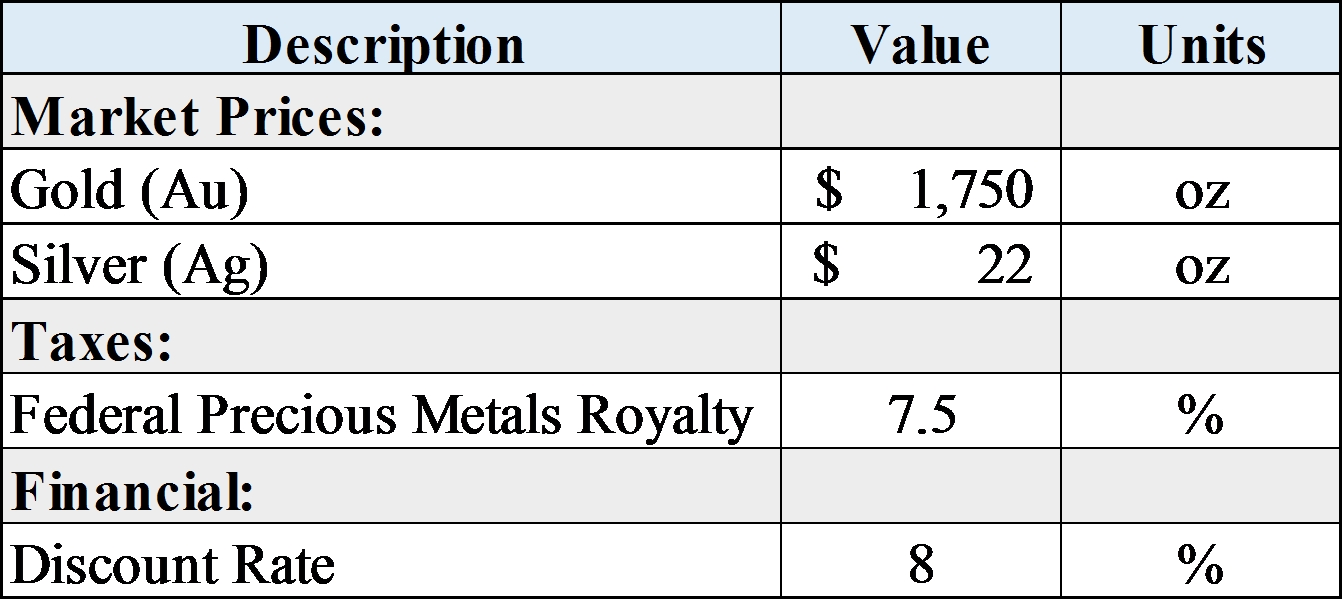
The key drivers of the economic value of the property include the gold and silver market price, gold and silver grades and recoveries, and costs. Depending on the changes in these key drivers, SIM can adjust operating plans (in the near-term as well as the mid-term, as appropriate) to minimize negative impacts to the overall economic value of the property.
Table 20.2 summarizes the LOM plan including the annual metal production volumes, mine plan schedule, capital and operating cost estimates, unit net cash costs, and unleveraged after-tax free cash flows over the life of the property. Free cash flow is the operating cash flow less the capital costs and is a key metric to demonstrate the cash that the property is projected to generate from its operations after capital investments for the reserve production plan at assumed pricing and cost assumptions. The property’s ability to create value from the reserves is determined by its ability to generate positive free cash flow. The summary proves the favorable free cash flow generated from the property’s LOM plan under the assumptions. This economic analysis supports the economic viability of the mineral reserves statement.
 Table 22-2:LOM Plan Summary
Table 22-2:LOM Plan Summary
Erme Enriquez, CPGJuly 18, 202279
STARCORE International Mines Ltd.
San Martin Mine NI 43-101 Technical Report: Updated Mineral Resource and Reserve
23.0ADJACENT PROPERTIES
Exploraciones Mineras La Parreña, S.A. de C.V. (Peñoles) has a claim of 822 hectares, located on the Central-West part of the SIM’s concessions. This claim has been cancelled but hasn’t been released by the Mexican Mining Bureau. The name of the claim is Colón and is registered with the Title No. 237380 and the status of this claim is cancelled. Peñoles also holds The Palmita claim, Title 237379, with an area of 99.97 hectares.
Another property is the San Judas Tadeo claim, Title No. 220535, covering 700 hectares. This property is private and has three owners, the main owner is Ciro Feregrino. This property is located to the northeast of the SIM’s claims.
24.0OTHER RELEVANT DATA AND INFORMATION
This report summarizes all data and information material to the San Martín Mine Project as of April 30, 2022. QP knows of no other relevant technical or other data or information that might materially impact the interpretations and conclusions presented herein, nor of any additional information necessary to make the report more understandable or not misleading.
25.0INTERPRETATION AND CONCLUSIONS
25.1Geology and Resources
QP is of the opinion that the Mineral Resource Estimate has been conducted in a manner consistent with industry best practices and that the data and information supporting the stated mineral resources is sufficient for declaration of Inferred classifications of resources. QP has not classified any of the resources in the Measured category due to some uncertainties regarding the data supporting the Mineral Resource Estimate.
25.1.1Data Verification
The current QA/QC program is adequate and supports the conclusion that data collected, and the monitoring of QC data is reliable for the purposes of estimating Resources; however, additional improvements are required for the QA/QC program to align with industry best practice and facilitate more meaningful QC.
The lack of a historic QA/QC program, which has only been supported by a recent resampling and modern QA/QC program for channel samples and a limited number of holes. This will be required to achieve Measured resources which generally are supported by high resolution drilling or sampling data that feature consistently implemented and monitored QA/QC.
The lack of consistently implemented down-hole surveys in the historic drilling. Although the survey data doesn’t show significant deviations from planned orientations, it would be priority to have all holes surveyed.
PENBER uses home-made standards and whites, with excellent quality. However, it is necessary that some certified standards be inserted in the sample stream to verify that the laboratory is adequate to any type of standard. It is the opinion of the QP that the standards and blanks used meet normal industry requirements.
Erme Enriquez, CPGJuly 18, 202280
STARCORE International Mines Ltd.
San Martin Mine NI 43-101 Technical Report: Updated Mineral Resource and Reserve
25.1.2Mineral Reserve Estimates
QP is of the opinion that the Mineral Reserve Estimate has been conducted in a manner consistent with industry best practices and that the data and information supporting the stated mineral reserves is sufficient for declaration of Proven and Probable classifications of reserves. The San Martin mine is a producing operation with over 30 years of continuous operation. Recent production data was used as a primary source of information to validate or derive, as necessary, the relevant modifying factors used to convert Mineral Resources into Mineral Reserves. The initial production decision was not based on a feasibility study of Mineral Reserves demonstrating economic viability. There is an increased uncertainty and economic and technical risks of failure associated with this production decision. The production schedule associated with this reserve estimate results in mining until April 2022 at an average production of approximately 627 tpd. The tailings storage facility is big enough to support the production of LOM without problem.
25.1.3Exploration
QP has the following conclusions regarding the exploration efforts and potential for the San Martin Mine:
| • | Area 33 represents an important target for exploration. It will be necessary to include an additional drilling program to detect the structure at that level. |
| • | Area 28 has been being explored and exploited for several years now. The area continues to give surprises with new ore. A possibility of encountering an extension of Body 28 has been determined with diamond drilling. This area represents an important exploration target and should be priority one. |
| • | A new idea about the SW extension of the San José bodies has recently been taken up, this area is called Sarah. The Sarah area is located in a possible fold in the Mezcala Formation. This will have to be tested with diamond drills. If this hypothesis is proven, it would represent an area with great potential for fresh ore for the mill. |
25.2Conclusions
Estimates of mineral reserves and mineral resources are prepared by and are the responsibility of SIM employees. All relevant geologic, engineering, economic, metallurgical, and other data is prepared according to SIM developed procedures and guidelines based on accepted industry practices. SIM maintains a process of verifying and documenting the mineral reserve and mineral resource estimates, information for which are located at the mine site and SIM corporate offices. SIM conducts ongoing studies of its ore bodies to optimize economic value and to manage risk.
SIM and the QP believe that the geologic interpretation and modeling of exploration data, economic analysis, mine design and sequencing, process scheduling, and operating and capital cost estimation have been developed using accepted industry practices and that the stated mineral reserves and mineral resources comply with SEC regulations. Periodic reviews by third-party consultants confirm these conclusions.
The SM mine is a mid-scale producing mining property that has been operated by SIM and its predecessors for many years. Mineral reserve and mineral resource estimates consider technical, economic, environmental, and regulatory parameters containing inherent risks. Changes in grade and/or metal recovery estimation, realized metal prices, and operating and capital costs have a
Erme Enriquez, CPGJuly 18, 202281
STARCORE International Mines Ltd.
San Martin Mine NI 43-101 Technical Report: Updated Mineral Resource and Reserve
direct relationship to the cash flow and profitability of the mine. Other aspects such as changes to environmental or regulatory requirements could alter or restrict the operating performance of the mine. Significant differences from the parameters used in this TRS would justify a re-evaluation of the reported mineral reserve and mineral resource estimates. Mine site administration and
SIM dedicate significant resources to managing these risks.
The QP is unaware of any significant technical, legal, environmental, or political considerations which would have an adverse effect on the extraction and processing of the resources and reserves located at the San Martin Mine. Mineral resources which have not been converted to mineral reserves, and do not demonstrate economic viability shall remain mineral resources. There is no certainty that all or any part of the mineral resources estimated will be converted into mineral reserves.
The QP considers that the mineral concessions in the San Martin mining district controlled by SIM continue to be highly prospective both along strike and down dip of the existing mineralization.
26.0RECOMMENDATIONS
QP recommendations are itemized in the following subsections. These recommendations are not required for continued mine development on the Property, and therefore a cost estimate for this work is not provided.
26.1Geology
26.1.1Database
QP previously recommended that all drillhole data (including collar, survey, assay, geology, and specific gravity data) should be maintained in a single, compiled database for all structures at San Martin. Tremendous effort is being done; however, the data has been not consolidated to date. QP reiterates this recommendation.
QP also recommends that underground channel sampling and QA/QC data be incorporated into the same unified system together with the exploration drilling data to from a single repository or “version of the truth”. SM currently possess Leapfrog software that should be adequate to manage a more centralized database. The ability to select data by type and location for assaying and logging should be managed through the judicious use of codes to allow selective extraction and summarization as and when required.
26.1.2Underground Sampling
The San Martin structure is very wide (more than 30 m in places) and subsequent sampling across the full width of the orebodies, creates a potential for bias in the frequency of sampling in the orebody between the drifts is lower. QP recommends that the drift on the footwall side be driven in advance of the hanging wall drift, in addition to the development taking place.
26.1.3QA/QC Sampling
QP recommends that standards and blank submissions be included in the master database for the Property to avoid the difficulty of locating such data when it is resides in separate spreadsheet reports. QP also recommends that QA/QC performance graphs be updated monthly to allow questionable sample batches to be repeated timeously.
Erme Enriquez, CPGJuly 18, 202282
STARCORE International Mines Ltd.
San Martin Mine NI 43-101 Technical Report: Updated Mineral Resource and Reserve
26.1.4Umpire Sampling
It is industry best practice to have 5% of sample pulps tested at a third-party lab. Aside from limited resampling completed as part of past NI 43-101 reports, it is not apparent that umpire sampling has been performed.
As discussed, a small percentage of the total drill hole database encounters the area of interest, because of this umpire sampling should be focused on resampling most of the pulps within the expected mining areas.
26.1.5Resource Estimation
Historically, the calculation of resources and reserves is carried out manually, due to the conditions that the deposit marks. However, it would be interesting an internal capacity to perform mineral resource estimation, using geostatistical methods. The Leapfrog or Surpac software should provide the tools to be able to do this in the long term.
26.1.6Exploration
Exploration must continue, as has been done normally at the mine. With diamond drilling the mineral is detected and with drifts it is explored. It is important that in the north Zone the Areas 32 and 33 continue being explored with systematic drifting to detect the size of the oreshoots. Continue with the exploration at the Central zone, Cuerpo 28 to the east, with systematic crosscutting to define the size of the oreshoot, and the South zone explore the San Jose FW and the Santa Clara (both known as Sarah) be extensively drilled from surface in order to determine the potential resources in that zone.
26.2Mining
QP recommends that San Martin prepare a long-term mine plan based on the resource estimate, to enable San Martin to declare mineral reserves and ensure that the mineral resources disclosed can be included in a long-term mine plan.
26.3Process
QP recommends continuing with the research on the ore from the San Martin Body, with a high content of carbonaceous material, since this material is of high grade and could be of great help for daily production.
26.4Environmental
Once the mine plan, site layout and tailings management plan are further along and have definitive locations, the cost of these factors should be addressed. The cost for monitoring environmental effects post-mine closure needs to be estimated. A detailed trade-off study should be undertaken to characterize current conditions of the sulphide tailings and to determine whether the re-treatment of this material would contribute to the profitability of the Project, apparently not.
Erme Enriquez, CPGJuly 18, 202283
STARCORE International Mines Ltd.
San Martin Mine NI 43-101 Technical Report: Updated Mineral Resource and Reserve
27.0REFERENCES
Buchanan, L. J., 1981, Precious metal deposits associated with volcanic environments in the southwest, in Dickinson, W.R., and Payne, W.D., eds., Relations of Tectonics to Ore Deposits: Arizona Geological Society Digest, v. 14, p. 237-262.
Burk, R., 1993, Regional Geology of San Martin Property and Its Relationship to Precious Metal Mineralization, Central Queretaro State, Mexico. Priv. Rep. for Teck Cominco. MEXICO.
Campa-Uranga, M., and Coney, P., 1983, Tectono-stratigraphic terranes and mineral resource distributions of México: Canadian Journal of Earth Sciences, v. 20, p. 1040—1051.
Campbell, J., 2012, Reserves and Resources in the San Martín Mine, Mexico, as of July 31, 2012. For Starcore International Mines LTD.
Enriquez, E., 1995, Trace element zonation and temperature controls of the Tayoltita Ag-Au fossil hydrothermal system, San Dimas district, Durango, Mexico: Unpublished M. Sc. Thesis, Colorado School of Mines, 195 p.
Enriquez, E, 2003, Transformation of Resources into Reserves in Mining Operations of Luismin. An Update. Priv. Internal Report for Luismin. 13 p.
Enriquez, E, 2018, Reserves and Resources in the San Martin Mine, Queretaro State, Mexico, as of April 30, 2018. For Starcore International Mines LTD.
Enriquez, E, 2019, Reserves and Resources in the San Martin Mine, Queretaro State, Mexico, as of September 31, 2019. For Starcore International Mines LTD.
Felix, D., 2021, Plan de Cierre 2021, Compañía Minera Peña de Bernal, San Martín, Colón, Quetétaro, Mexico: Unpublished Private Report for CMPB, 565 p.
Gunning, D. R. and Whiting, B., 2009, Reserves and Resources in the San Martín Mine, Mexico, as of July 31, 2009. For Starcore International Mines LTD.
Gunning, D. R. and Campbell, J., 2011, Reserves and Resources in the San Martín Mine, Mexico, as of July 31, 2011. For Starcore International Mines LTD.
Gunning, D. R., 2013, Reserves and Resources in the San Martín Mine, Mexico, as of July 31, 2013. For Starcore International Mines LTD.
Gunning, D. R. and Campbell, J., 2014, Reserves and Resources in the San Martín Mine, Mexico, as of July 31, 2014. For Starcore International Mines LTD.
Labarthe-Hernández, G. y Tristán-González, M., 2006, Geología del distrito minero de San Martin. Instituto de Geología de La UNAM. Rep. Priv. Compañía Minera Peña de Bernal, SA de CV., 44 p.
Muñoz-Cabral, F., 1993, Modelo genético de los depósitos de oro proyecto San Martín, Qro., Asociación de Ingenieros de Minas, Metalurgistas y Geólogos de México, A.C., XX convención AIMMGM, octubre 27-30, 1993, Acapulco, Gro. México, p. 246-260
Nuñez-Miranda, A., 2007, Inclusiones Fluidas y Metalogénia del Depósito Epitermal Ag-Au del Distrito de San Martín, Mpio. Colón, Qro. MSc Thesis, 166p.
Ortiz, H.L.E., Solís P.G.N., Mérida, C.A. 1989, Geología y metalogénesis del yacimiento auroargentífero-brechoide epitermal (tipo carlin) de San Martín, Querétaro. XVIII Convención Nacional de la A.I.M.M.G.M., A.C., p. 42-62.
Raisz, E. 1964. Landforms of Mexico (chart). Geography Branch of the Naval Research. 2º ed. Cambridge, Mass. USA.
Rankin, L. R., 2008, Structural Controls on the Carbonate Breccia Hosted Au-Ag Mineralisation, San Martín Deposit, Central Mexico. Private internal report for Starcore International Mines LTD, 55 p.
SGM Servicio Geolólogico Mexicano www.sgm.gob.mx
Erme Enriquez, CPGJuly 18, 202284
STARCORE International Mines Ltd.
San Martin Mine NI 43-101 Technical Report: Updated Mineral Resource and Reserve
Spring, V. and McFarlane, G.R., 2002, A Technical Review of the Tayoltita, Santa Rita, San Antonio, La Guitarra and San Martin Operating Silver and Gold Mines in Mexico. Watts, Griffis and McOuat NI 43-101 report prepared for Wheaton River Minerals Ltd.
Spring, V., McFarlane, G.R. and Watts, G., 2004, A Technical Review of the Tayoltita, Santa Rita, San Antonio, and San Martin Mines. Watts, Griffis and McOuat NI 43-101 report prepared for Chap Mercantile Inc.
Wisser, E. 1966, The Epithermal Precious-Metal Province of Northwest Mexico: Nevada Bureau of Mines Bulletin 13, part C, p. 63-92.
Erme Enriquez, CPGJuly 18, 202285



 Dated this 18th day of July 2022
Dated this 18th day of July 2022 Table 1-1:Mineral Resources Inferred and Indicated, San Martín Mine
Table 1-1:Mineral Resources Inferred and Indicated, San Martín Mine




 Table 6-1:Summary of production for the San Martín Mine (from 1993 to April 30, 2022)
Table 6-1:Summary of production for the San Martín Mine (from 1993 to April 30, 2022)













 The data provided by SMI conforms to the industry standards and is within the accuracy of this study and verified for use in this study. Historic production from multiple oreshoots at the San Martin mine proves the capacity of the plant to process the mineralized material. As a result, the processing and associated recovery factors are considered appropriate to support mineral reserve and mineral resource estimation and mine planning.
The data provided by SMI conforms to the industry standards and is within the accuracy of this study and verified for use in this study. Historic production from multiple oreshoots at the San Martin mine proves the capacity of the plant to process the mineralized material. As a result, the processing and associated recovery factors are considered appropriate to support mineral reserve and mineral resource estimation and mine planning.




 Table 15-1:Resources Transformed into Reserves from April 2017 to April 2022
Table 15-1:Resources Transformed into Reserves from April 2017 to April 2022
 Figure 15-1:Typical vertical longitudinal section (VLP) showing the blocks of proven (red) and probable (yellow) ore in the San José II orebody
Figure 15-1:Typical vertical longitudinal section (VLP) showing the blocks of proven (red) and probable (yellow) ore in the San José II orebody
 method that is intended to be used in a deposit or a mineralized body must be studied carefully, taking into consideration that it is the method that must be adapted to the deposit and not in a counted way, the present work shows in detail the cut and fill mining method, the advantages, and disadvantages of its use, to give a broader view of the method. We can ensure the effectiveness of this method of exploitation since many mines currently use it, it is important to mention that the method offers powerful advantages, over the rest of the exploitation methods, however, its application is not always possible. Currently, with the arrival of mechanization in the mining sector, the method has developed variants that allow it to maximize its potential.
method that is intended to be used in a deposit or a mineralized body must be studied carefully, taking into consideration that it is the method that must be adapted to the deposit and not in a counted way, the present work shows in detail the cut and fill mining method, the advantages, and disadvantages of its use, to give a broader view of the method. We can ensure the effectiveness of this method of exploitation since many mines currently use it, it is important to mention that the method offers powerful advantages, over the rest of the exploitation methods, however, its application is not always possible. Currently, with the arrival of mechanization in the mining sector, the method has developed variants that allow it to maximize its potential.











 In the QP’s opinion, the San Martin mine has adequate plans and programs in place, is in good standing with Mexican environmental regulatory authorities, and no current conditions represent a material risk to continued operations. The SM mine staff have a high level of understanding of the requirements of environmental compliance, permitting, and local stakeholders to facilitate the development of the mineral reserve and mineral resource estimates. The periodic inspections by governmental agencies, SIM staff, third-party reviews, and regular reporting and studies confirm this understanding.
In the QP’s opinion, the San Martin mine has adequate plans and programs in place, is in good standing with Mexican environmental regulatory authorities, and no current conditions represent a material risk to continued operations. The SM mine staff have a high level of understanding of the requirements of environmental compliance, permitting, and local stakeholders to facilitate the development of the mineral reserve and mineral resource estimates. The periodic inspections by governmental agencies, SIM staff, third-party reviews, and regular reporting and studies confirm this understanding.



 Table 22-2:LOM Plan Summary
Table 22-2:LOM Plan Summary